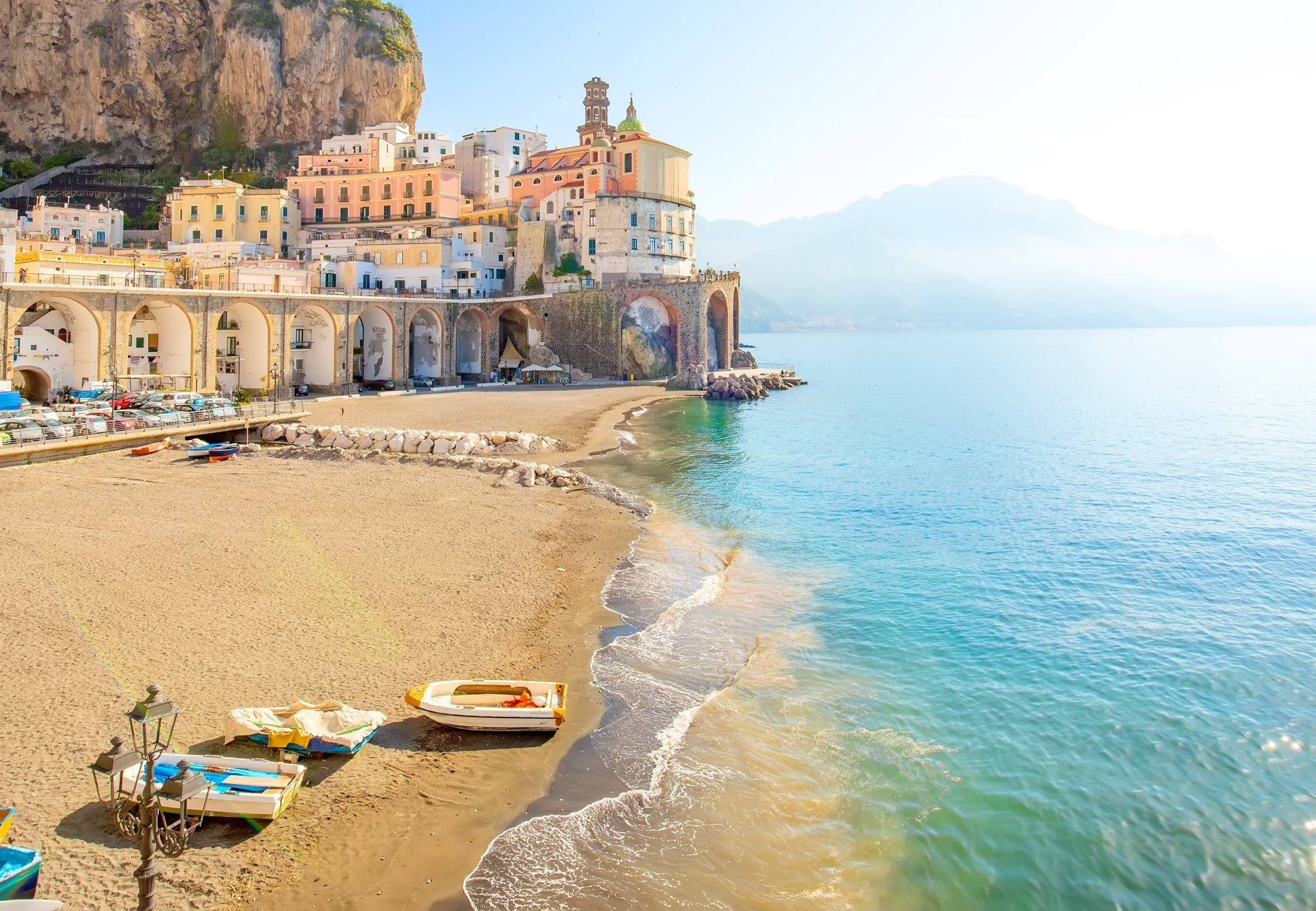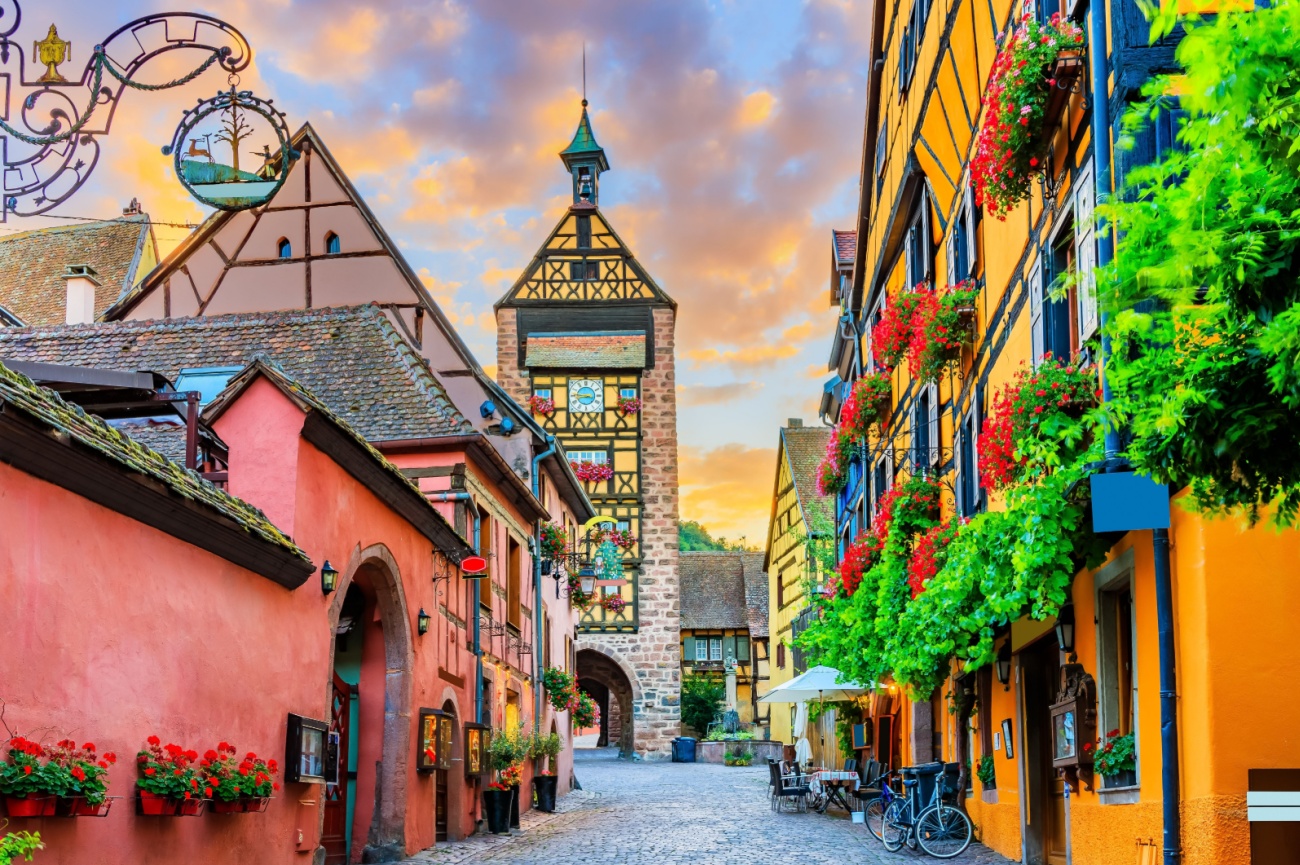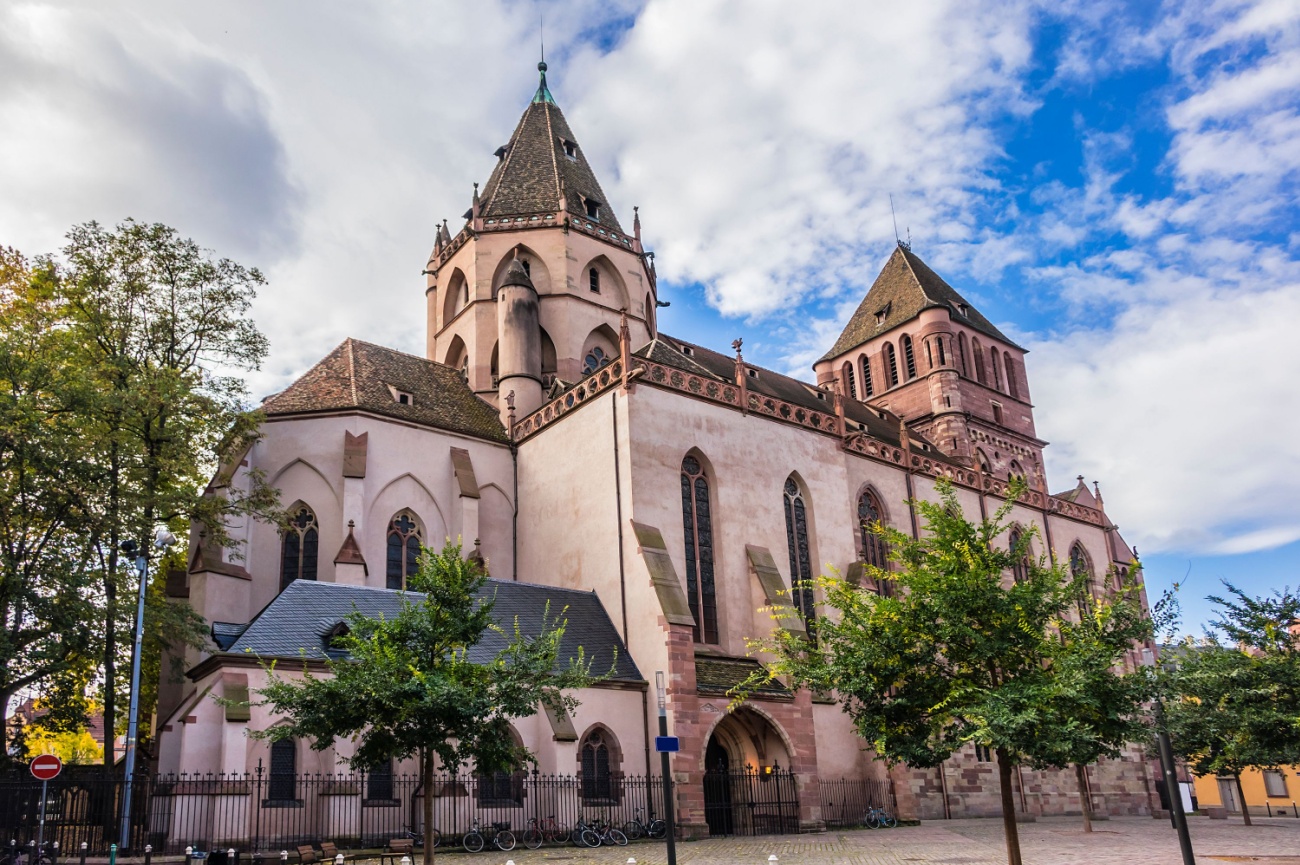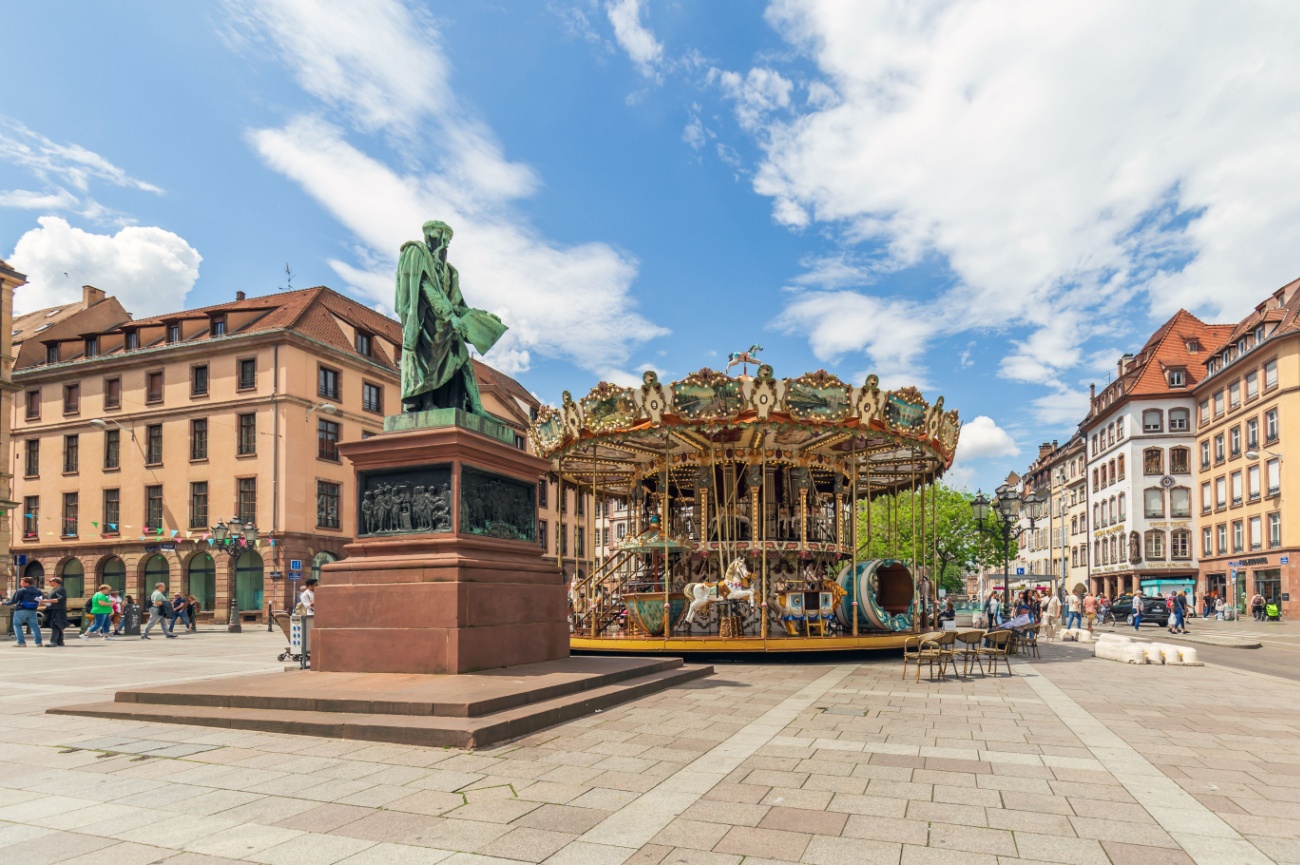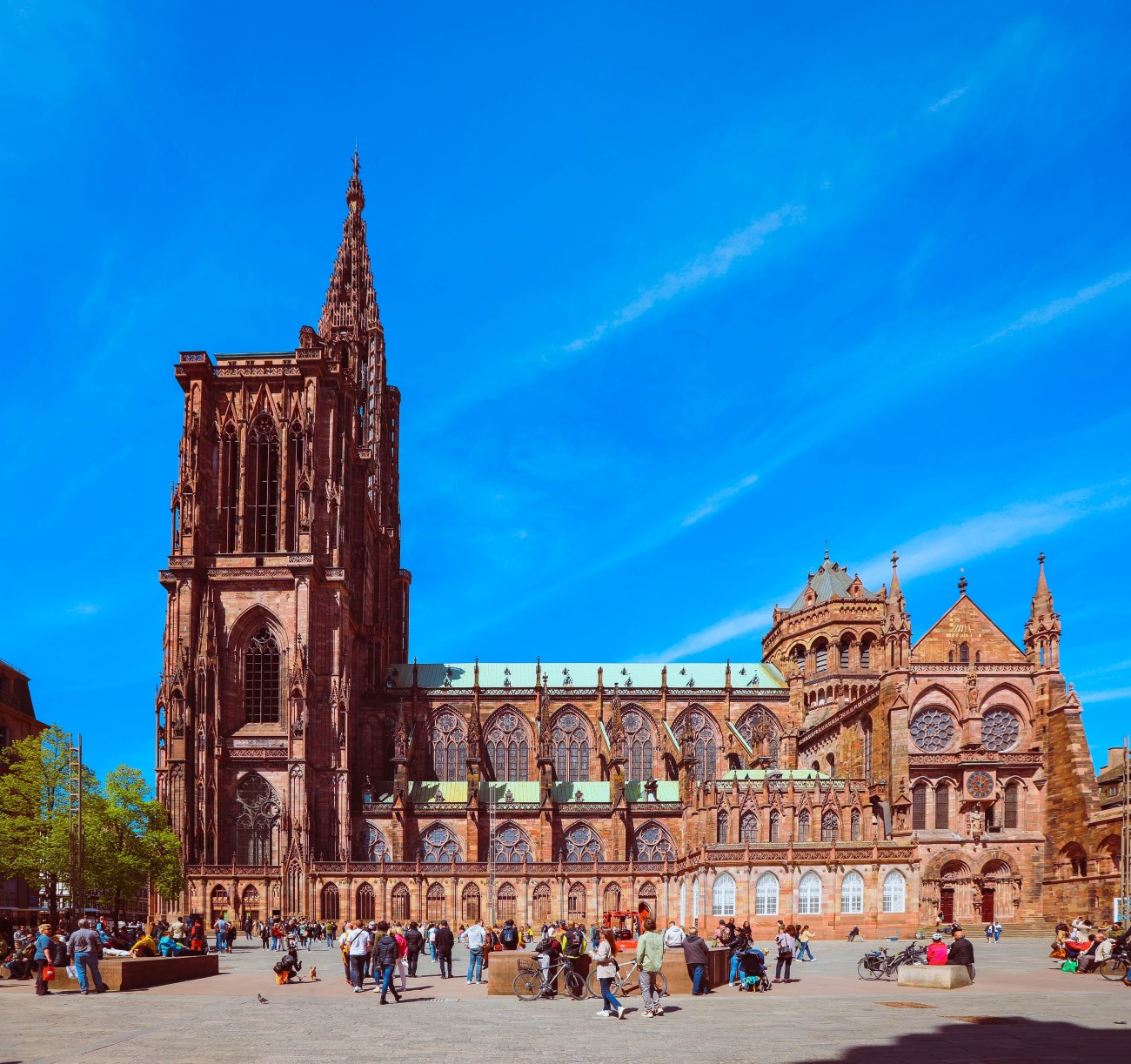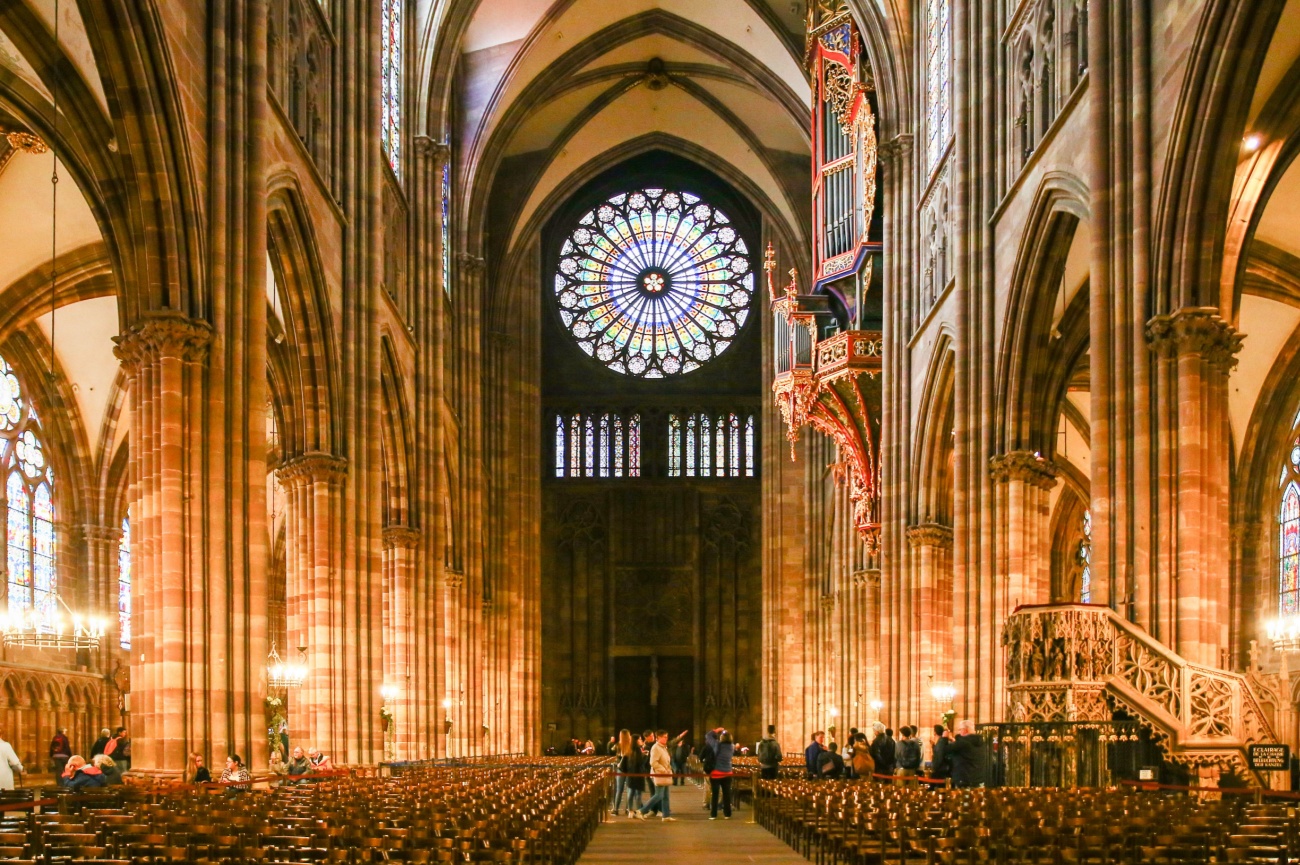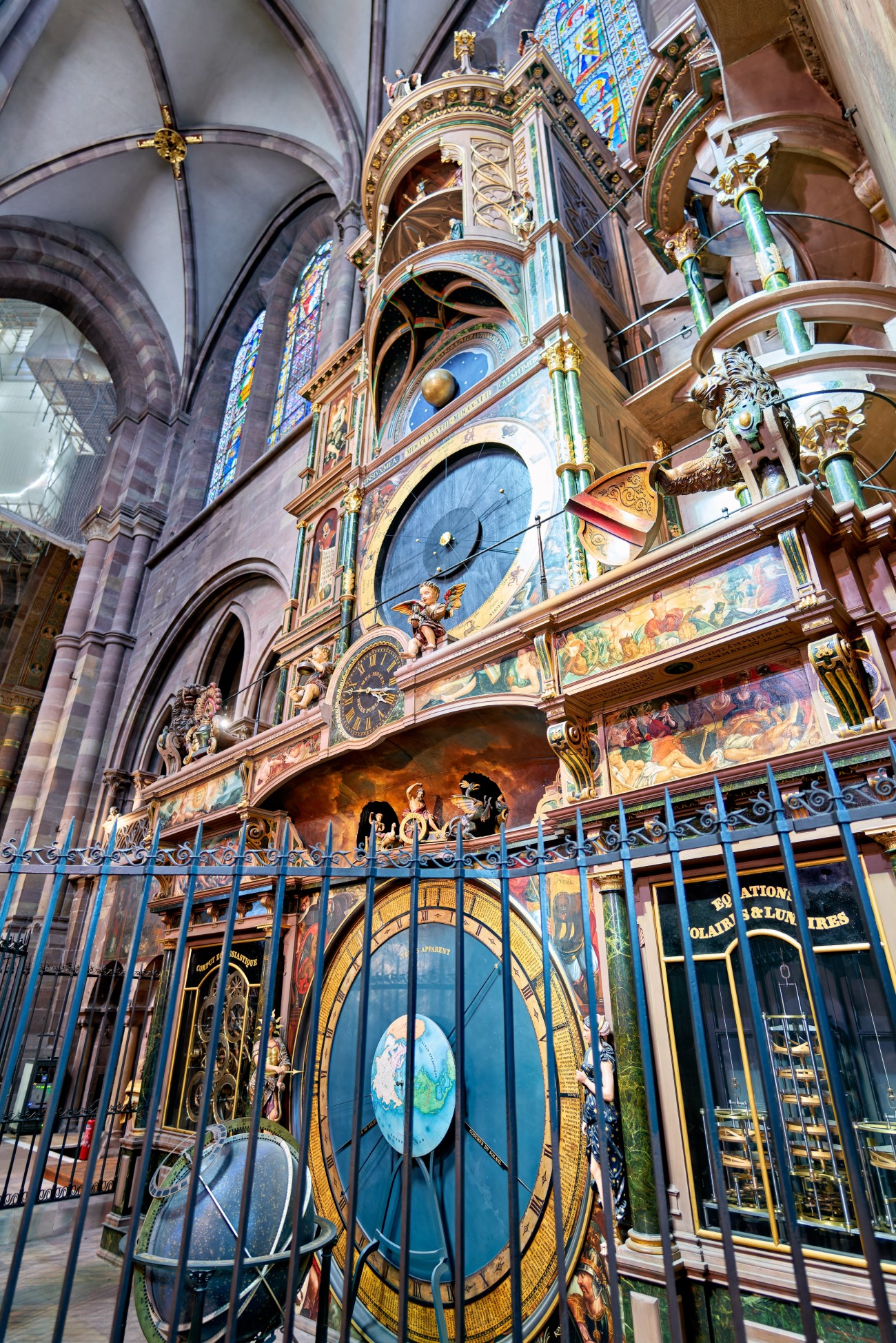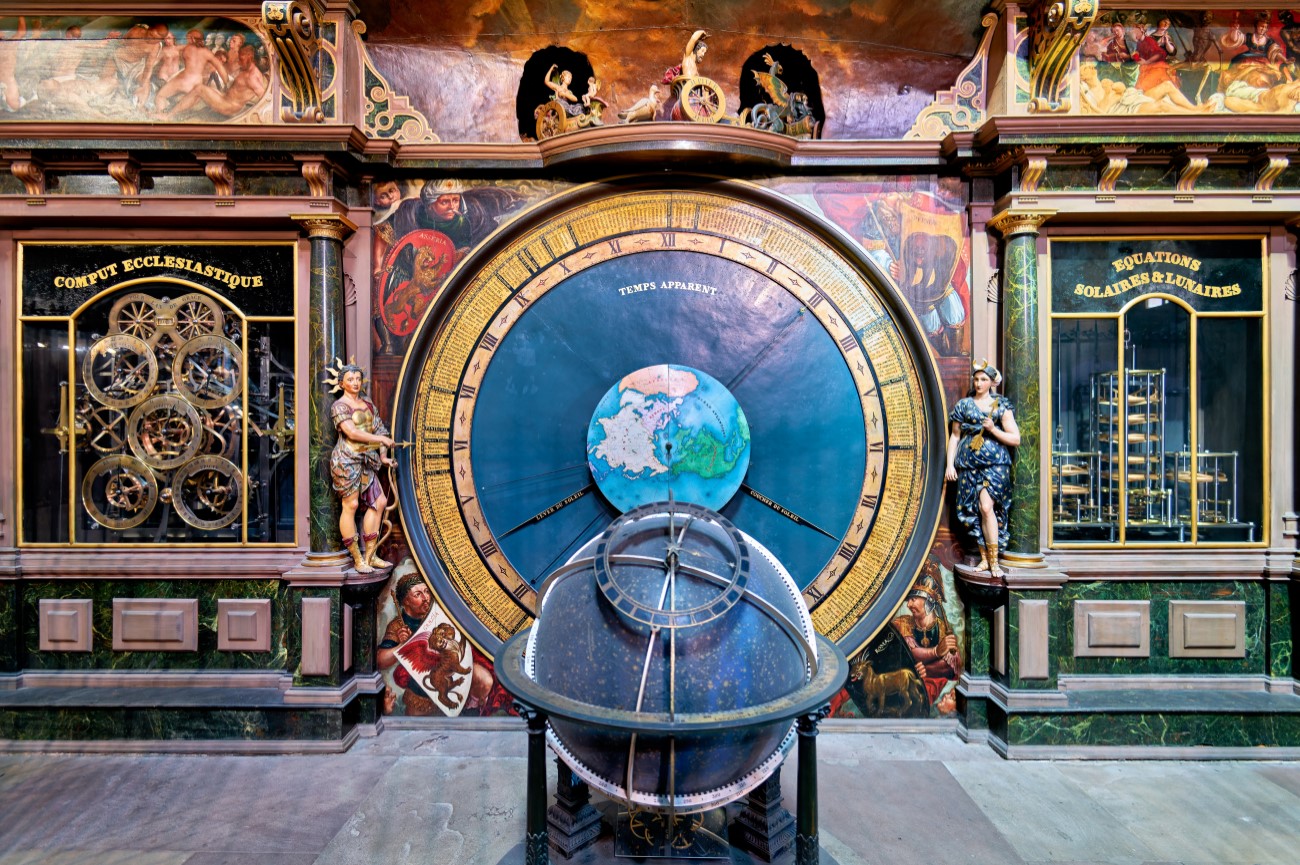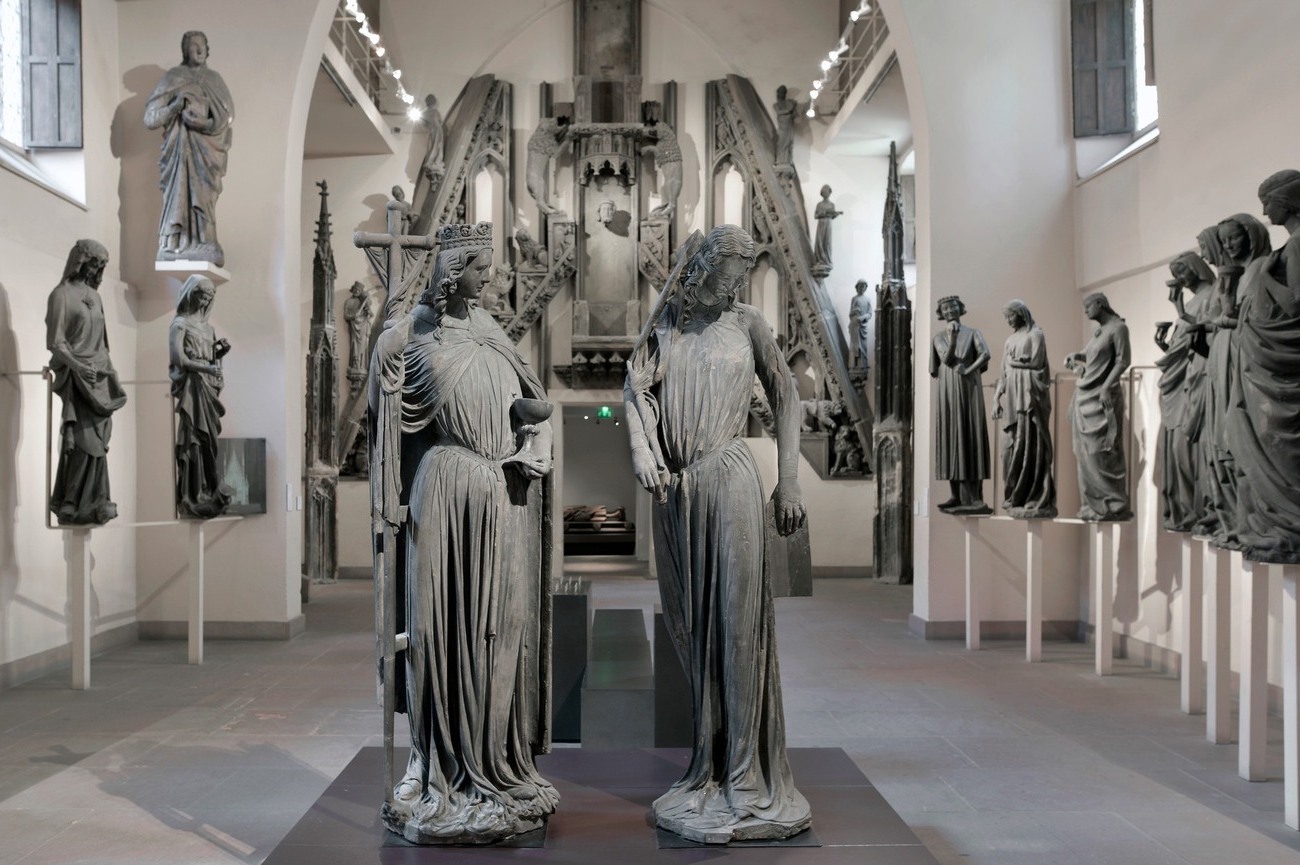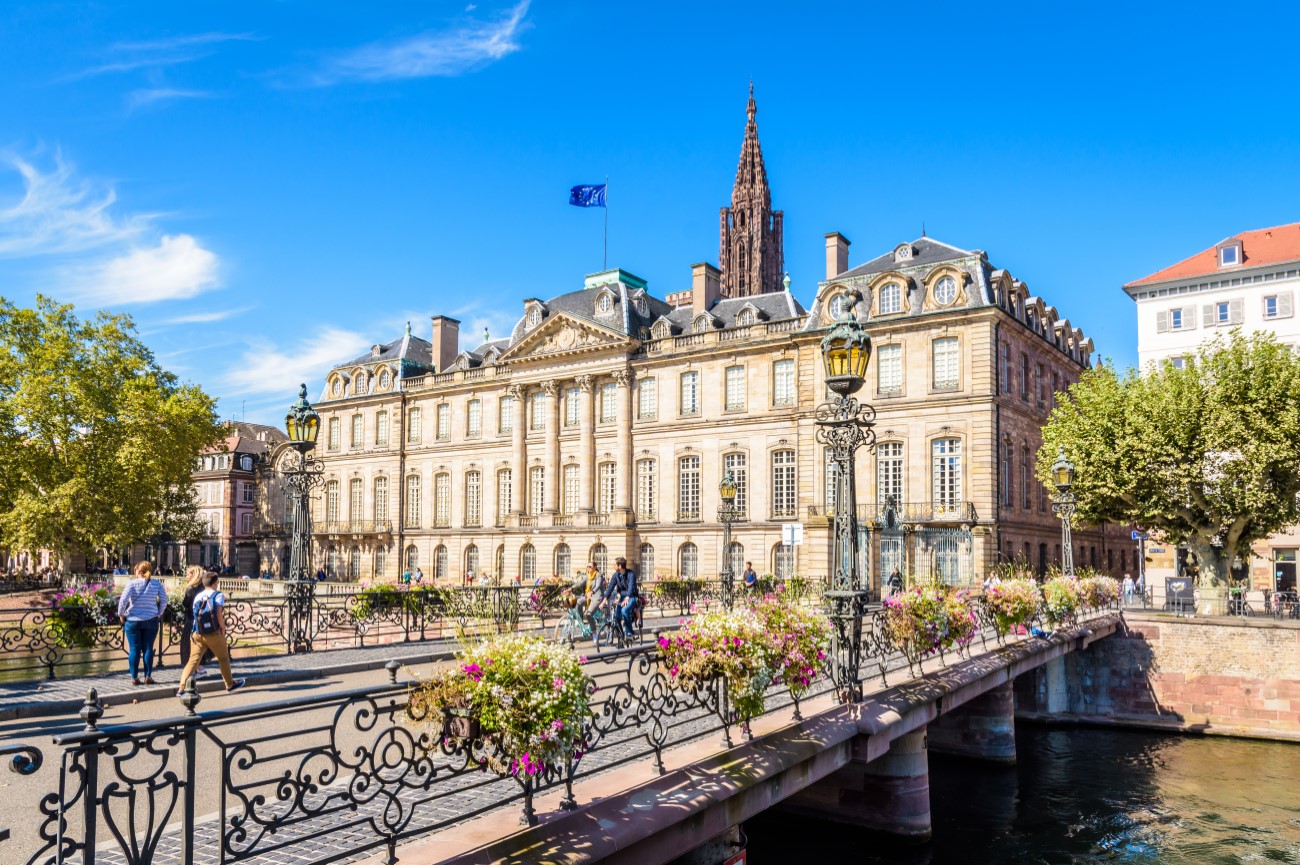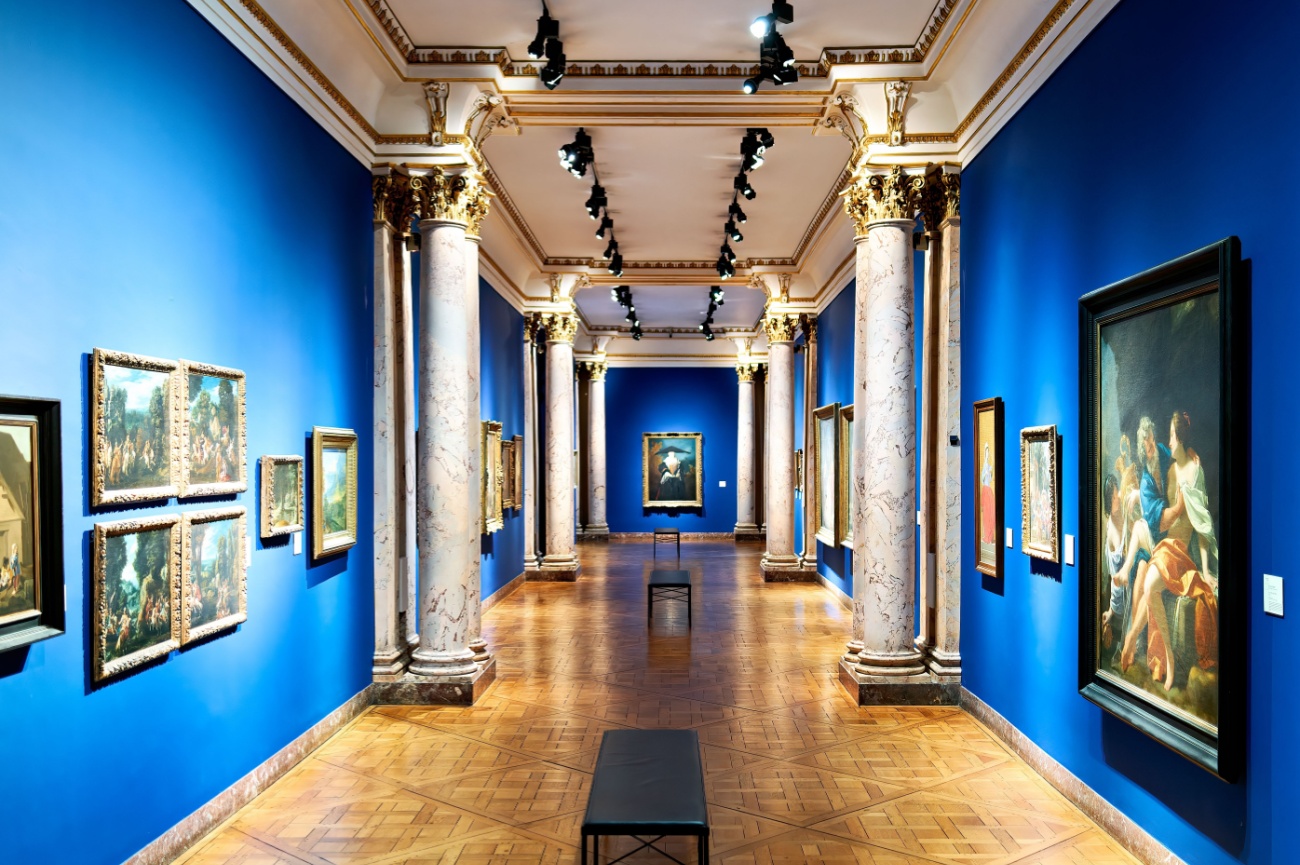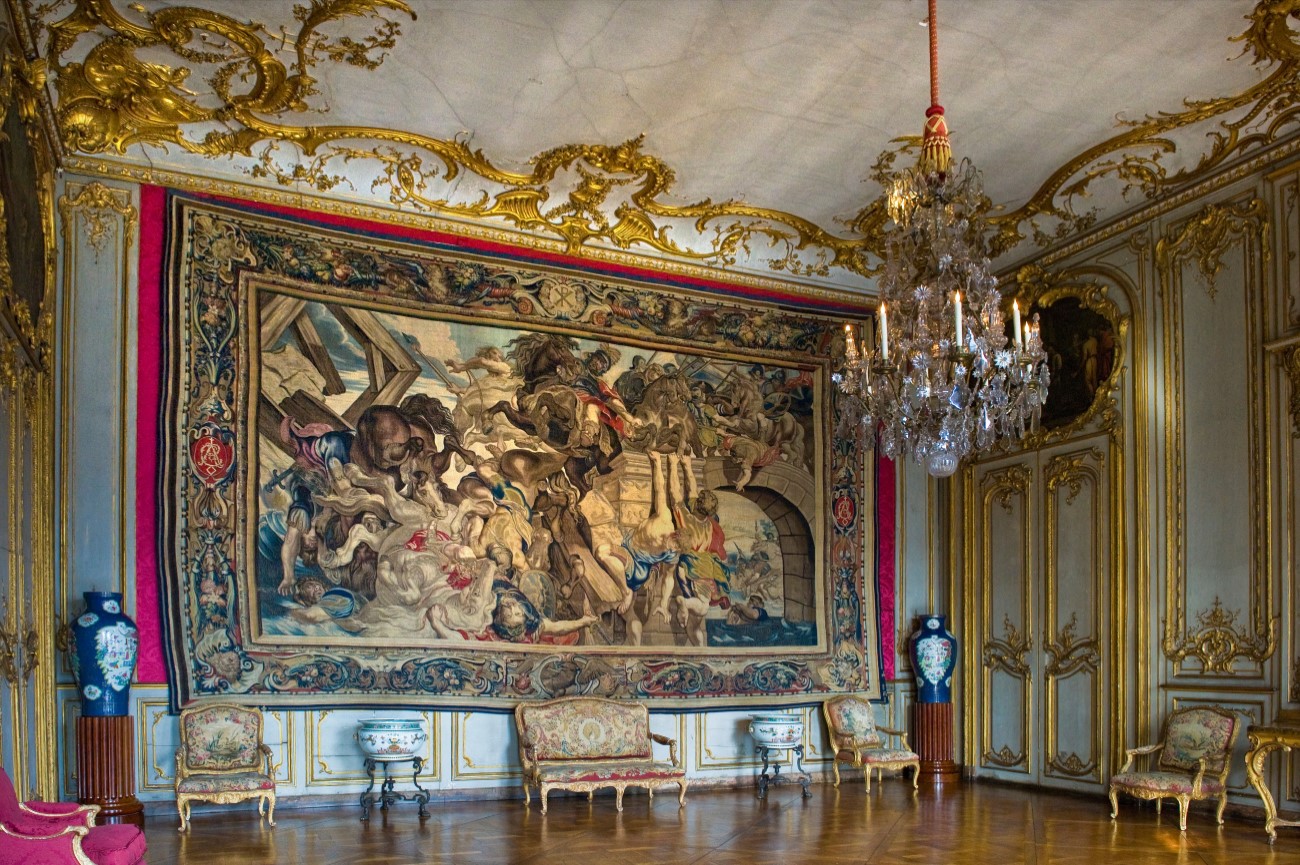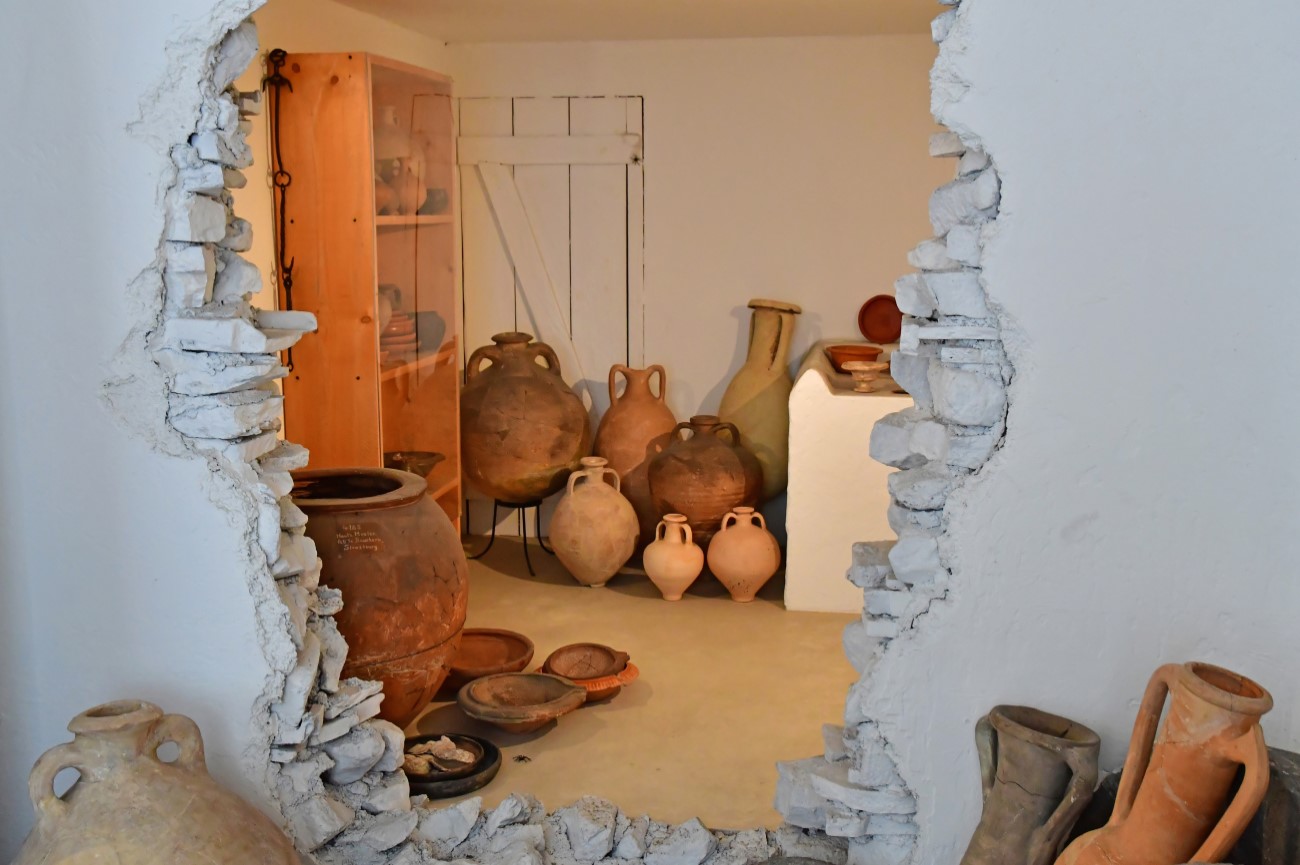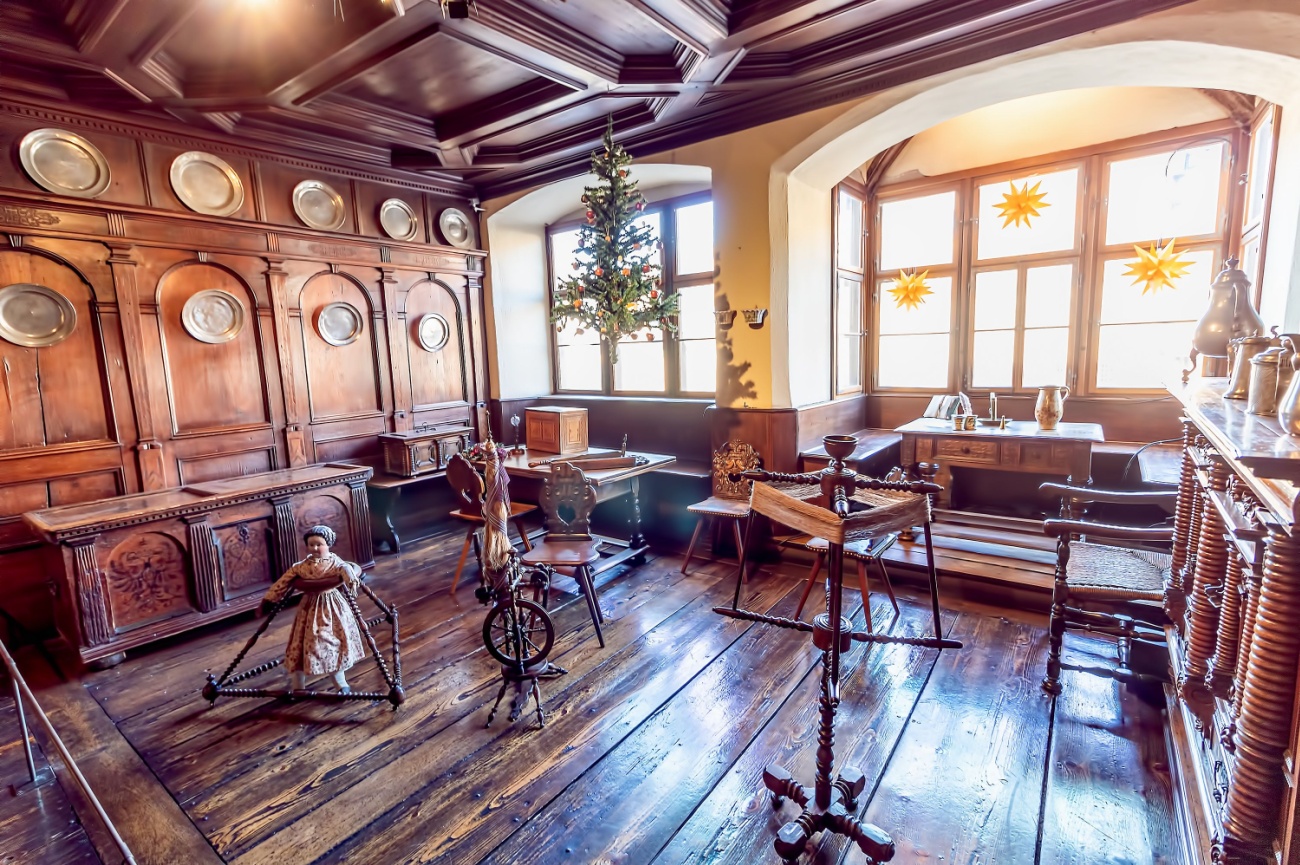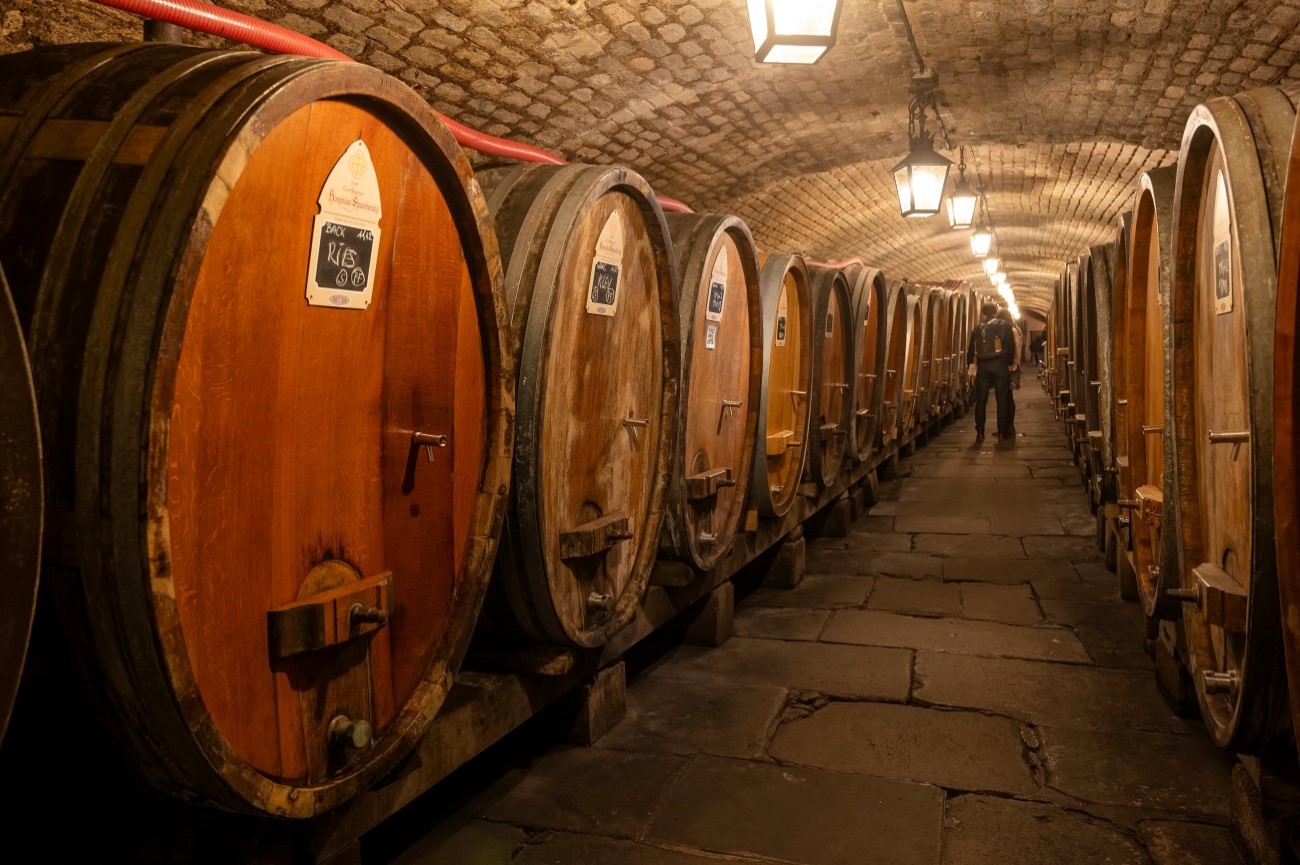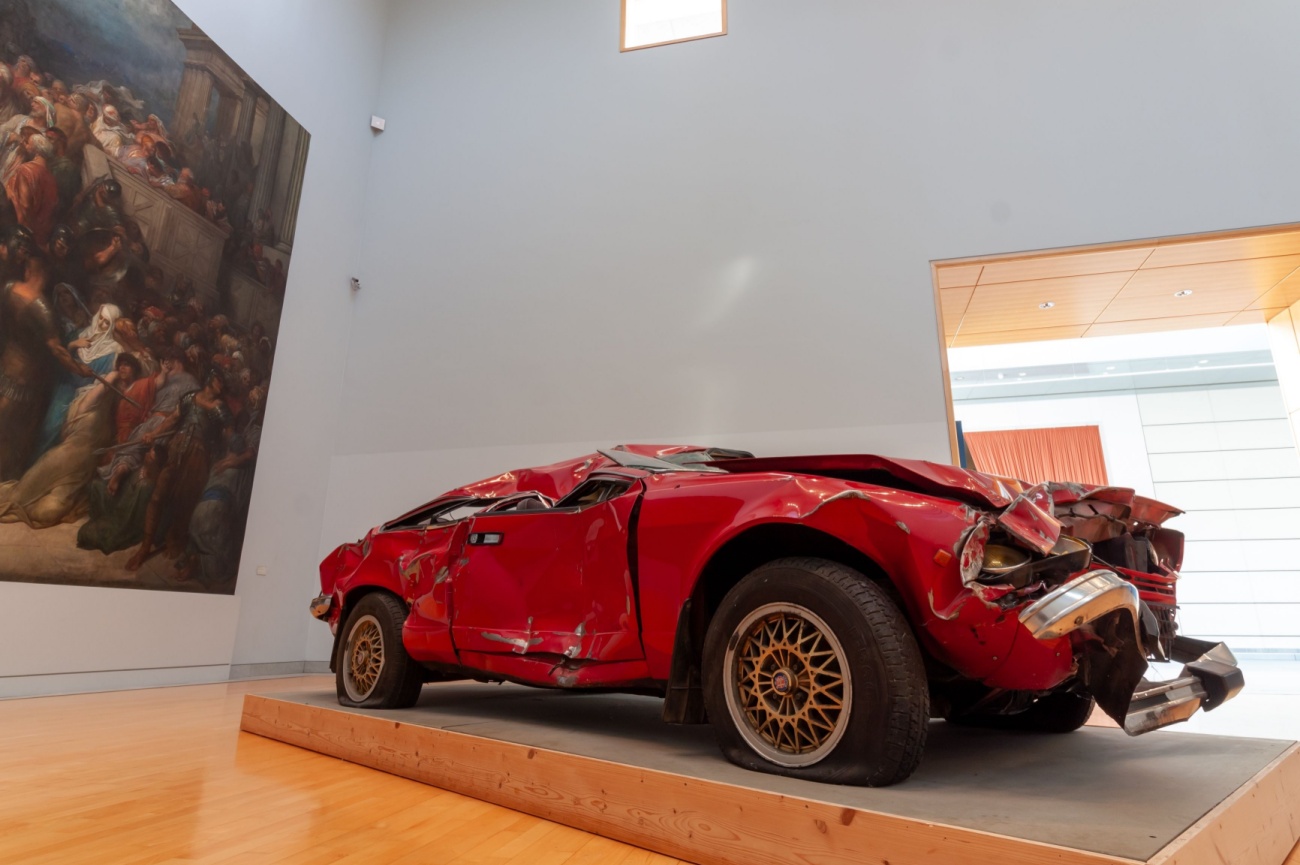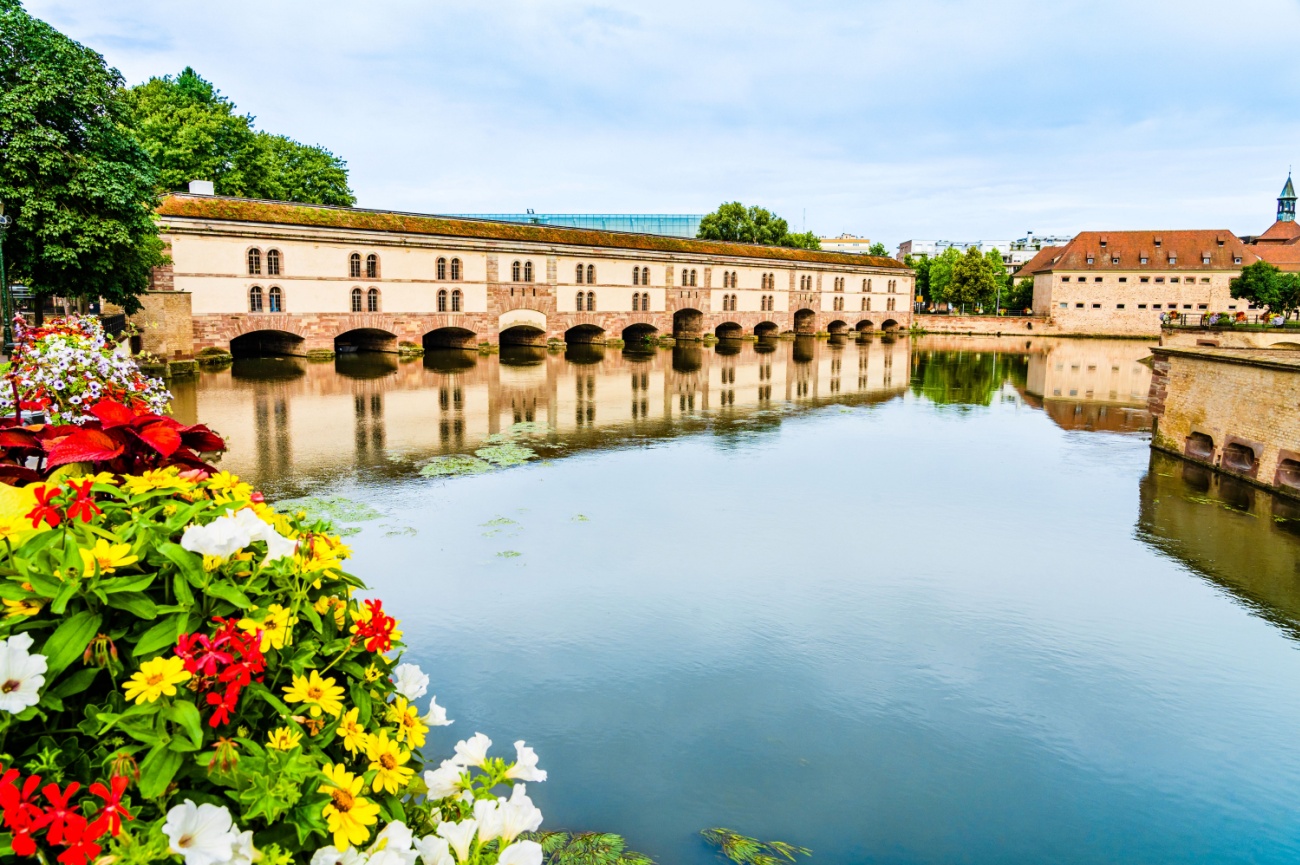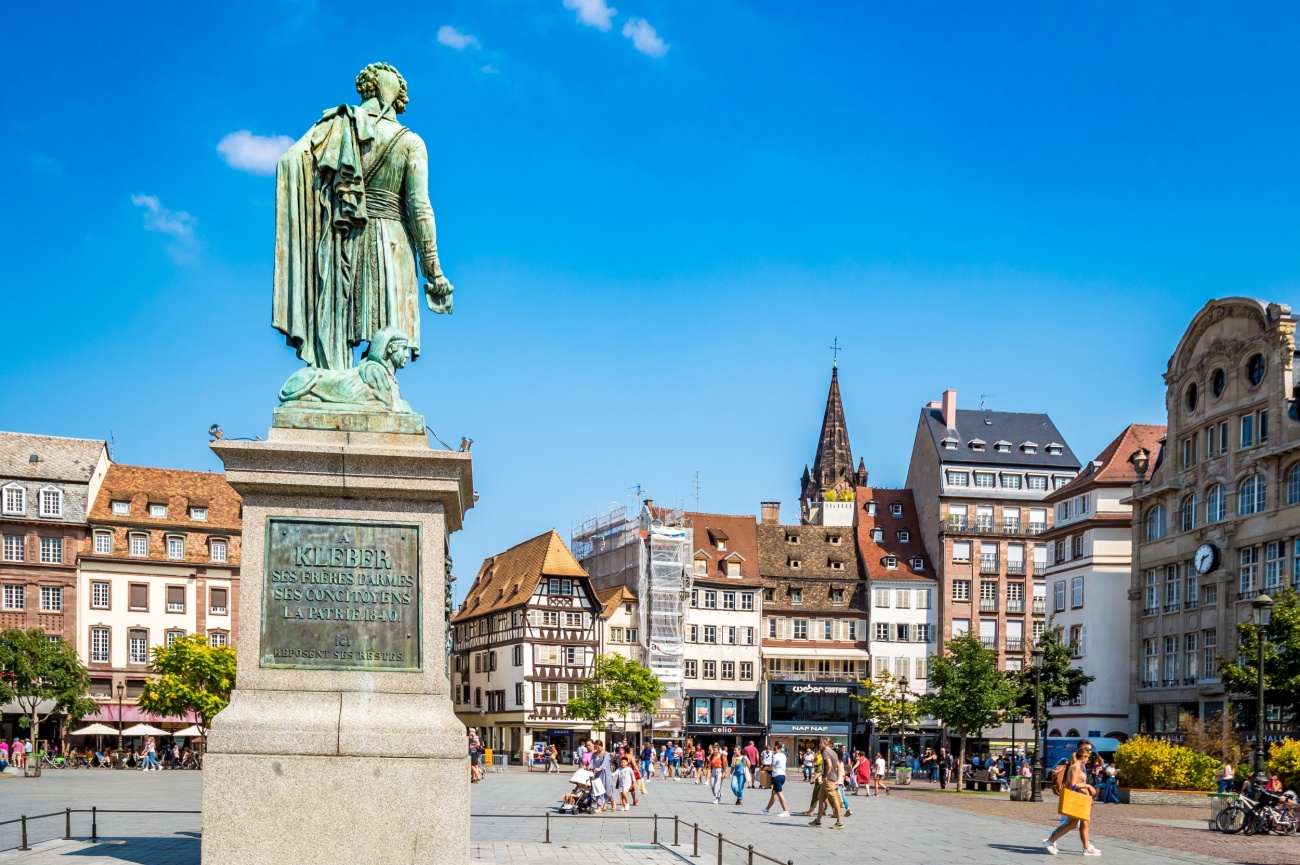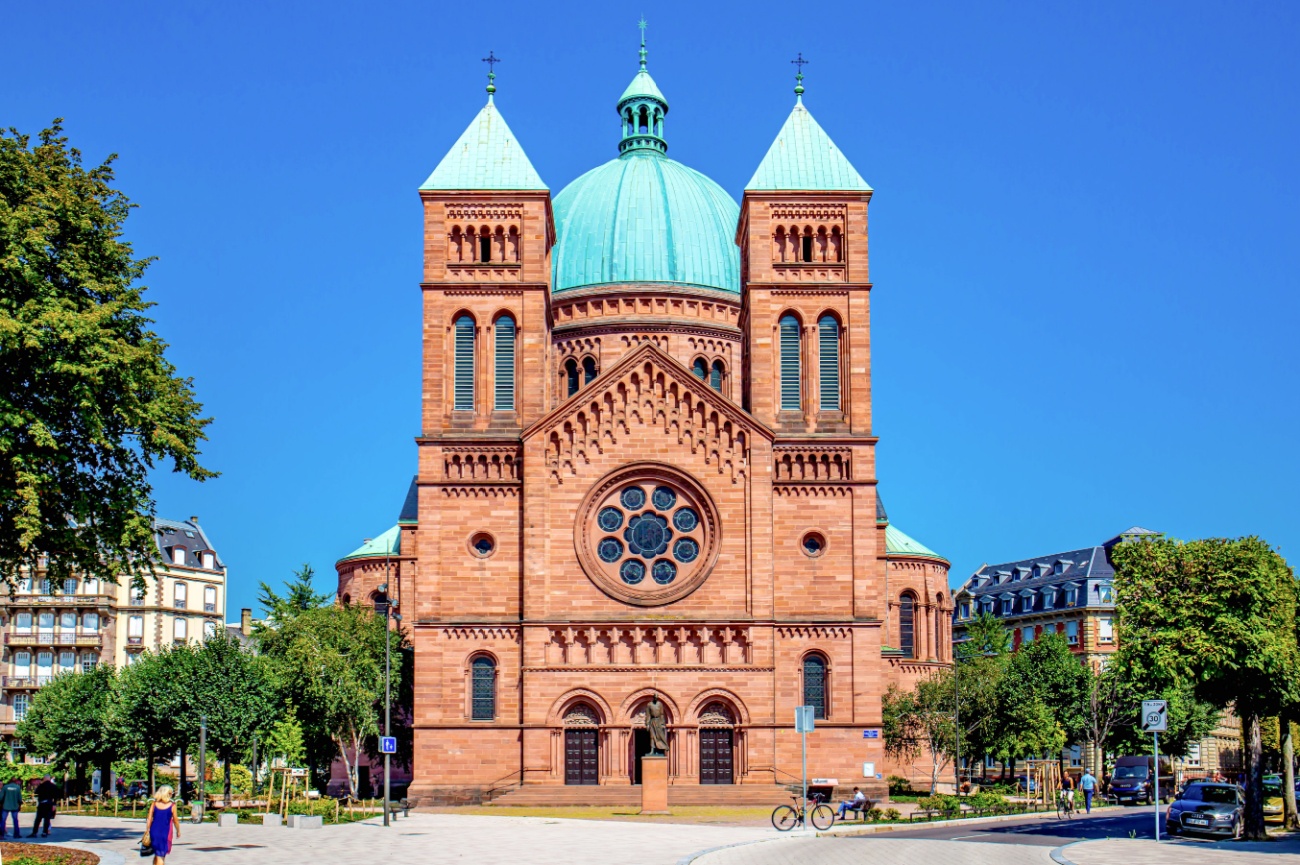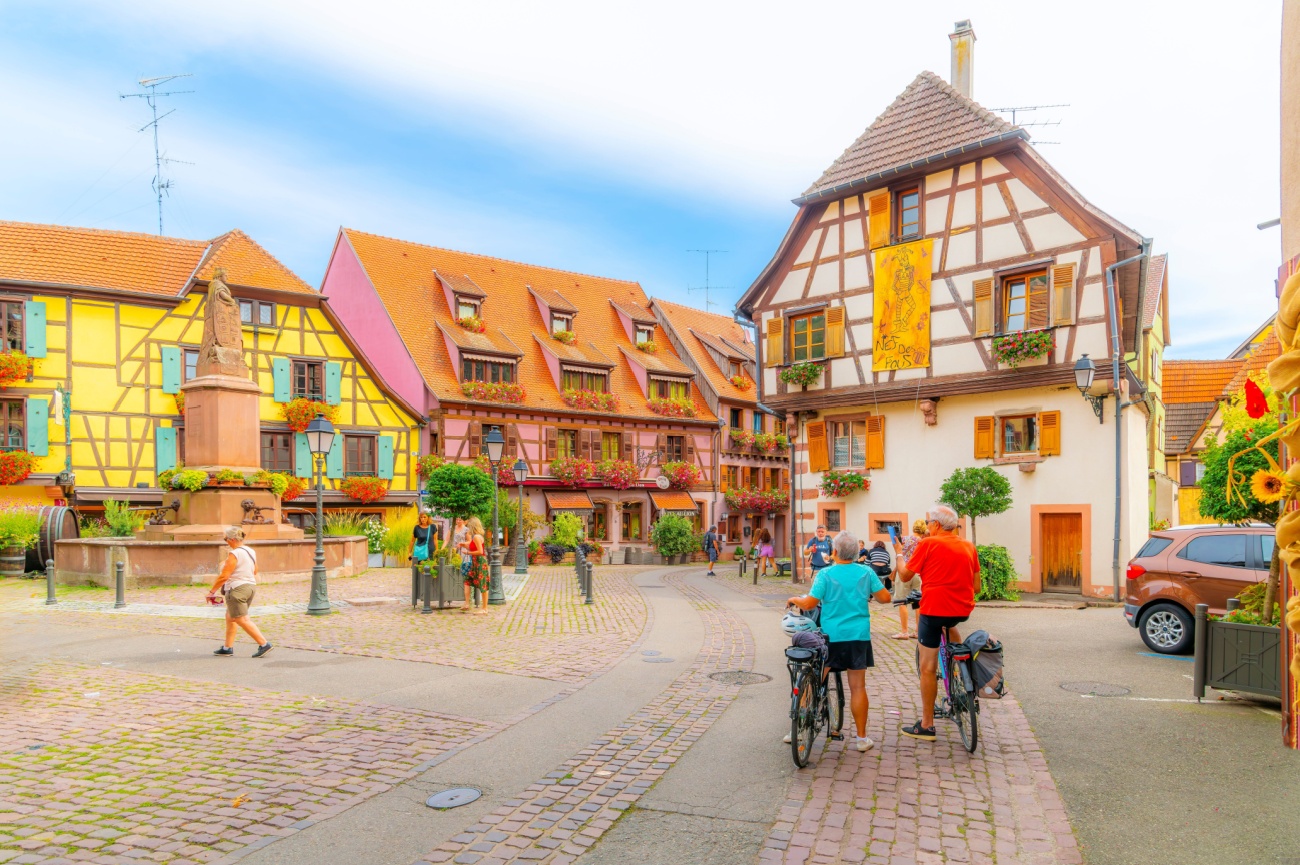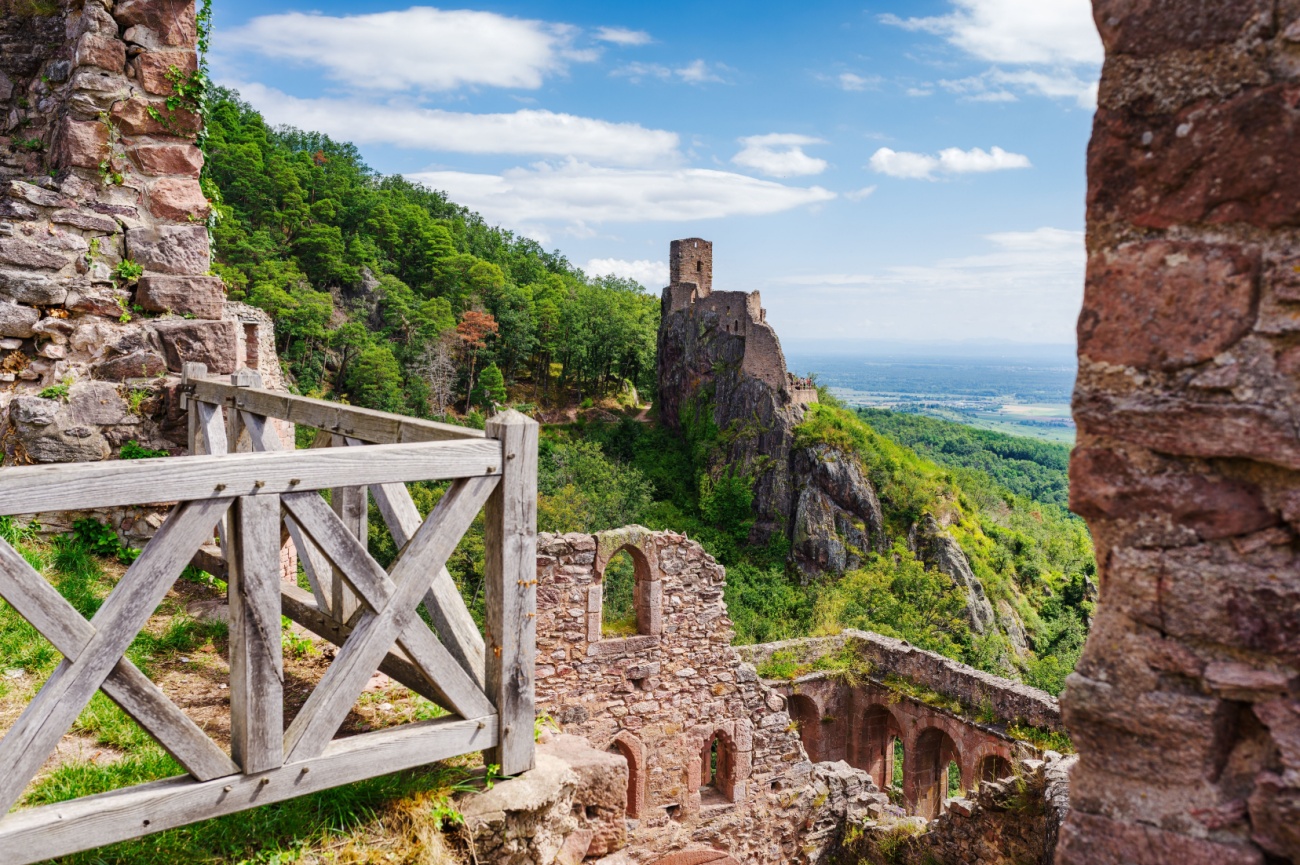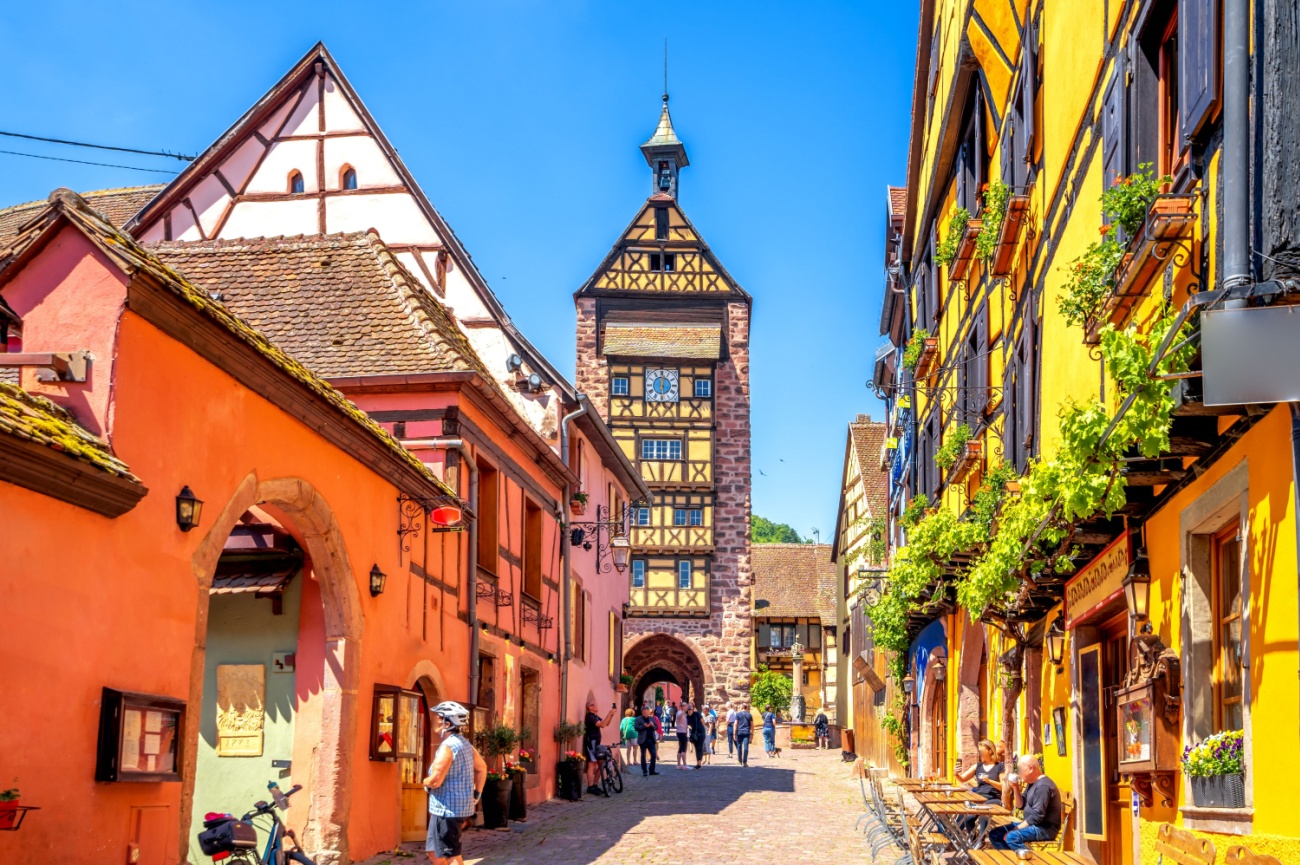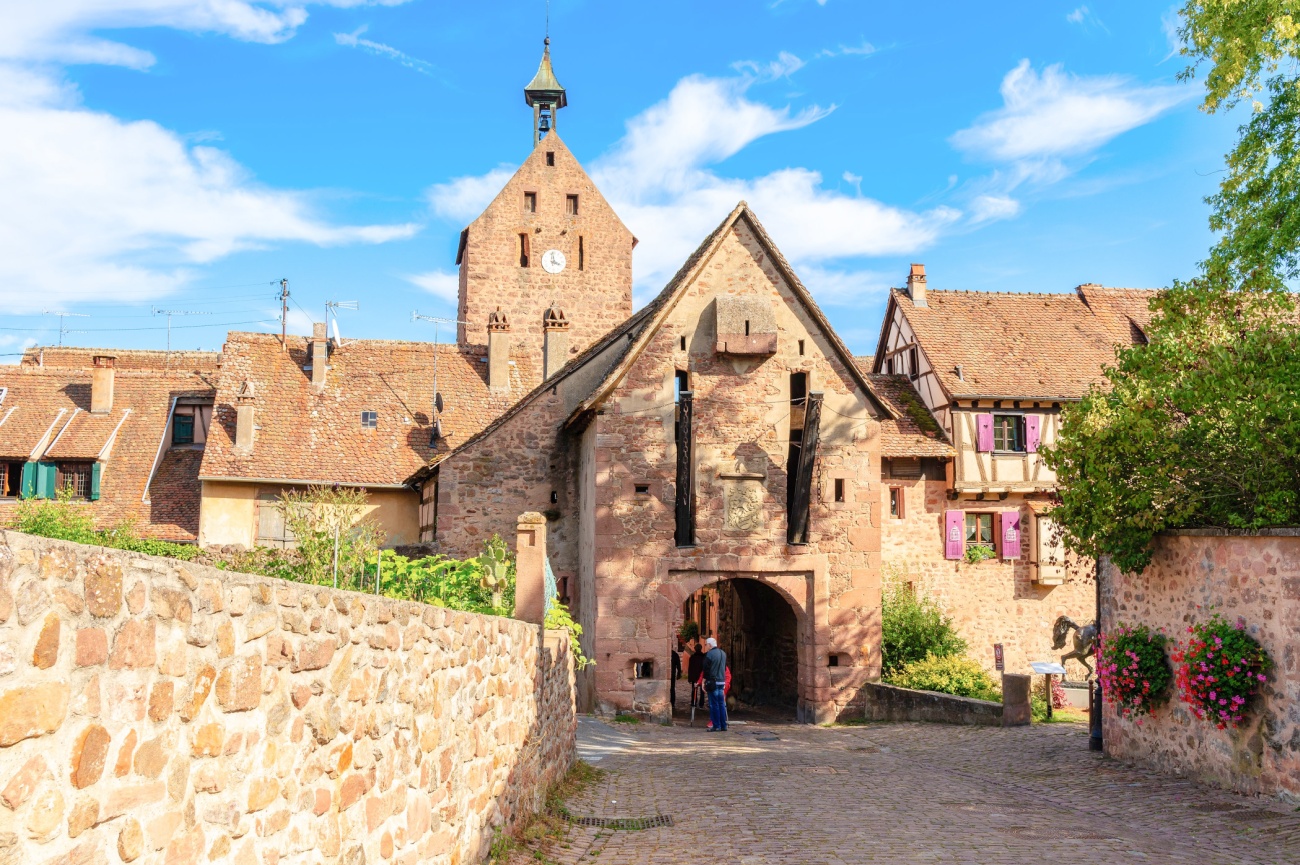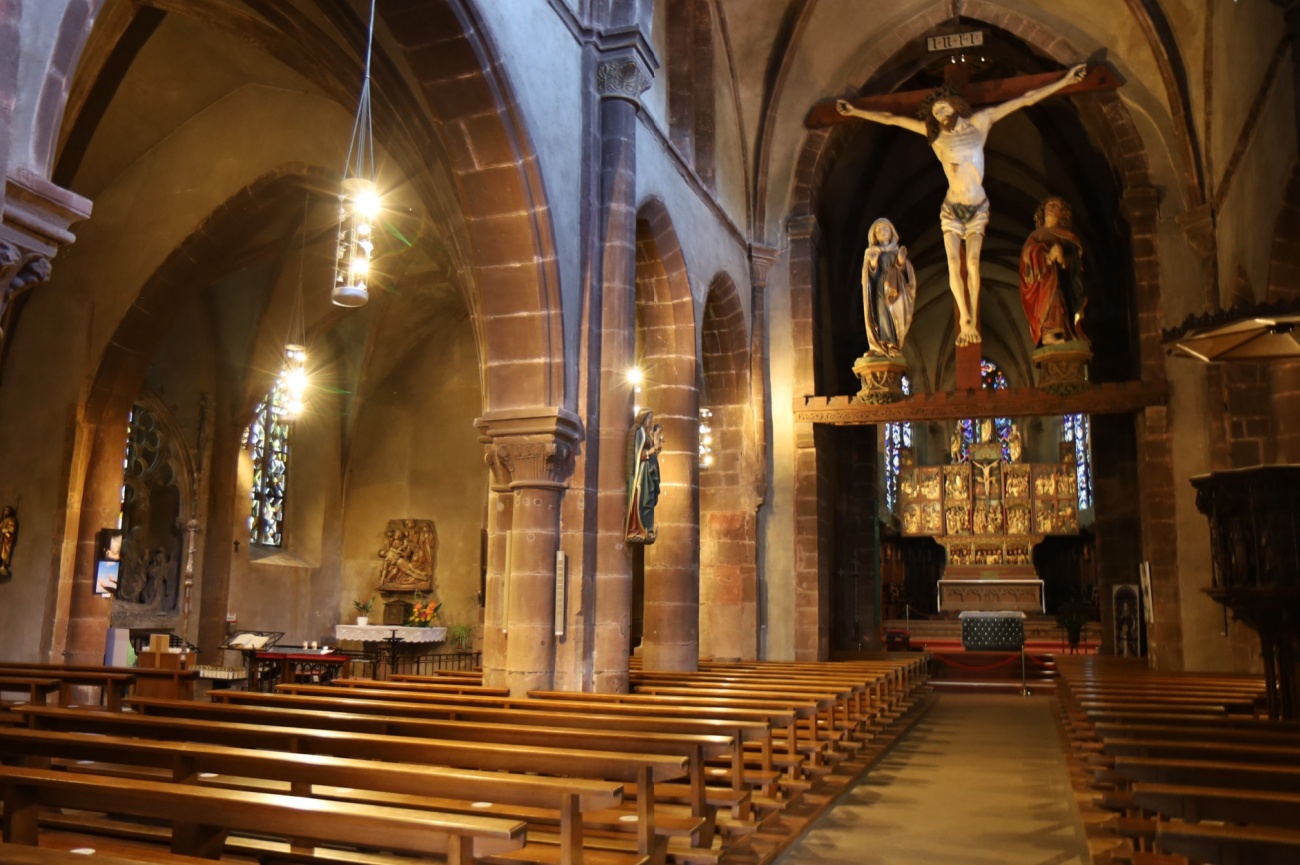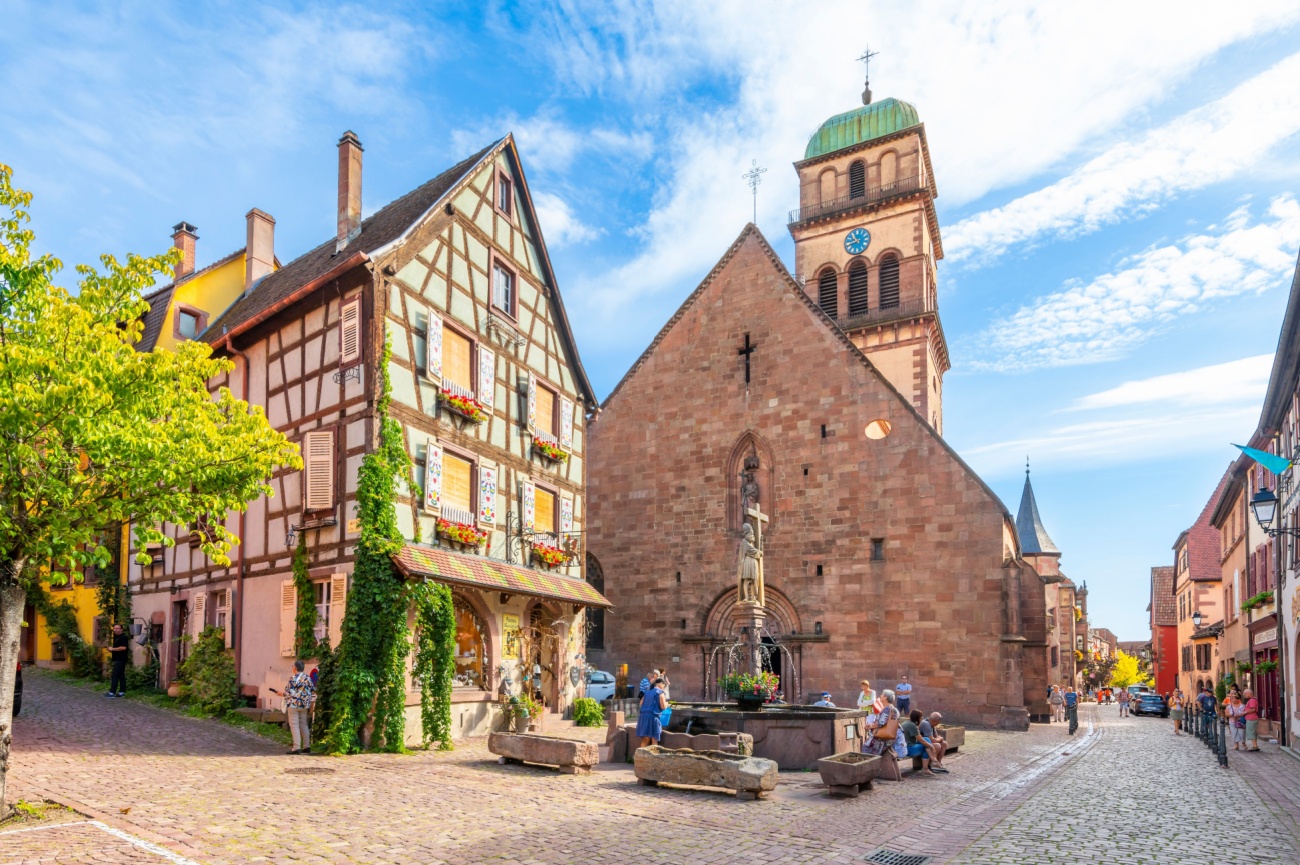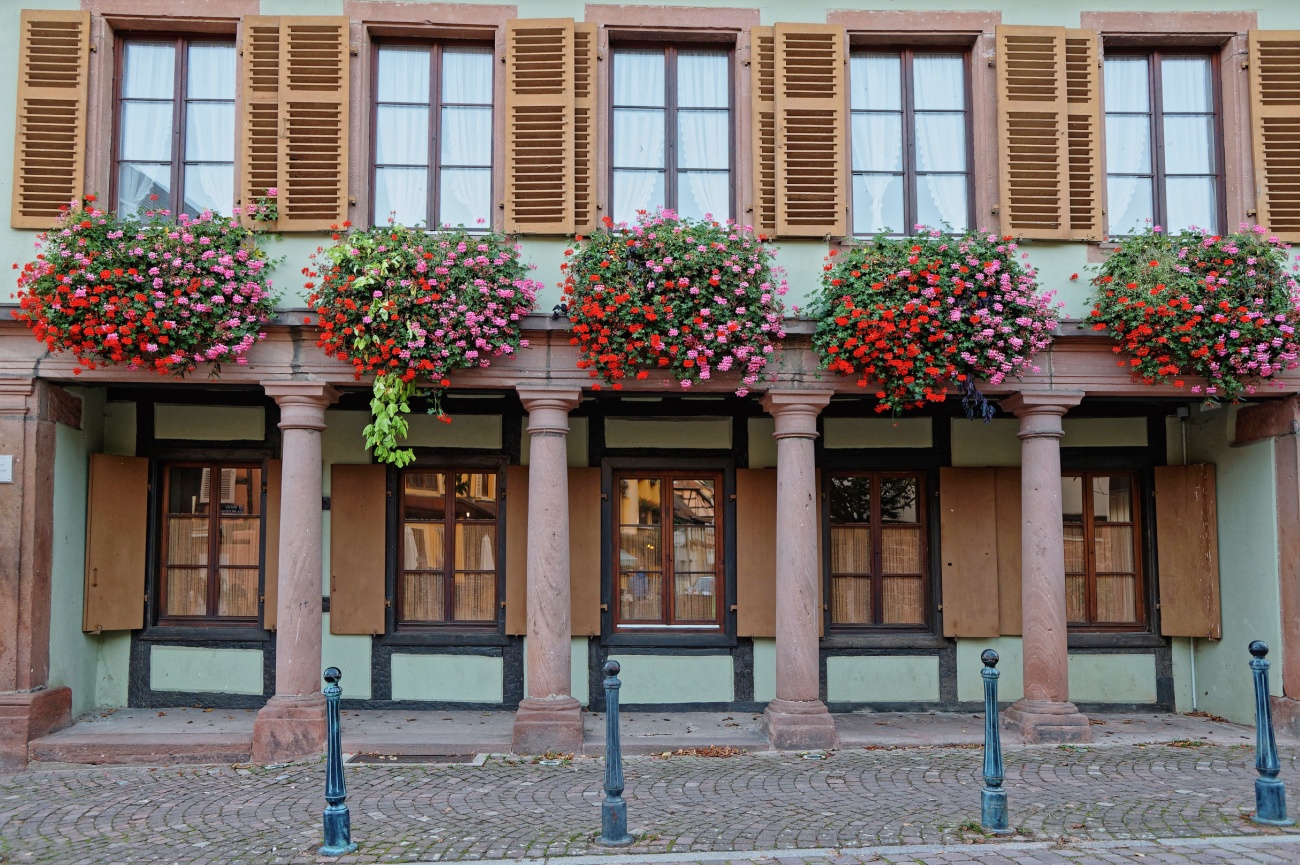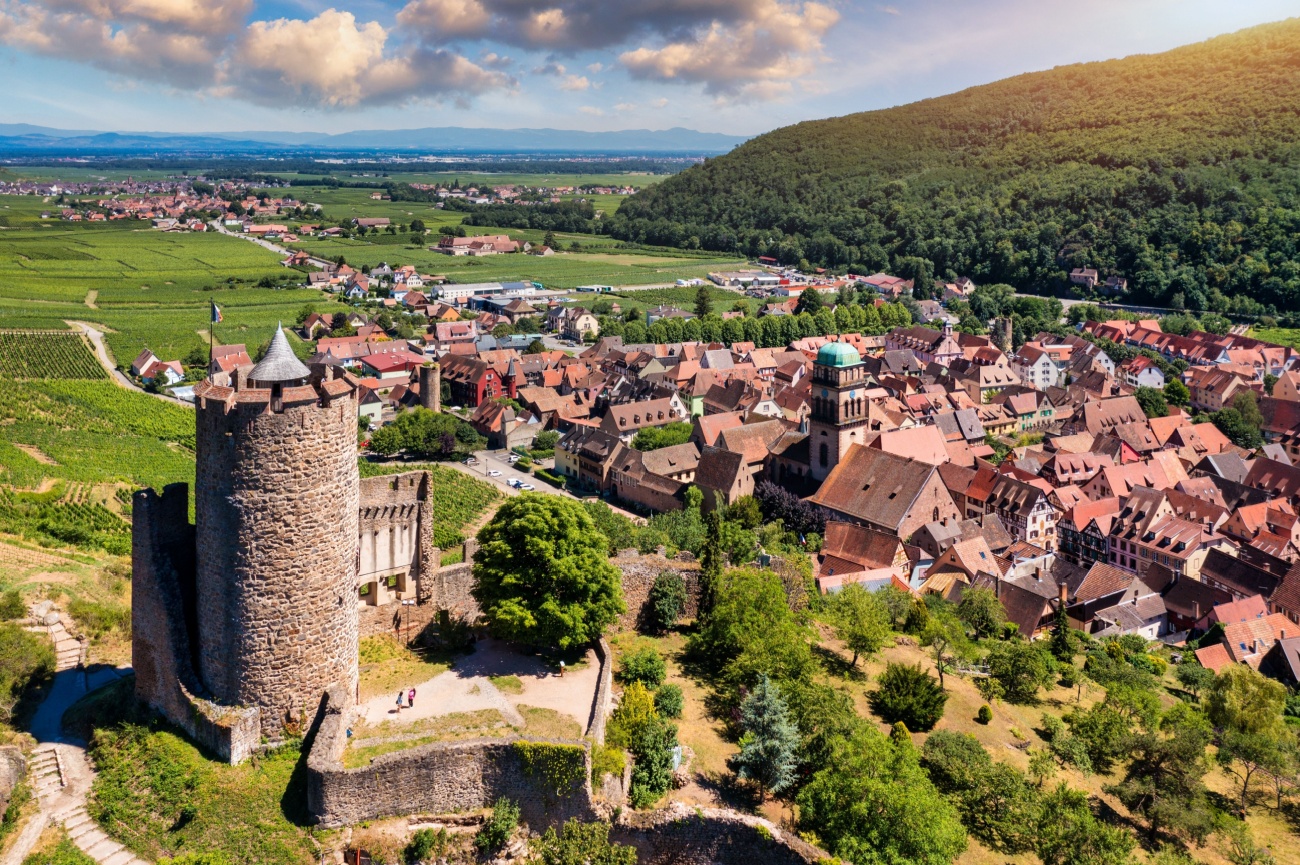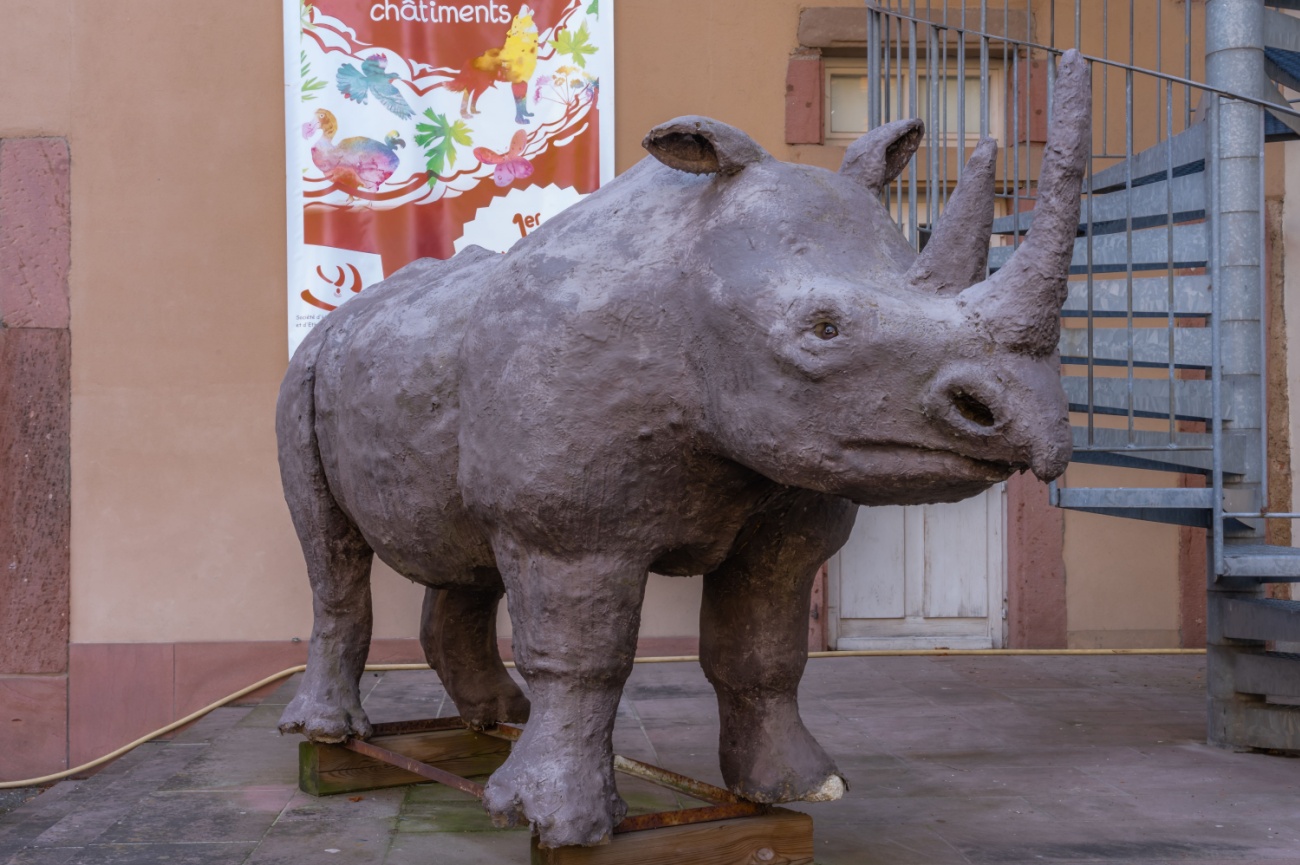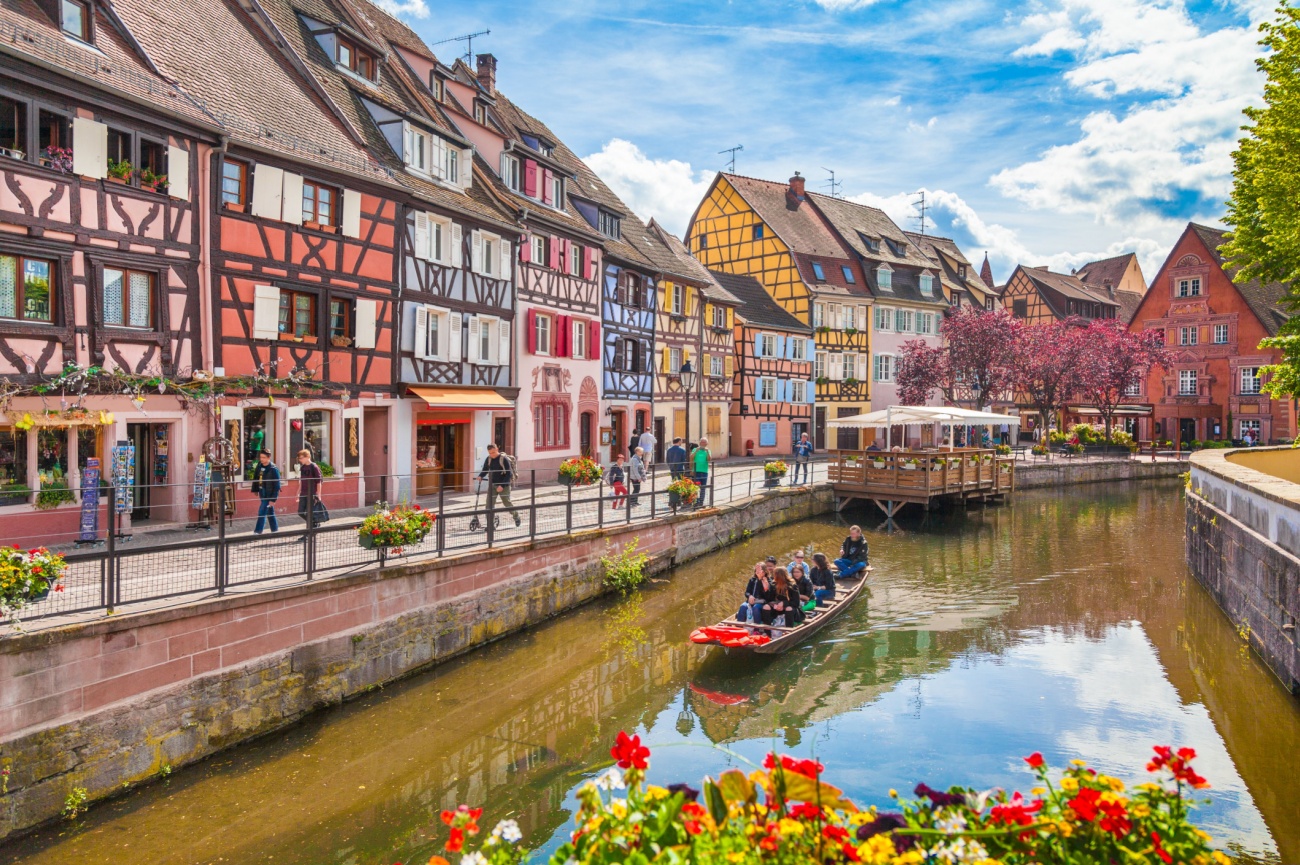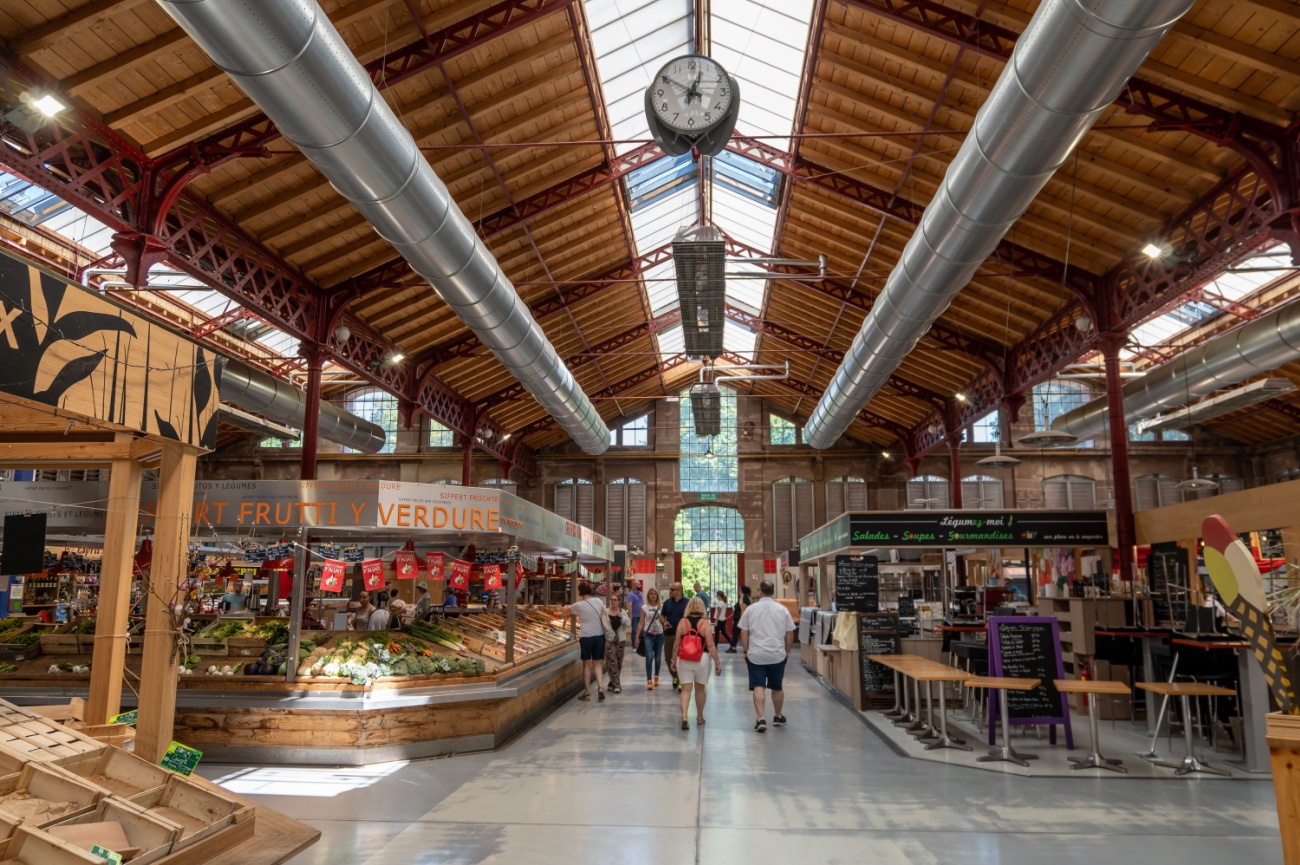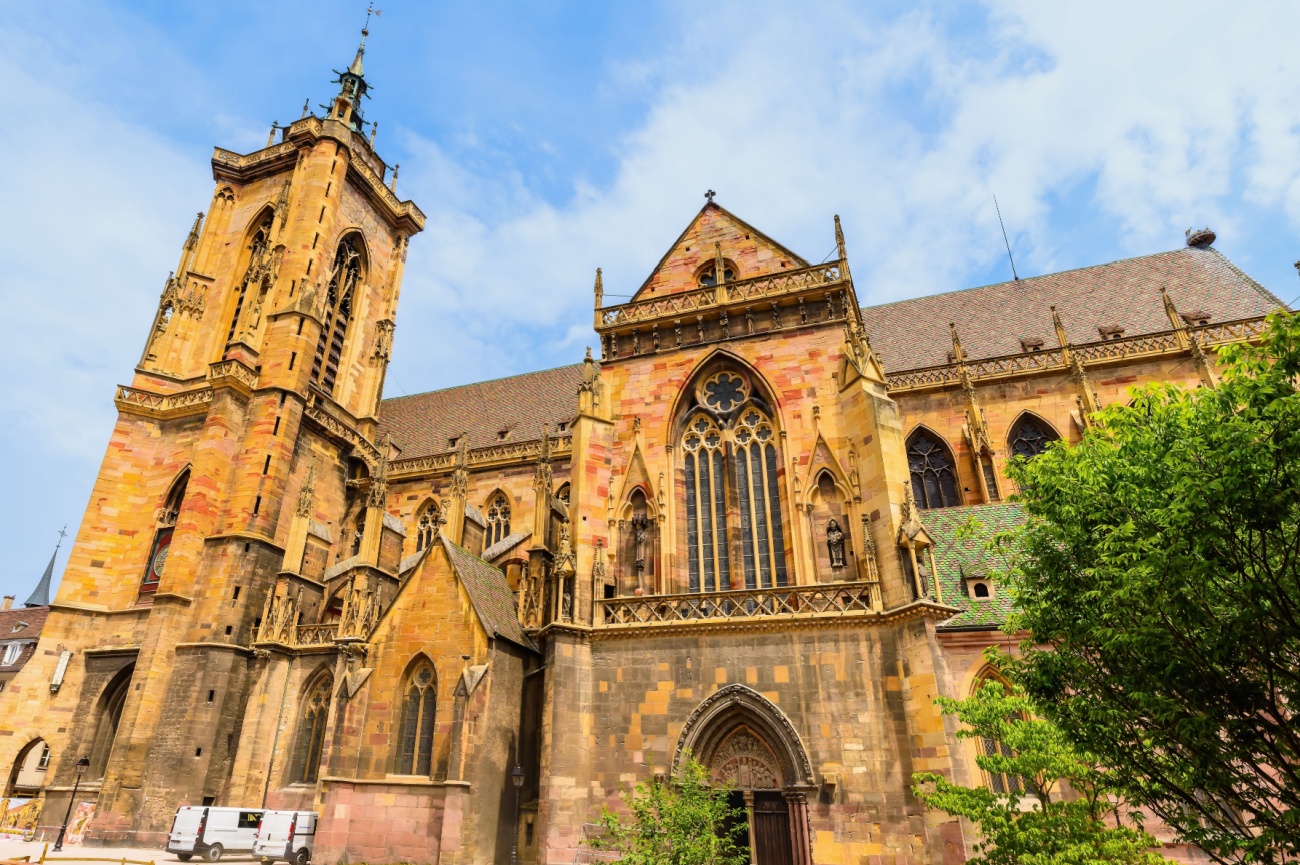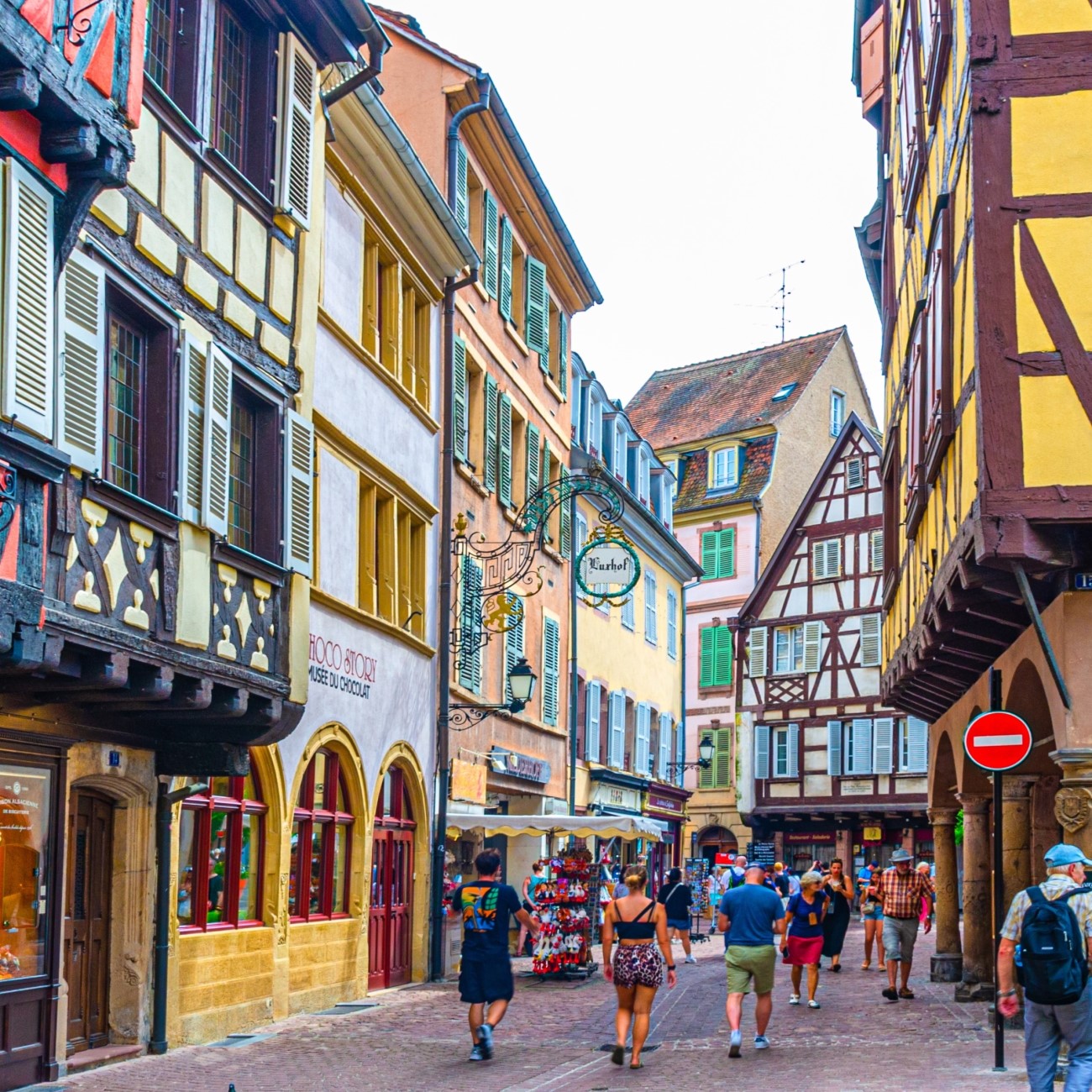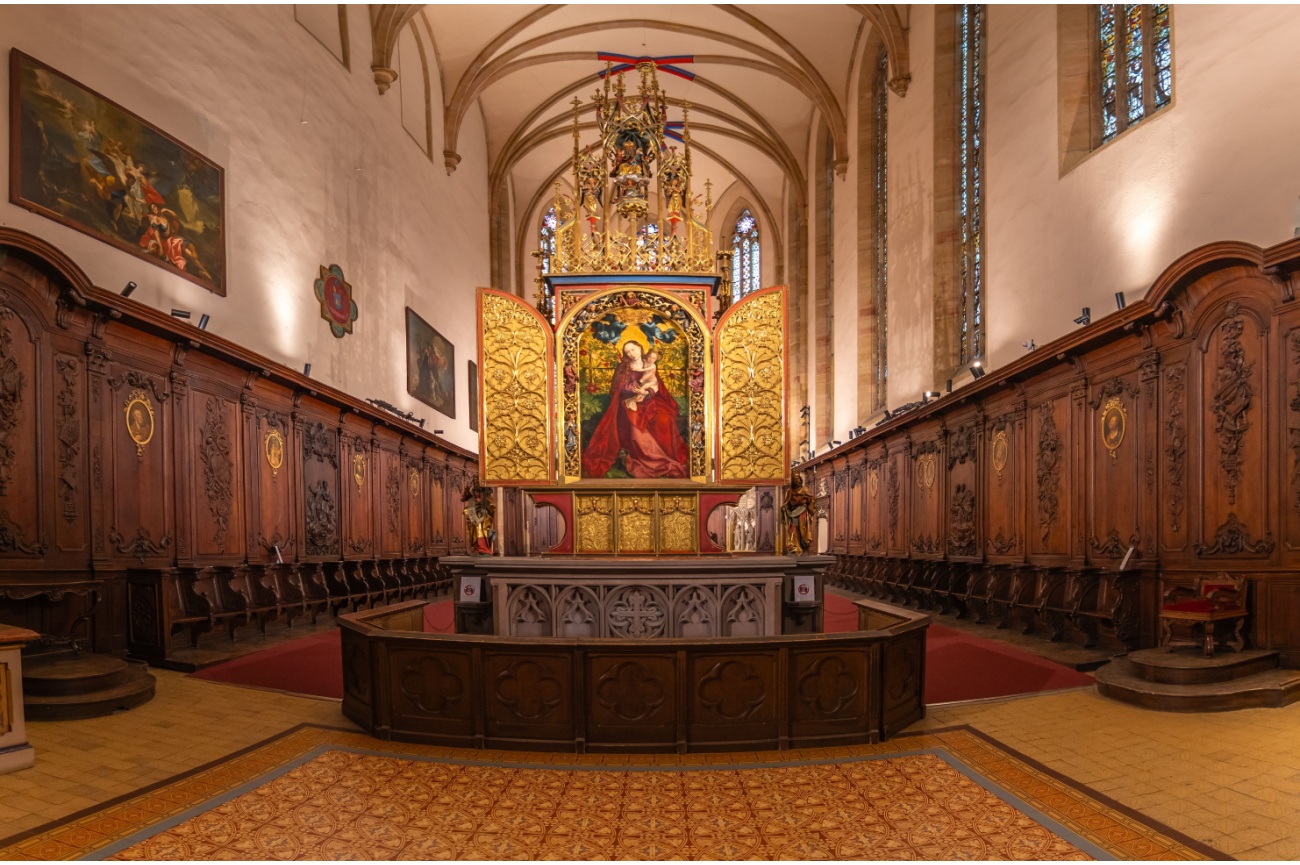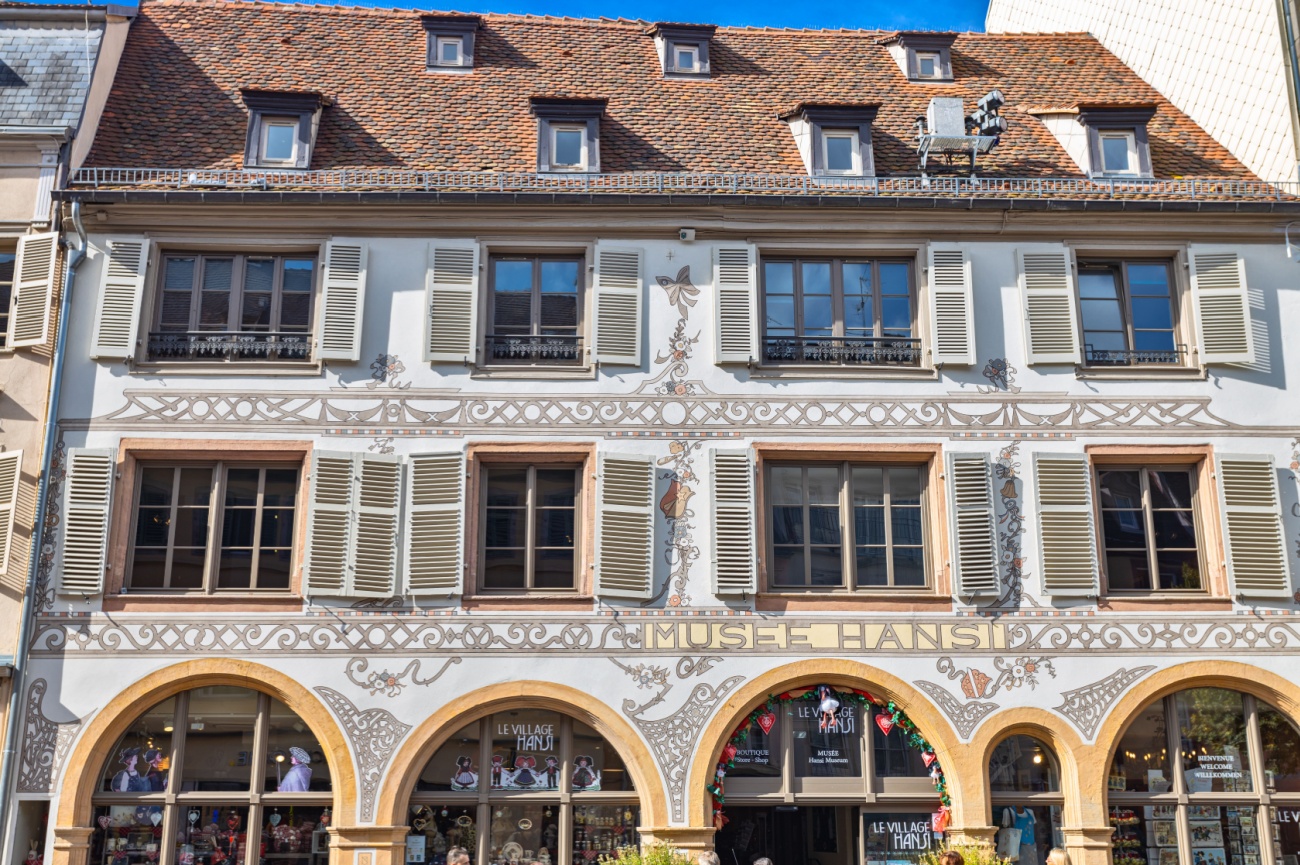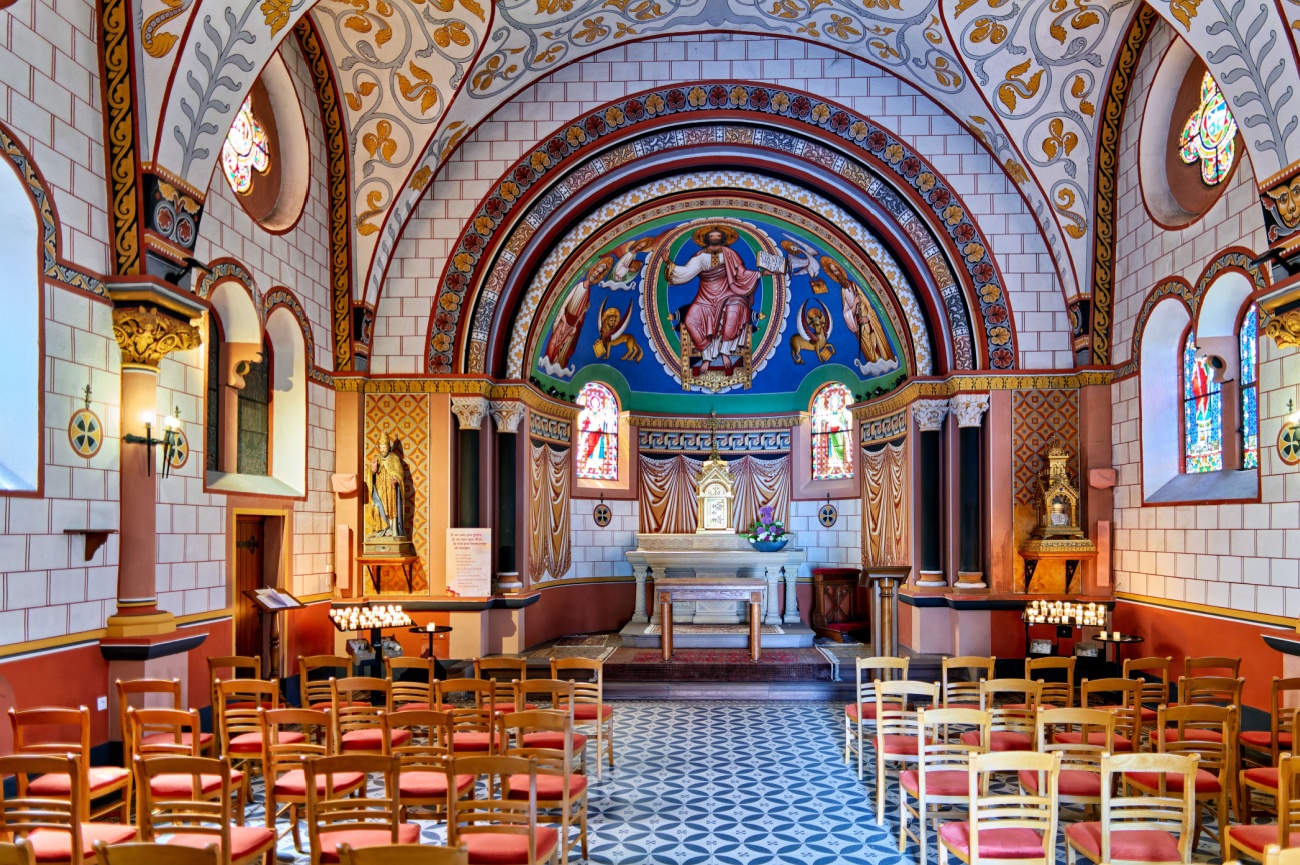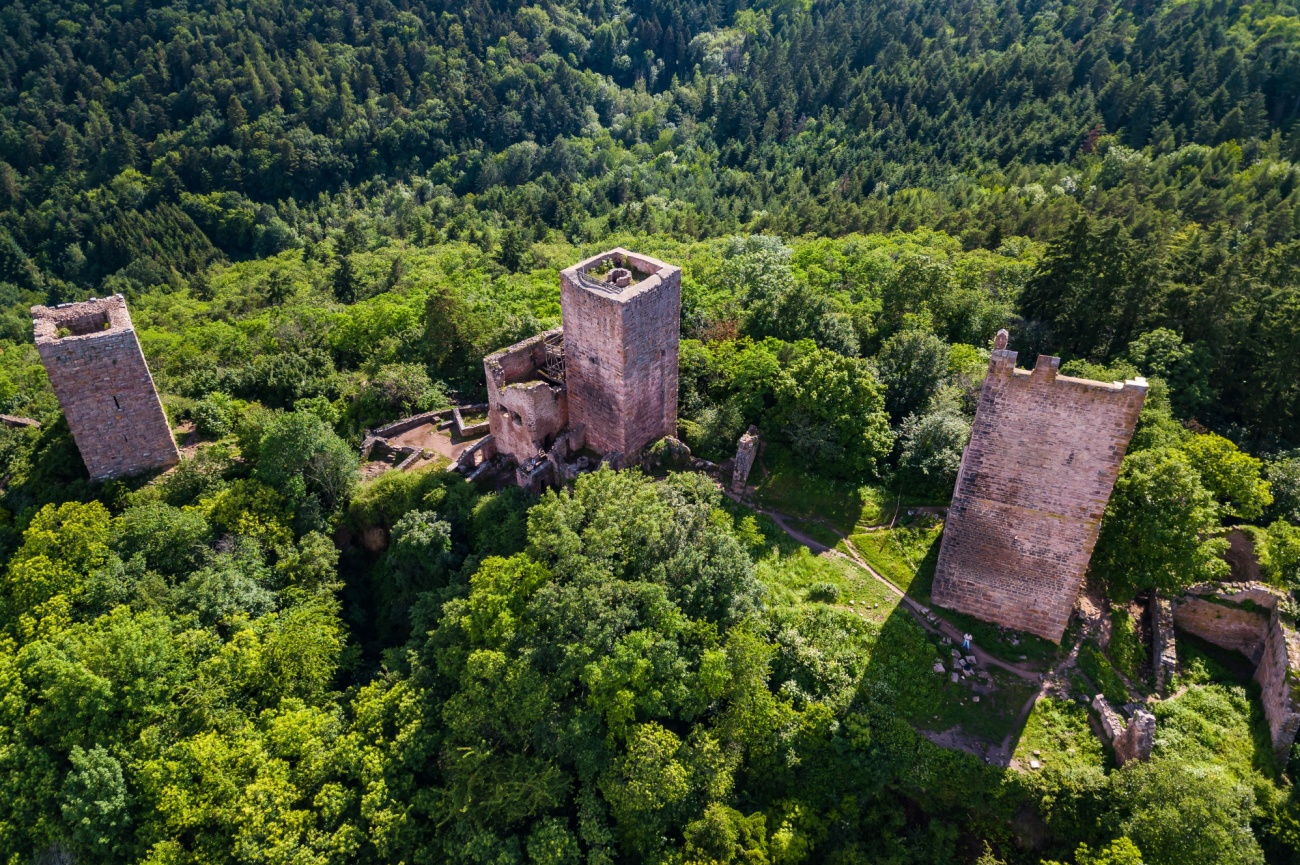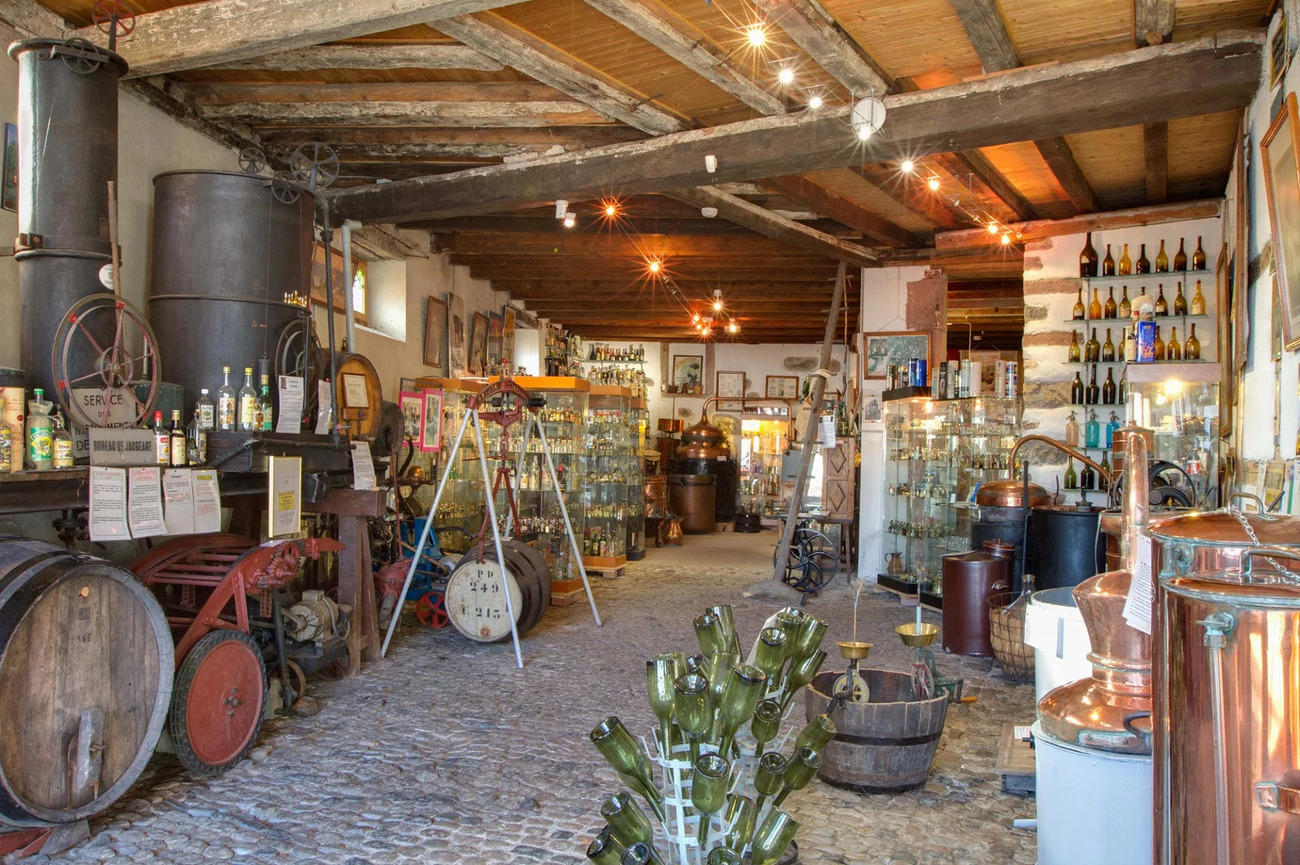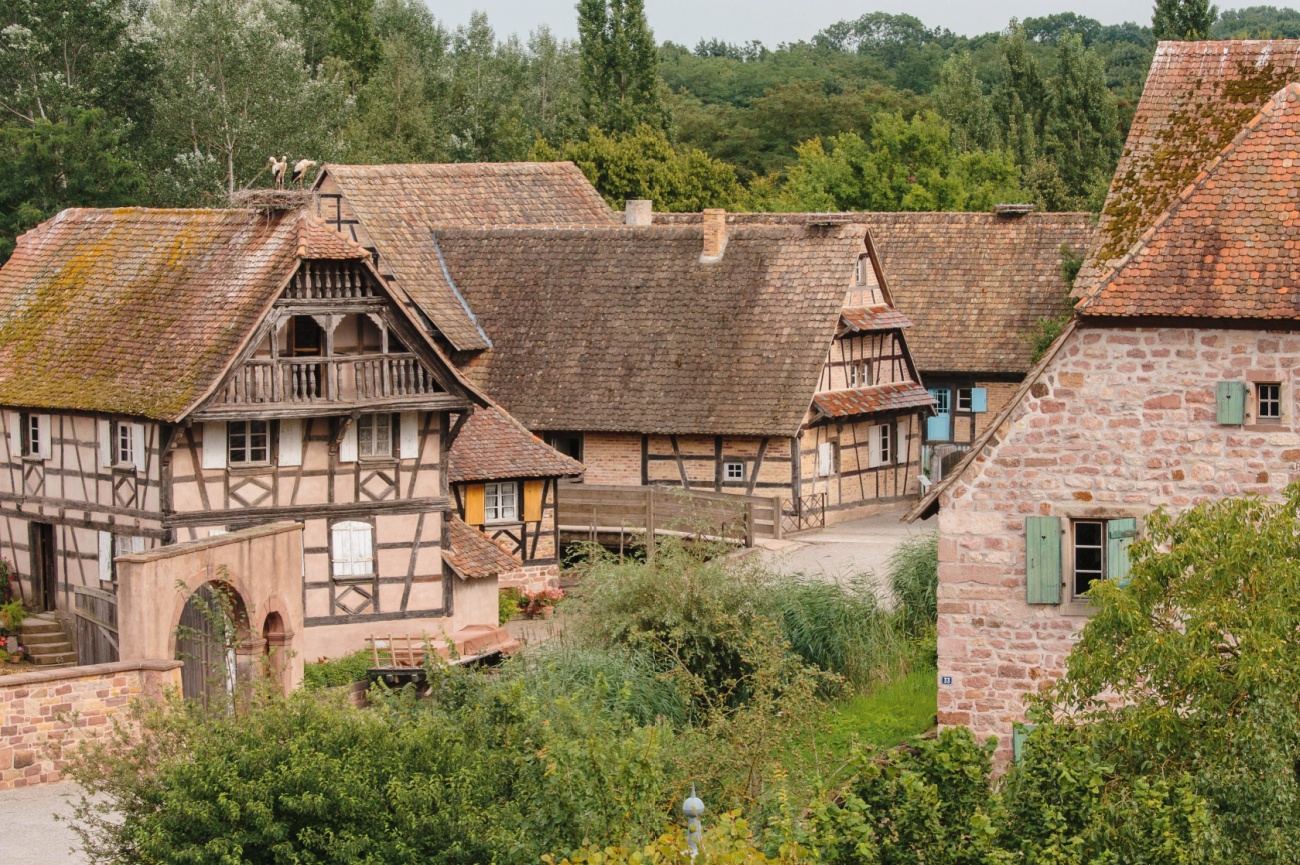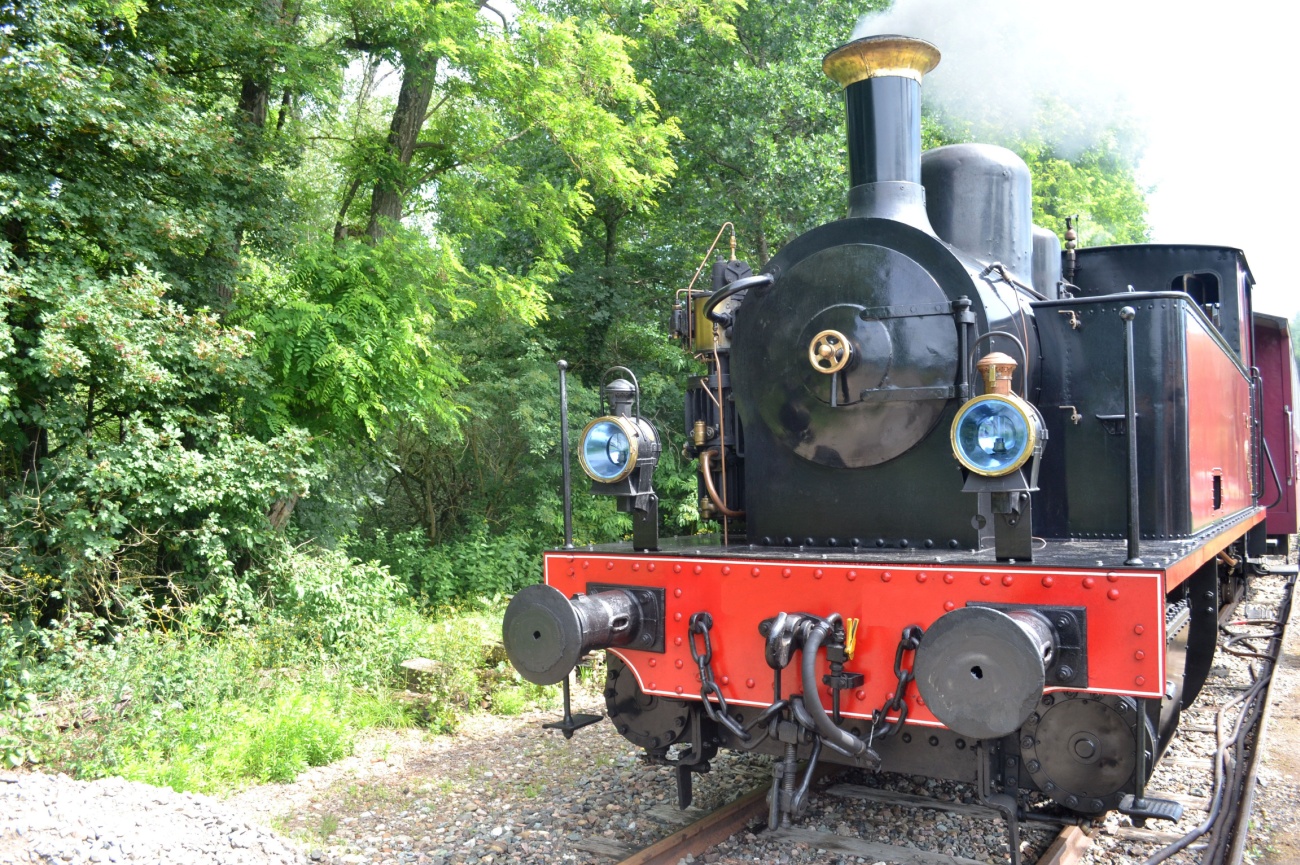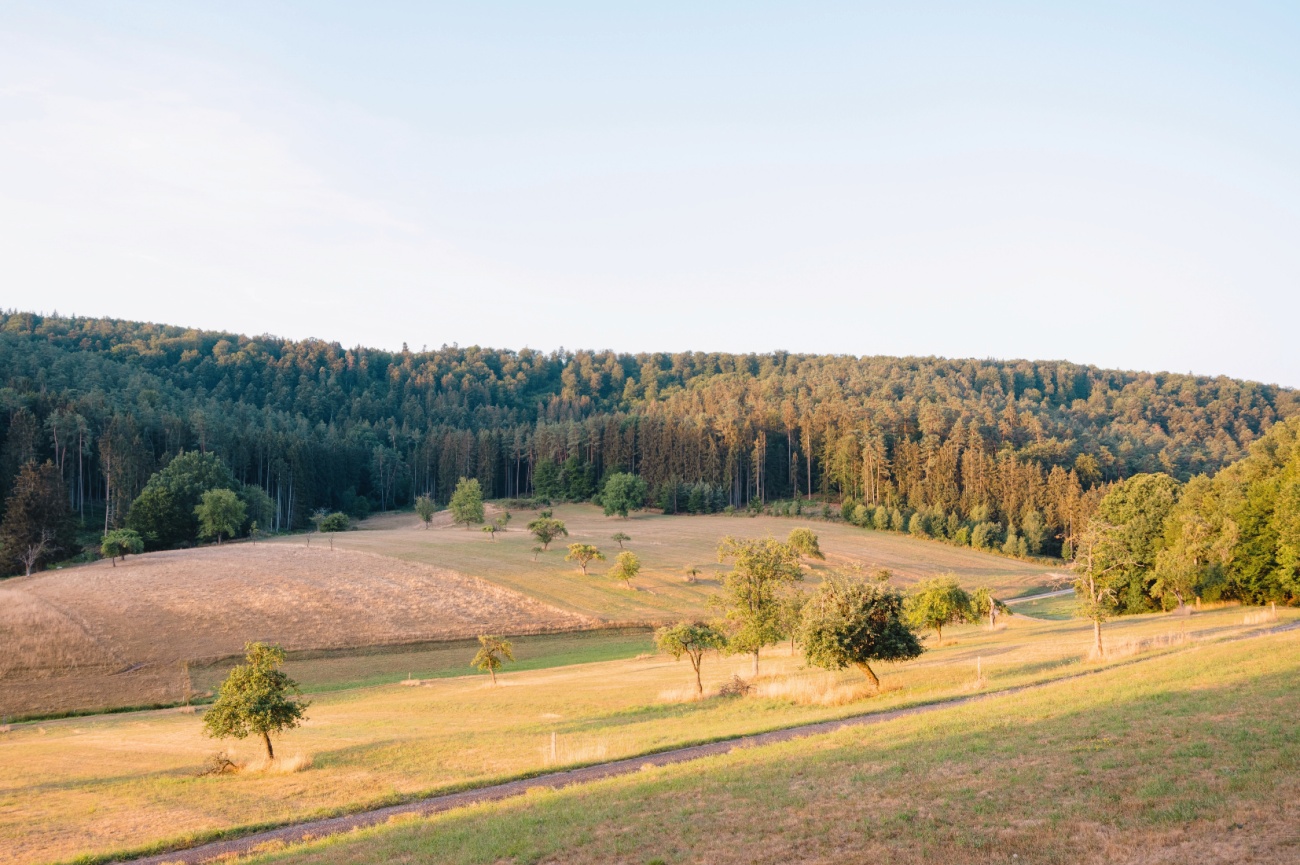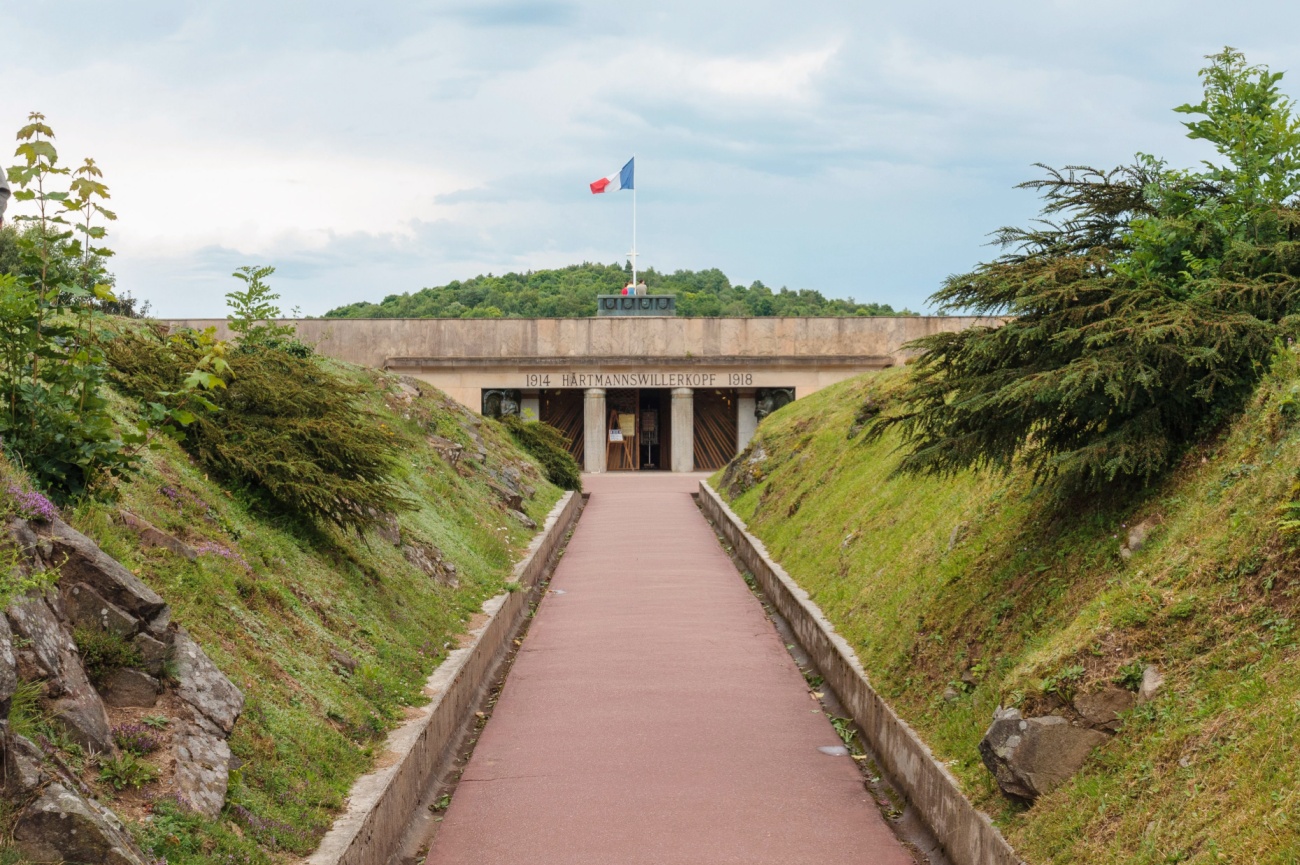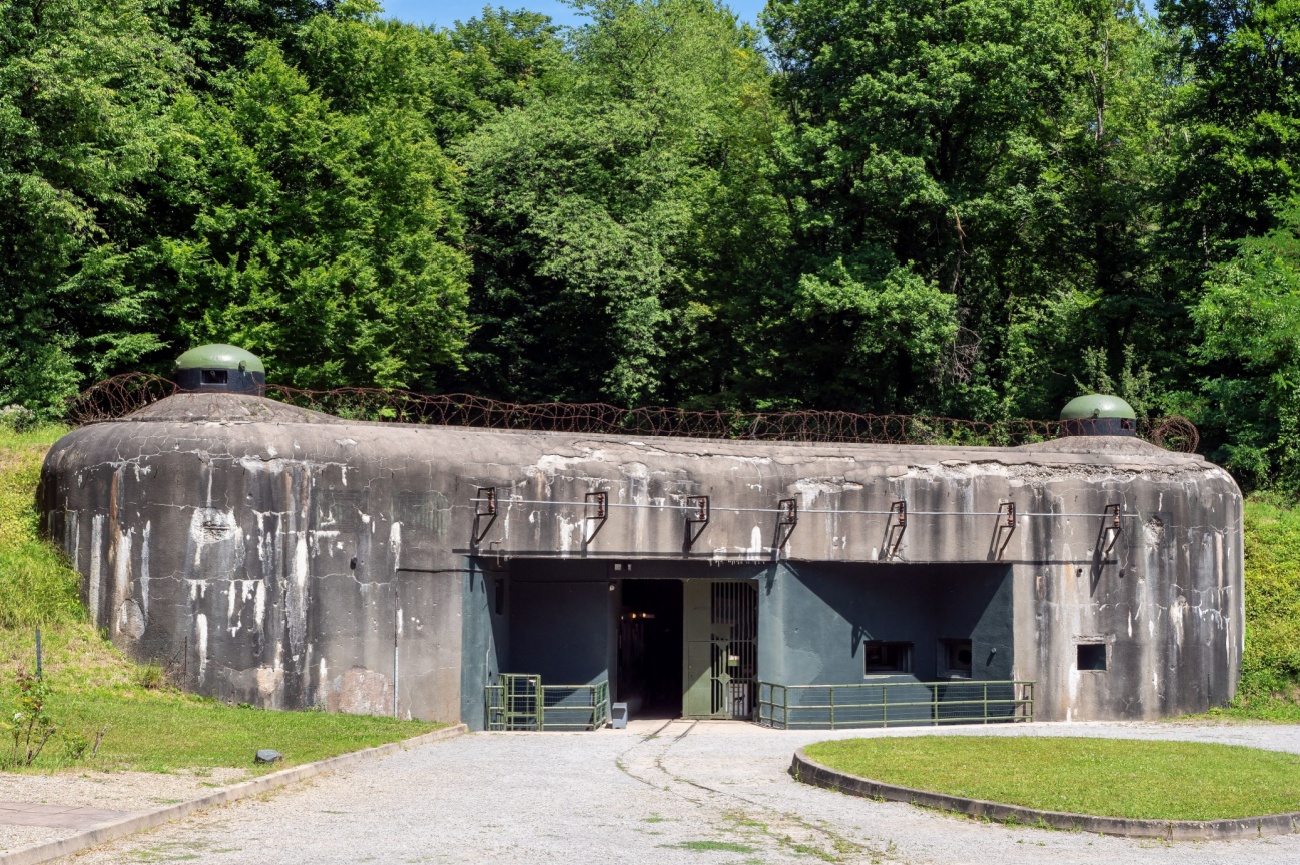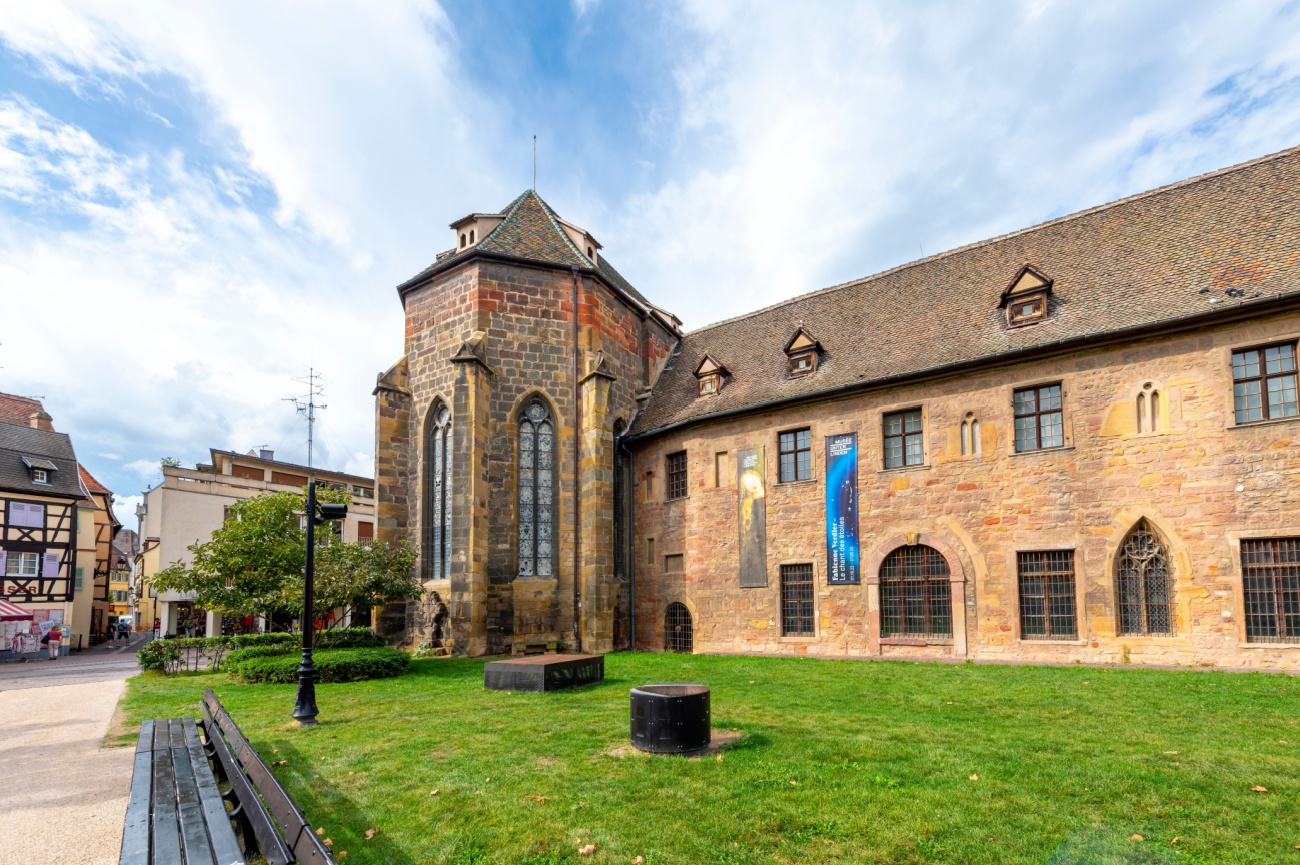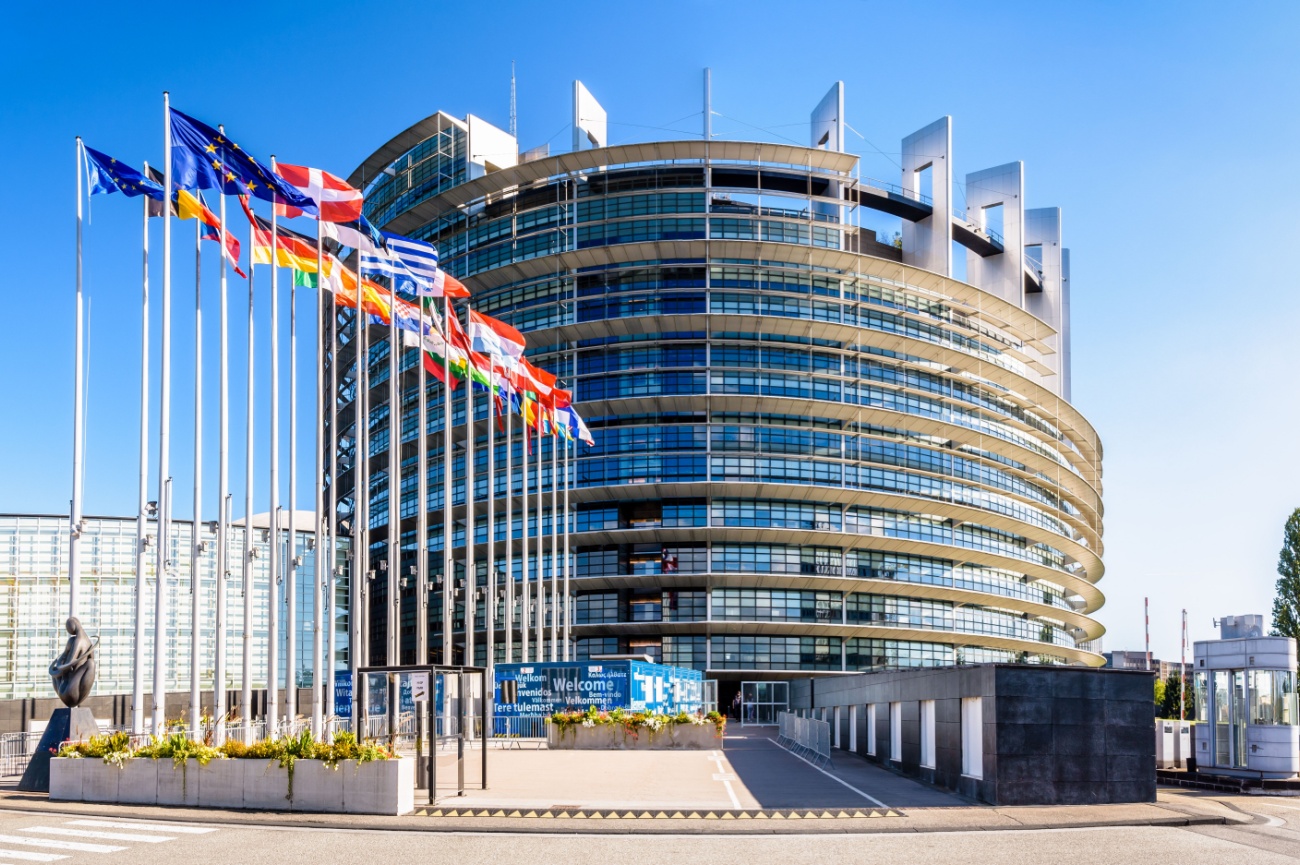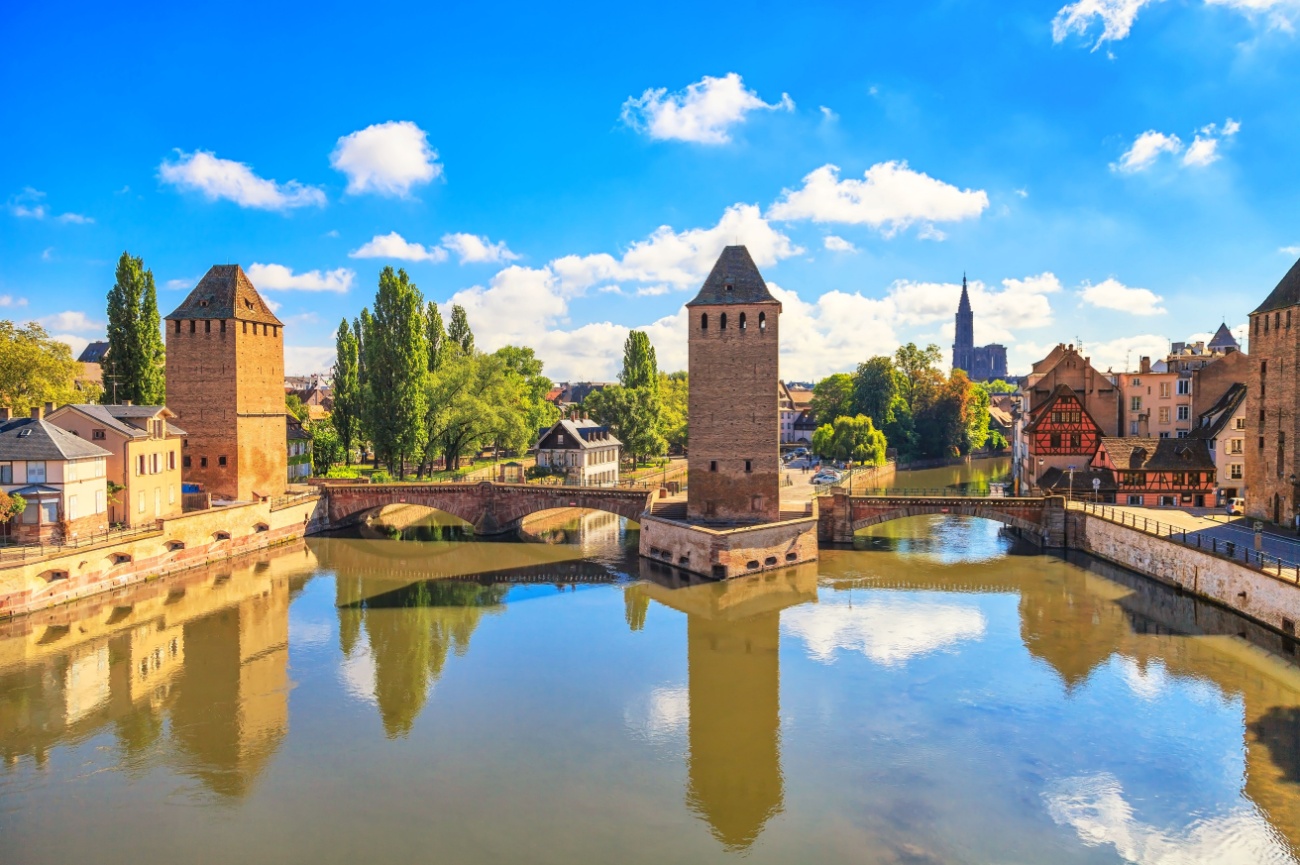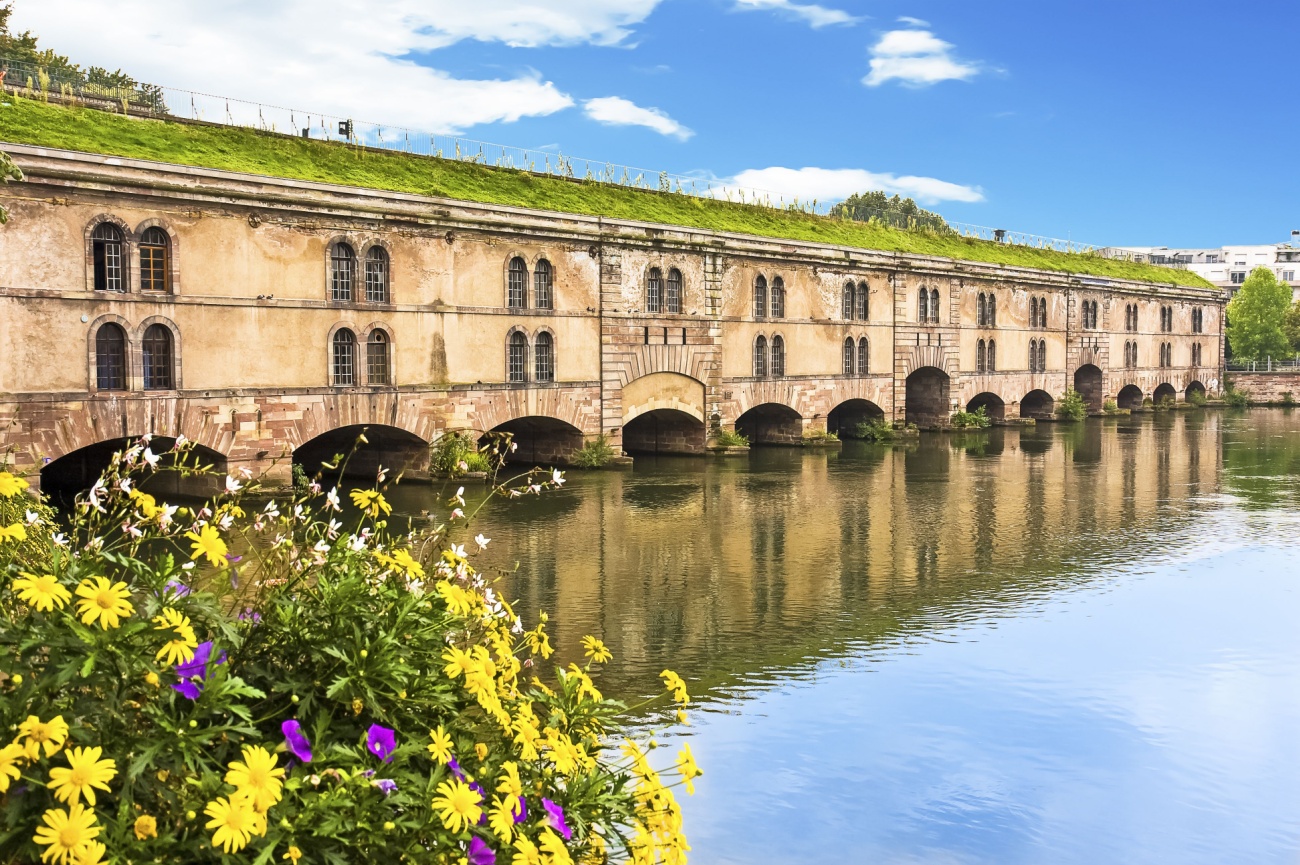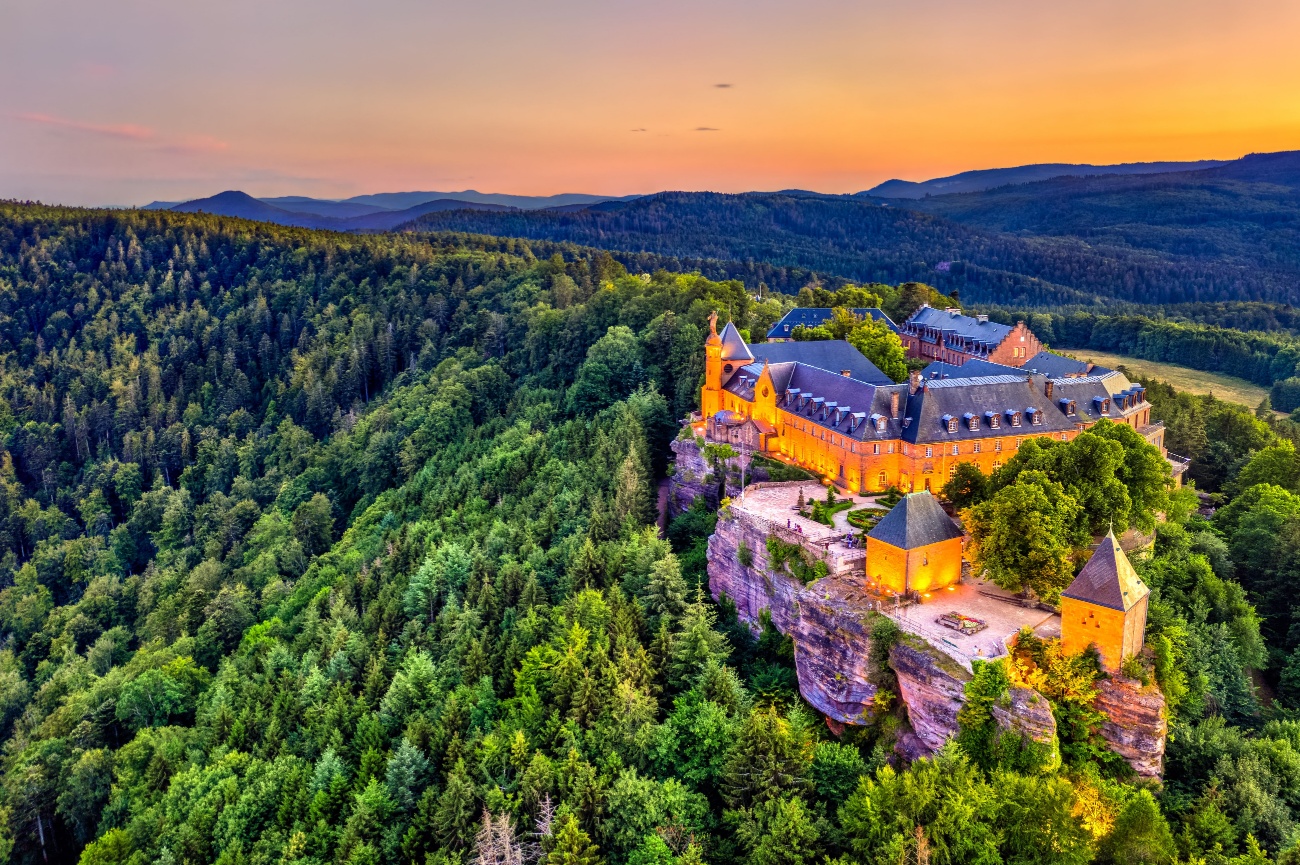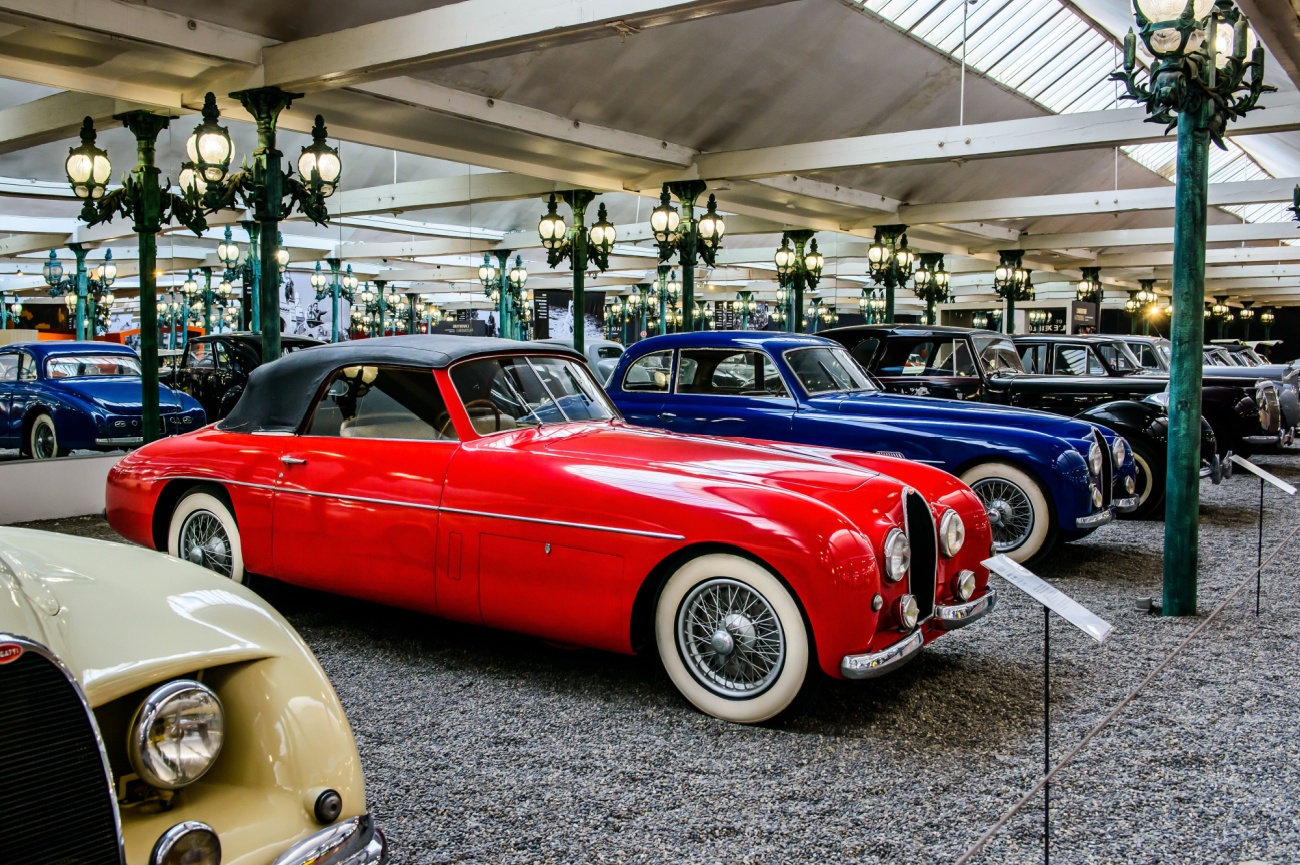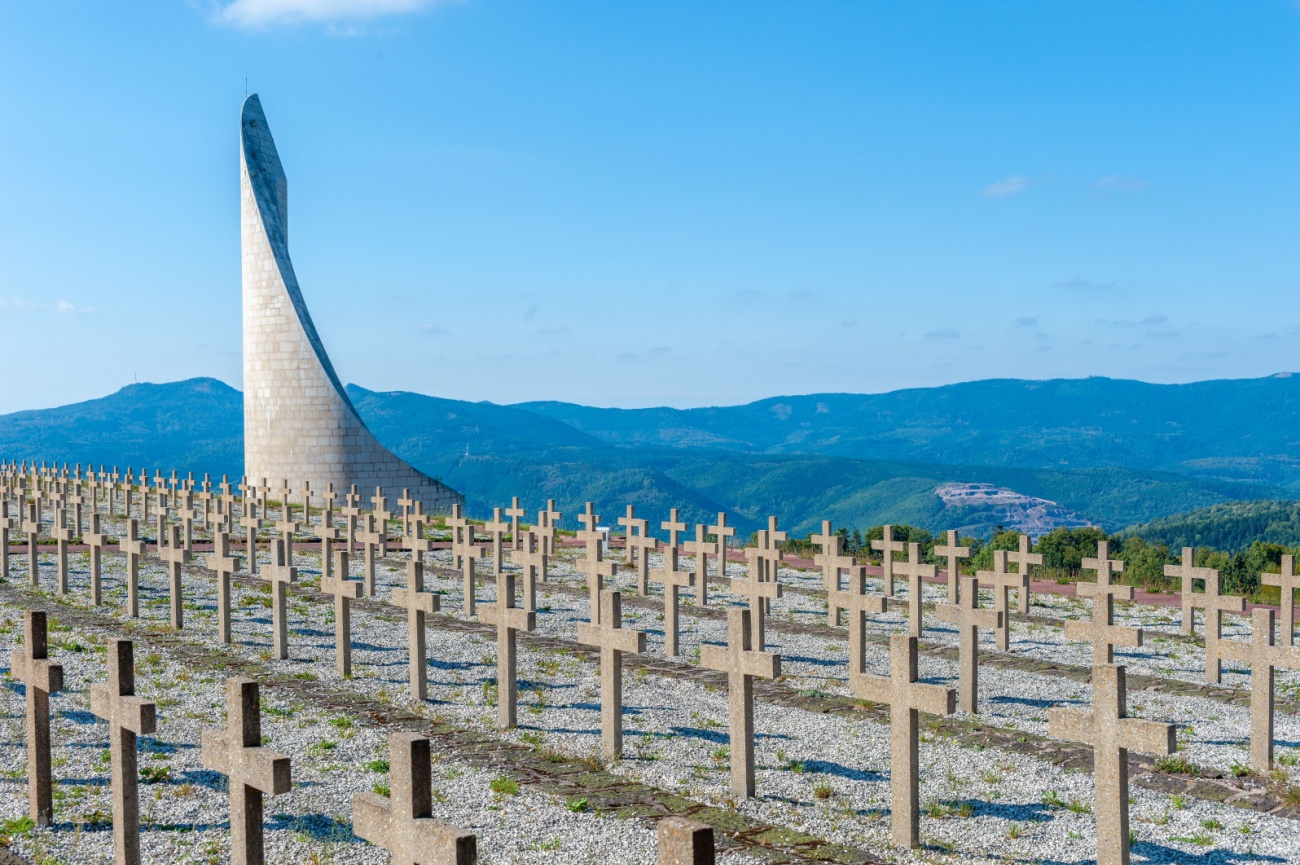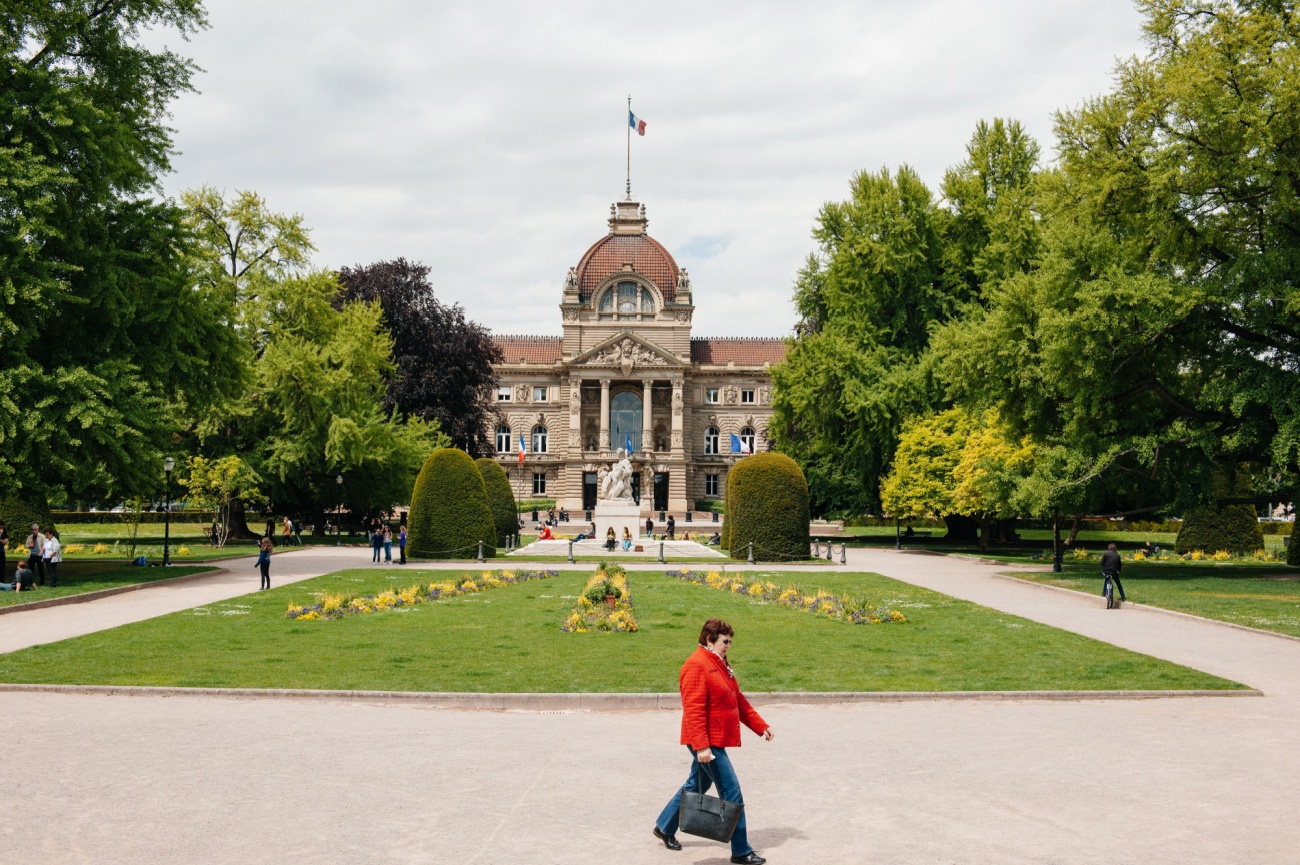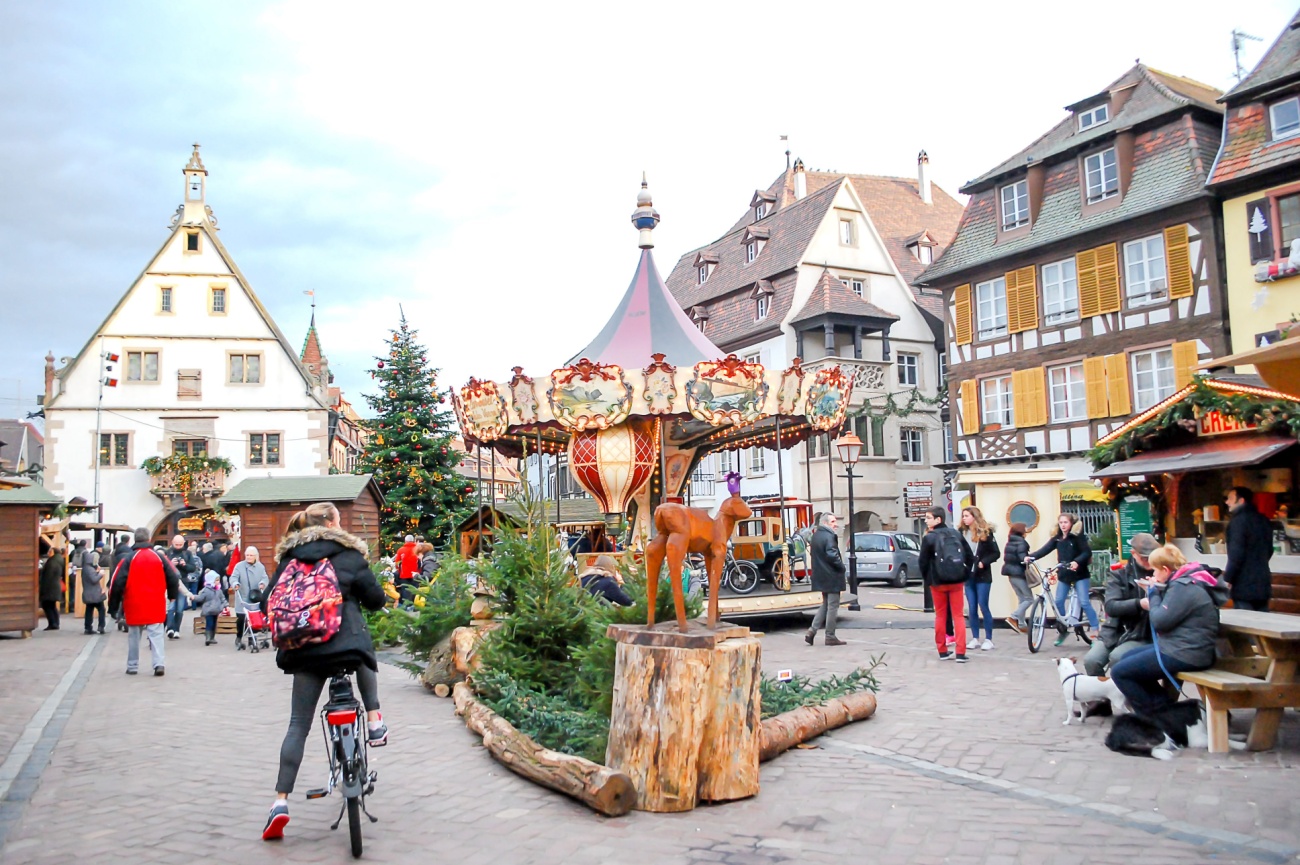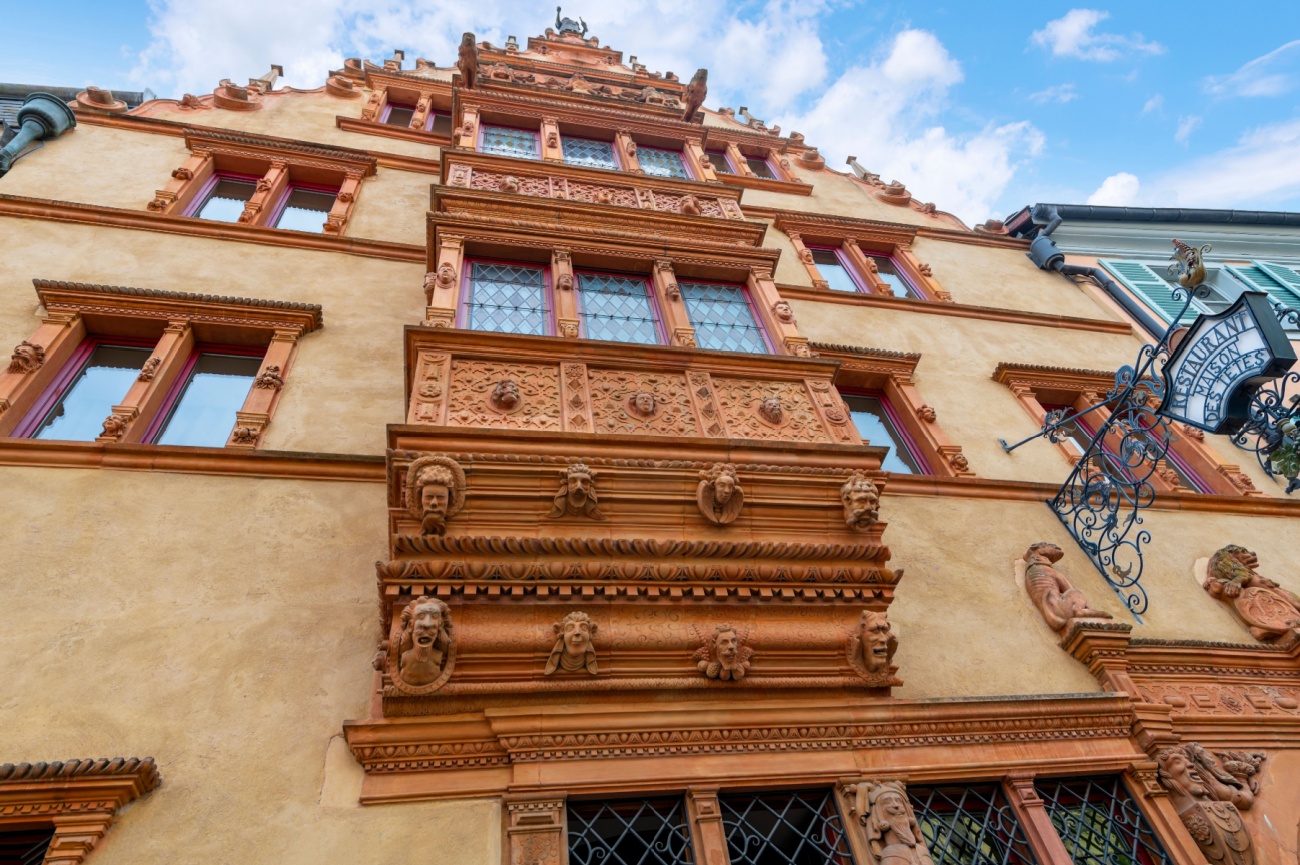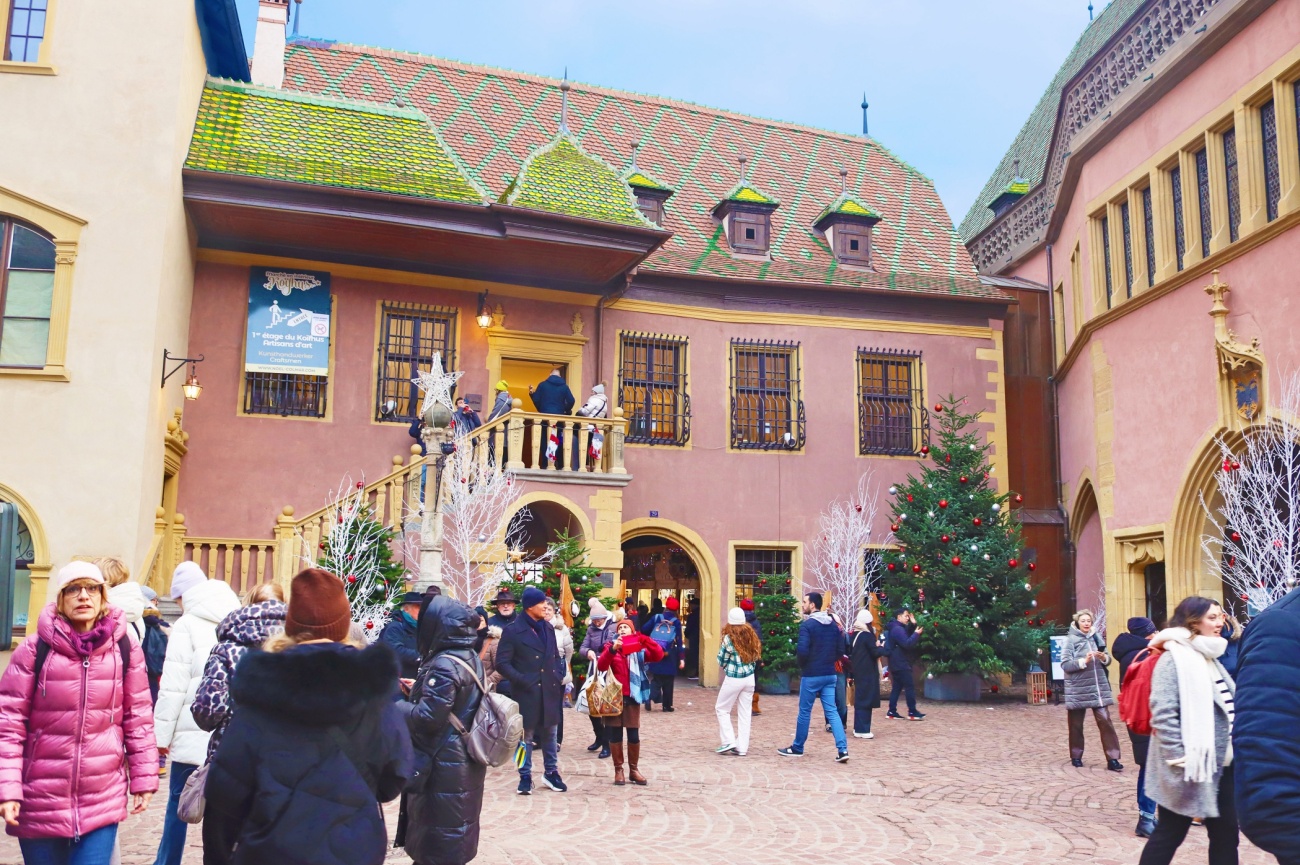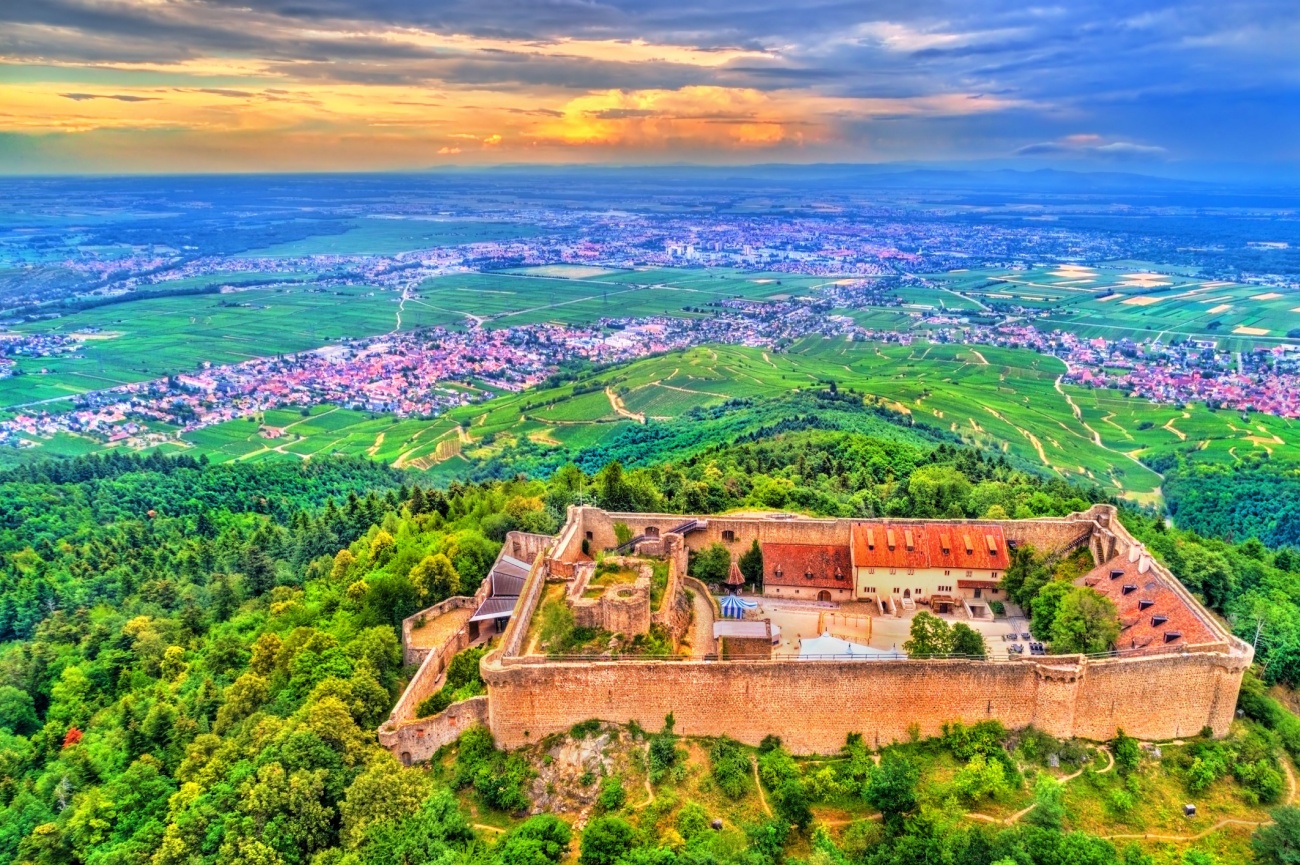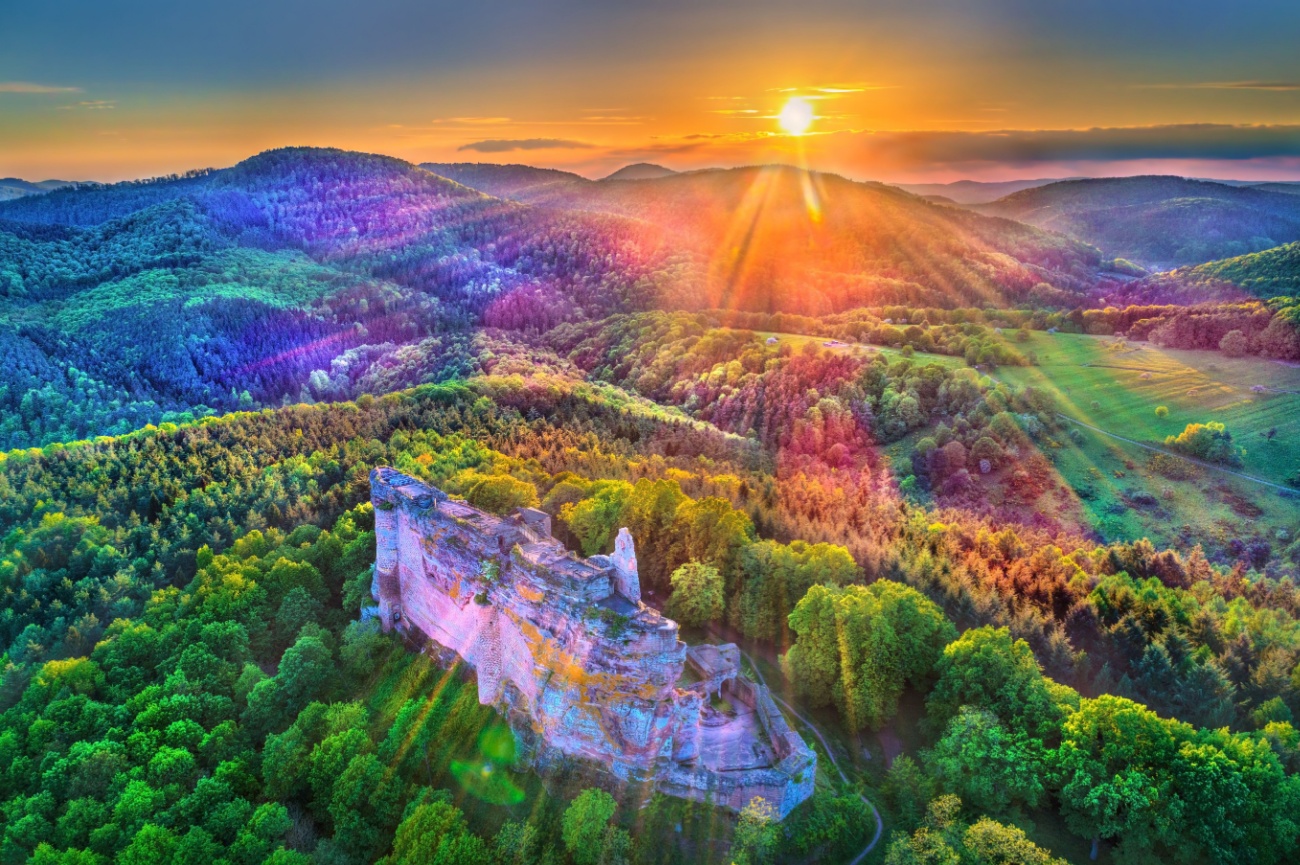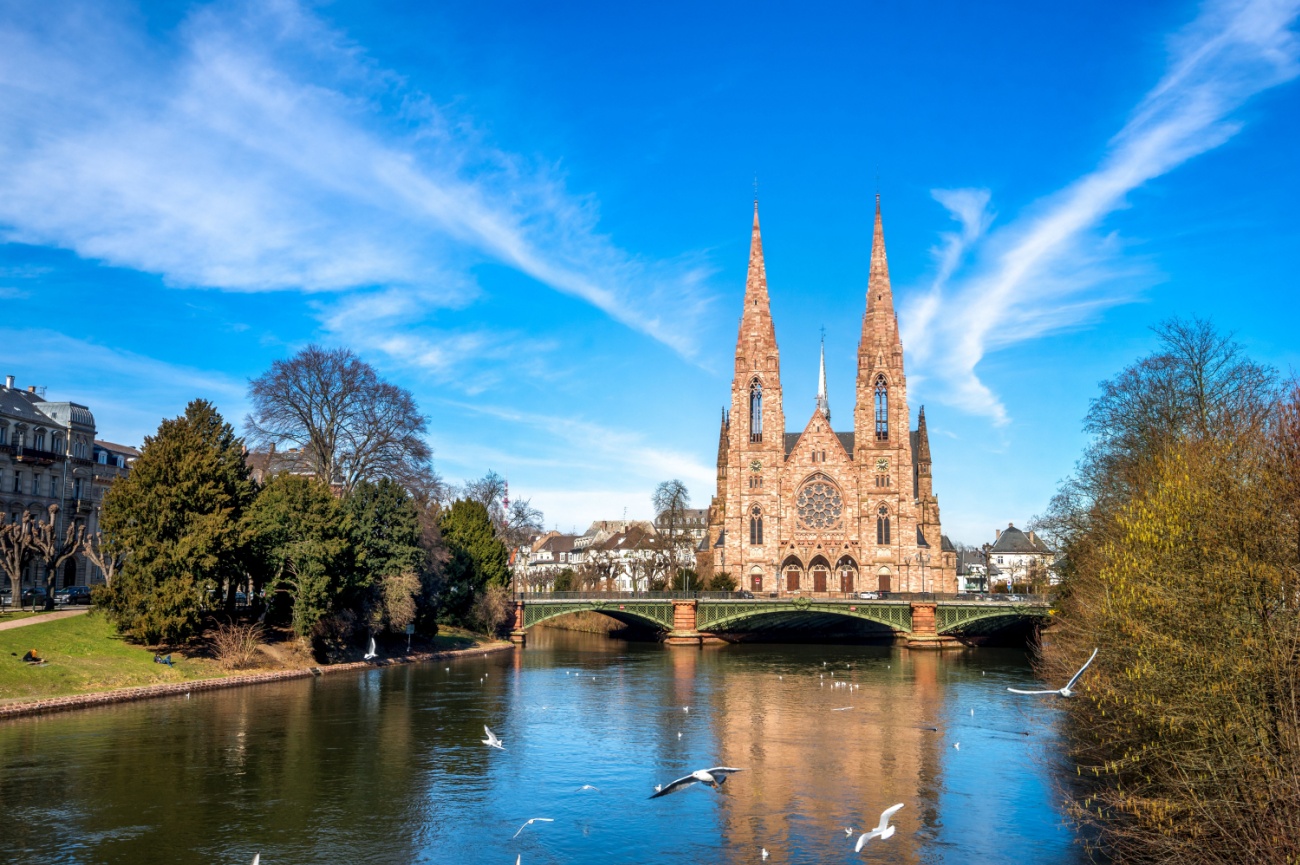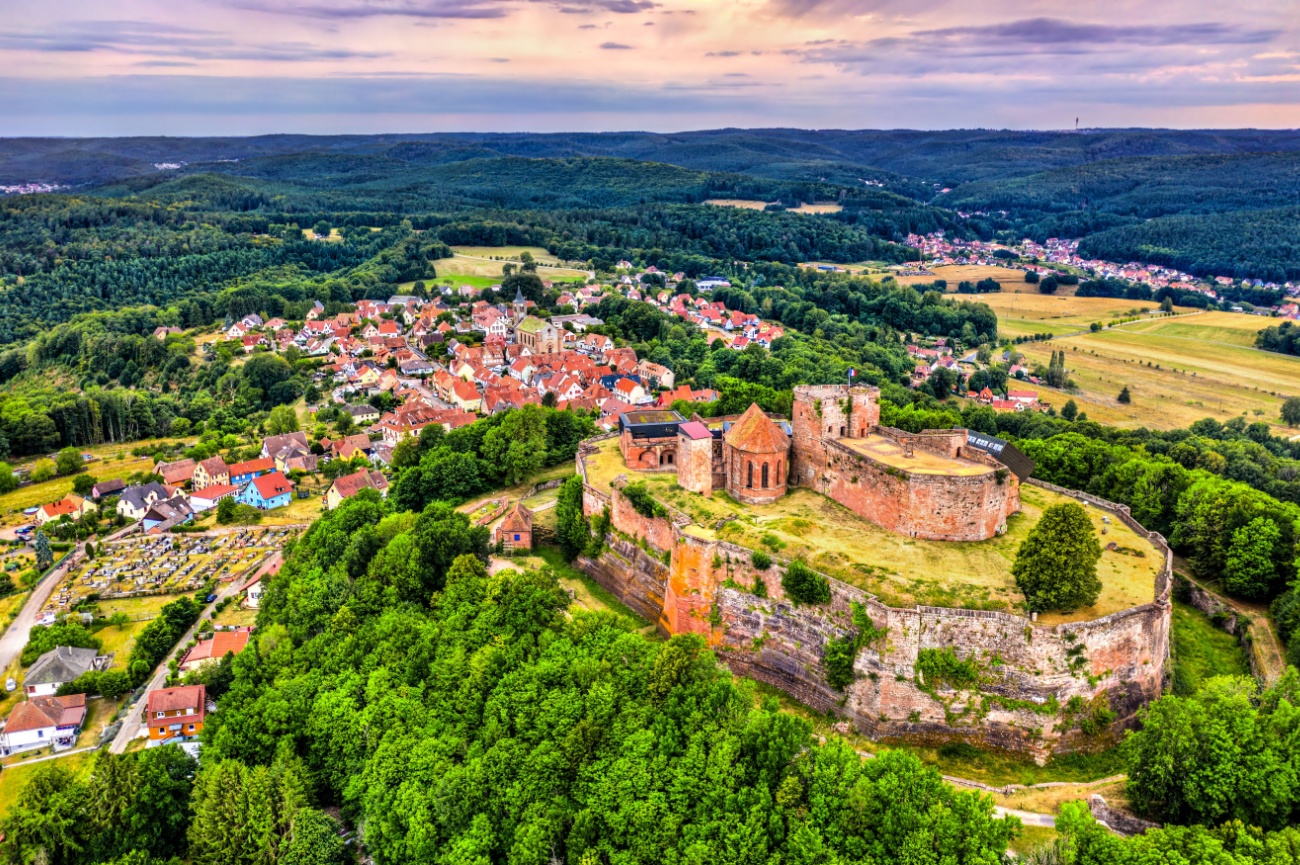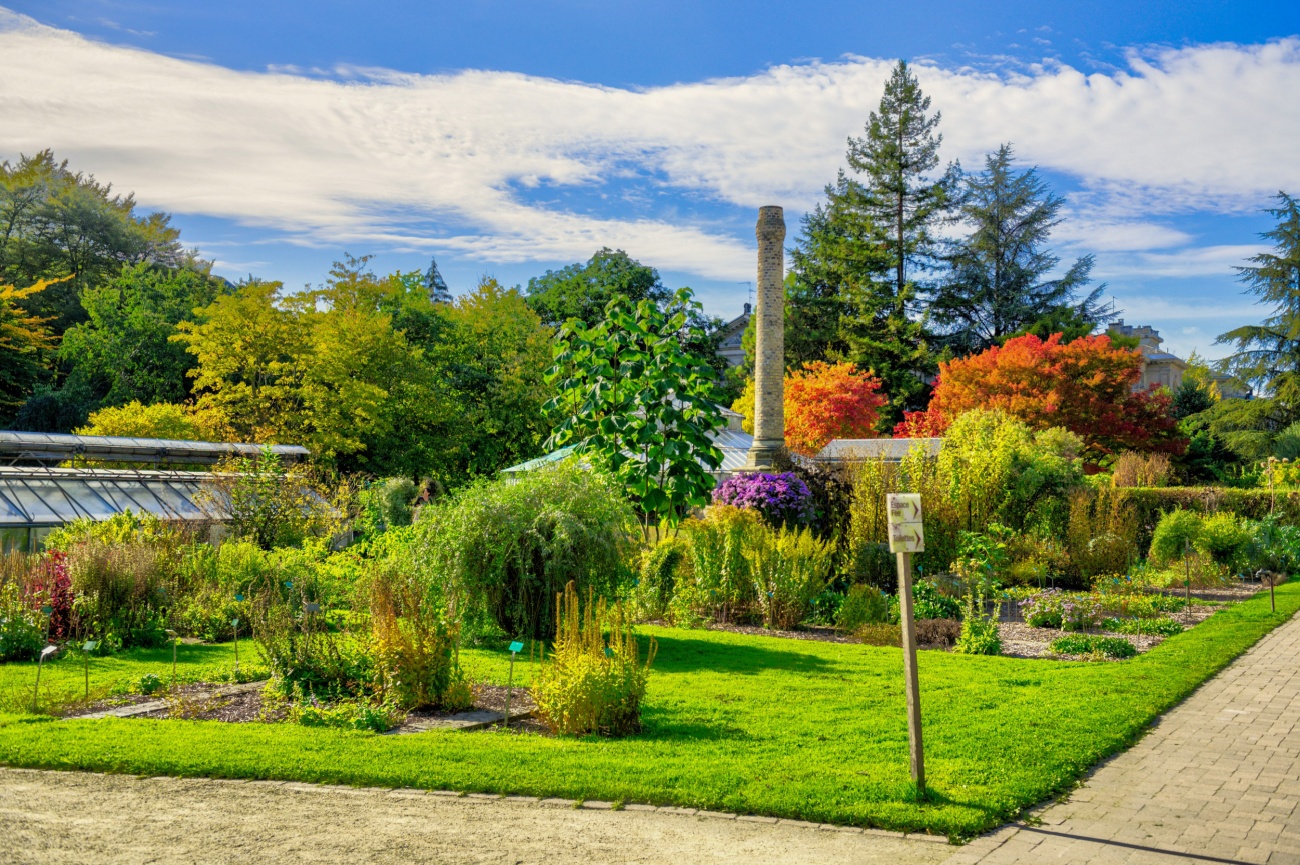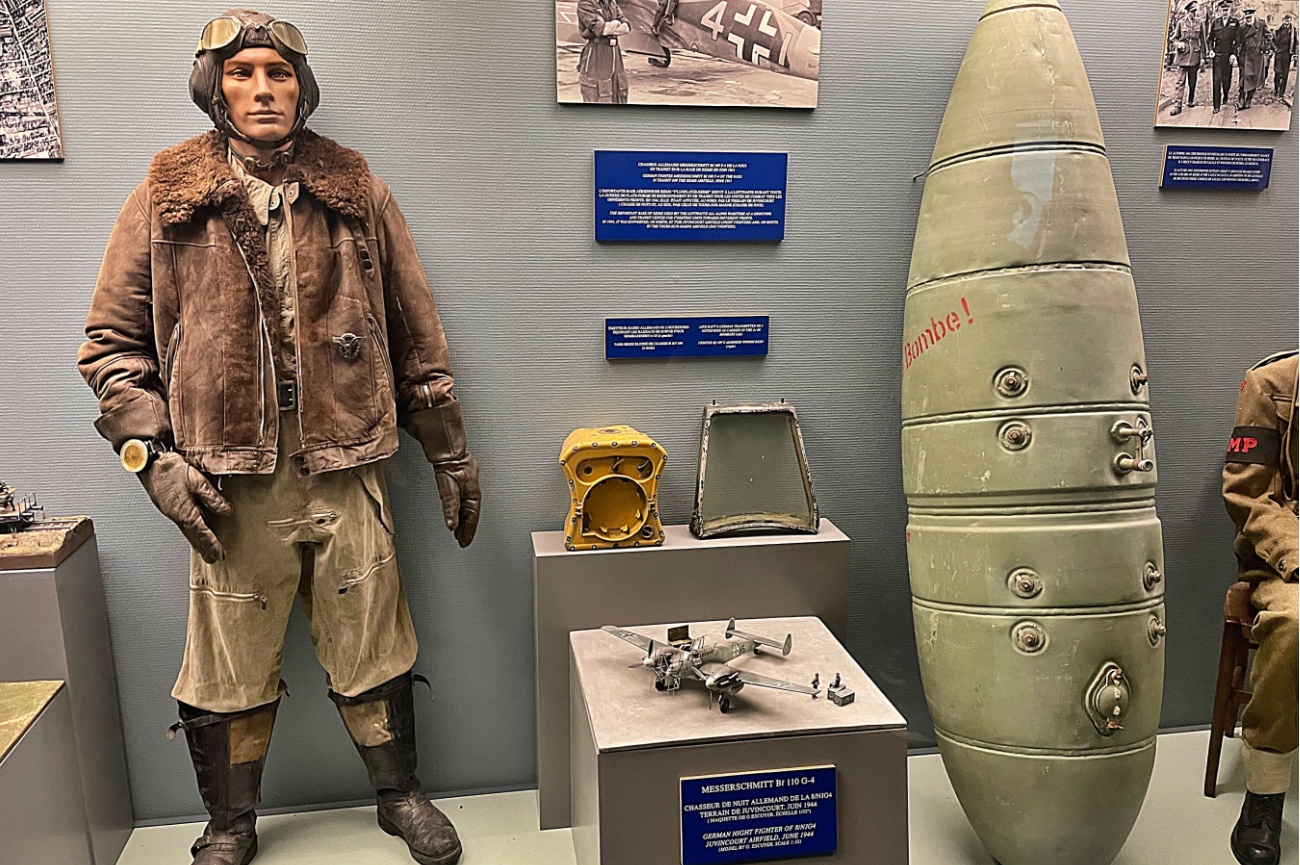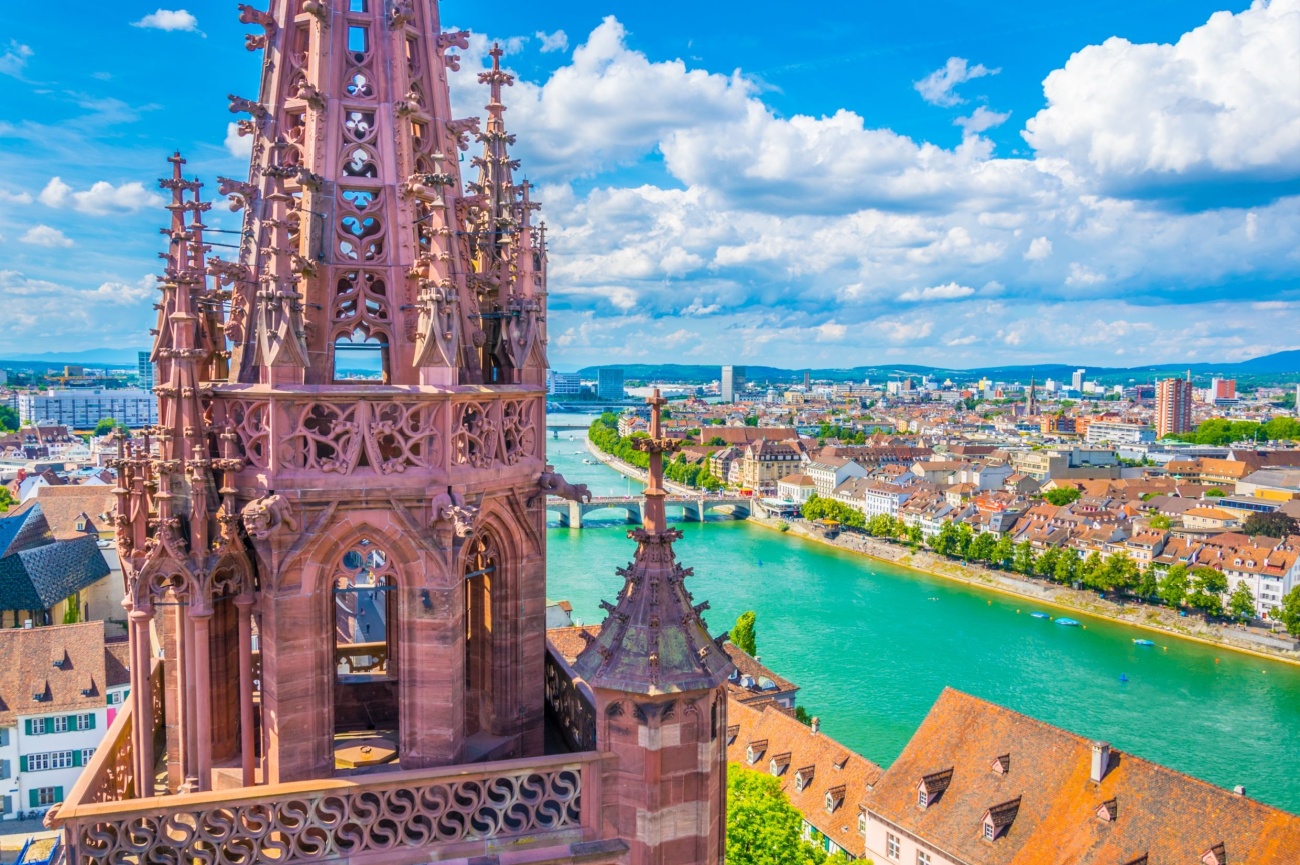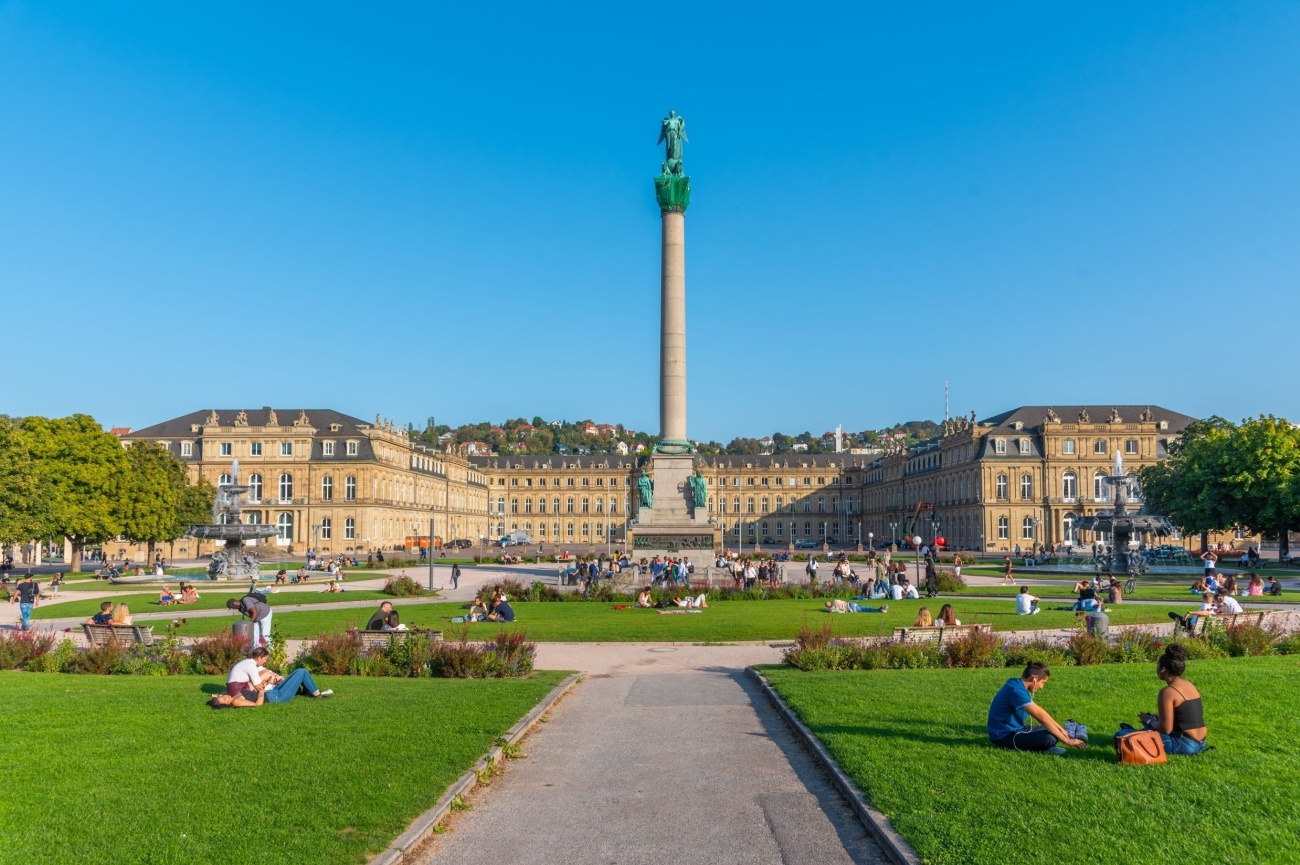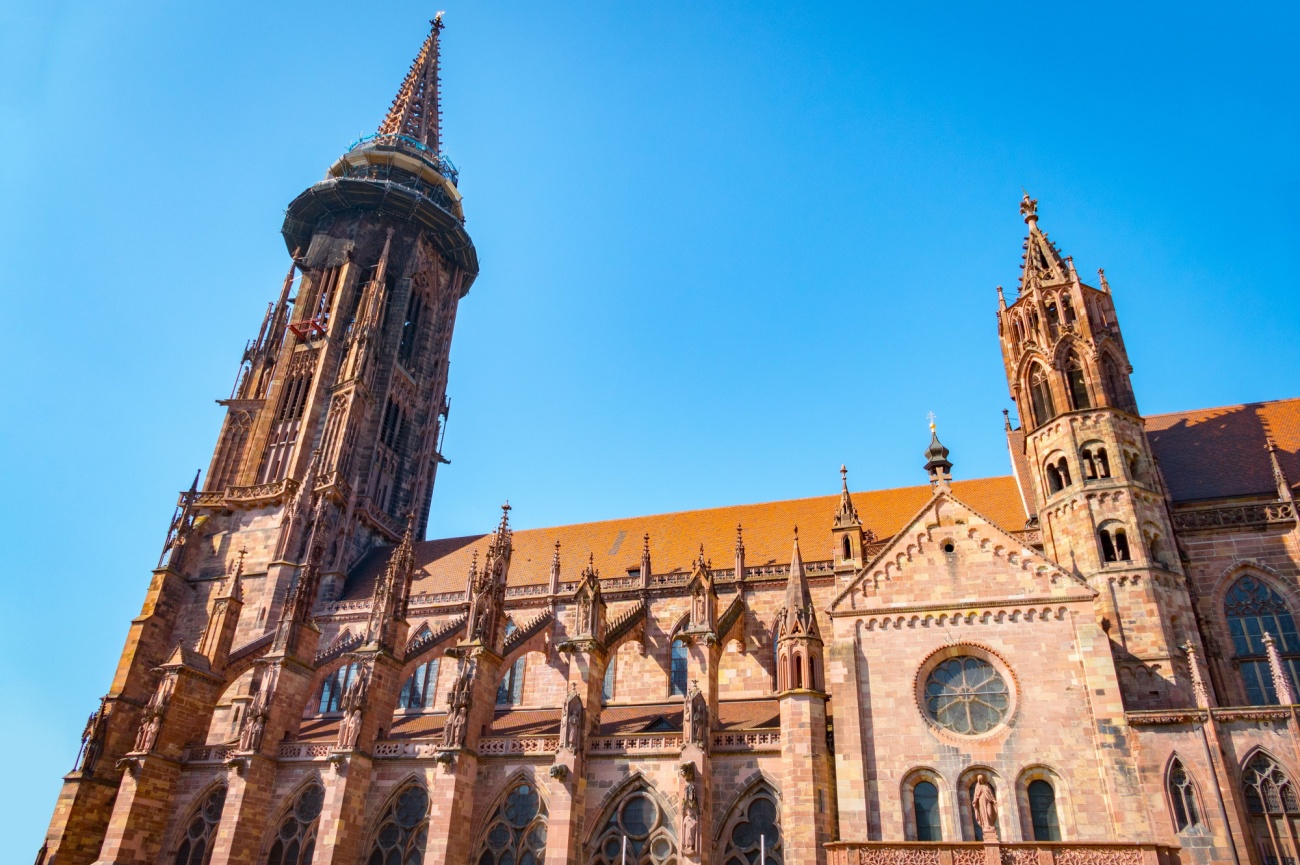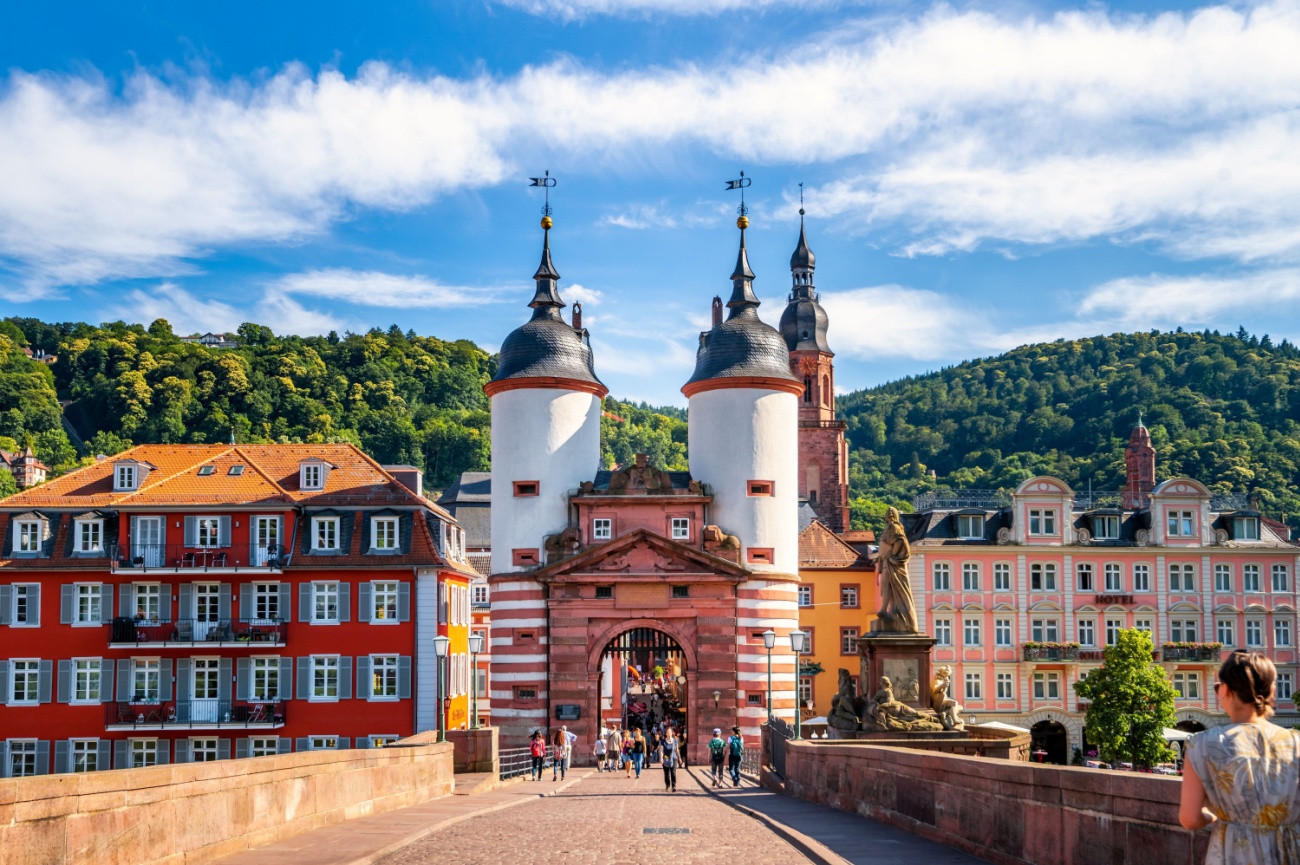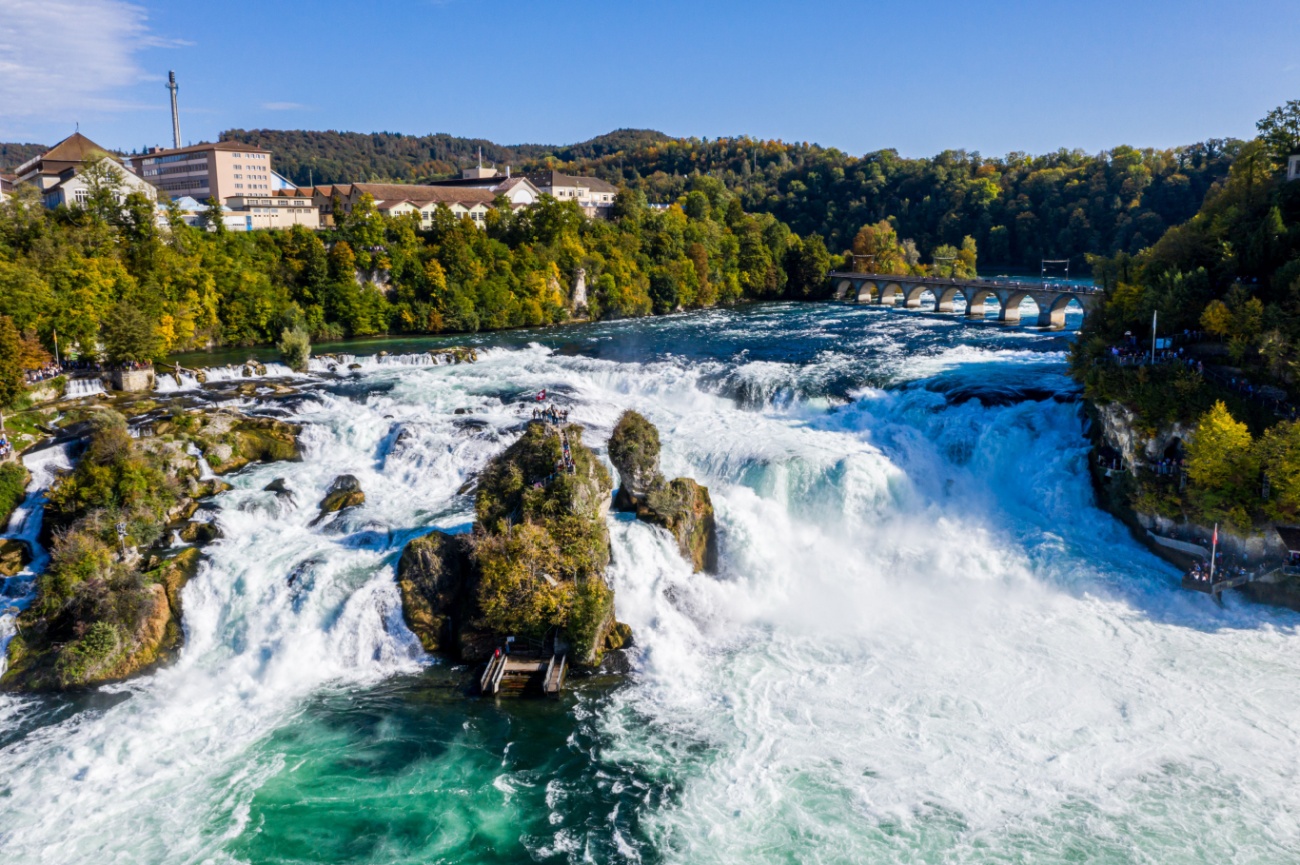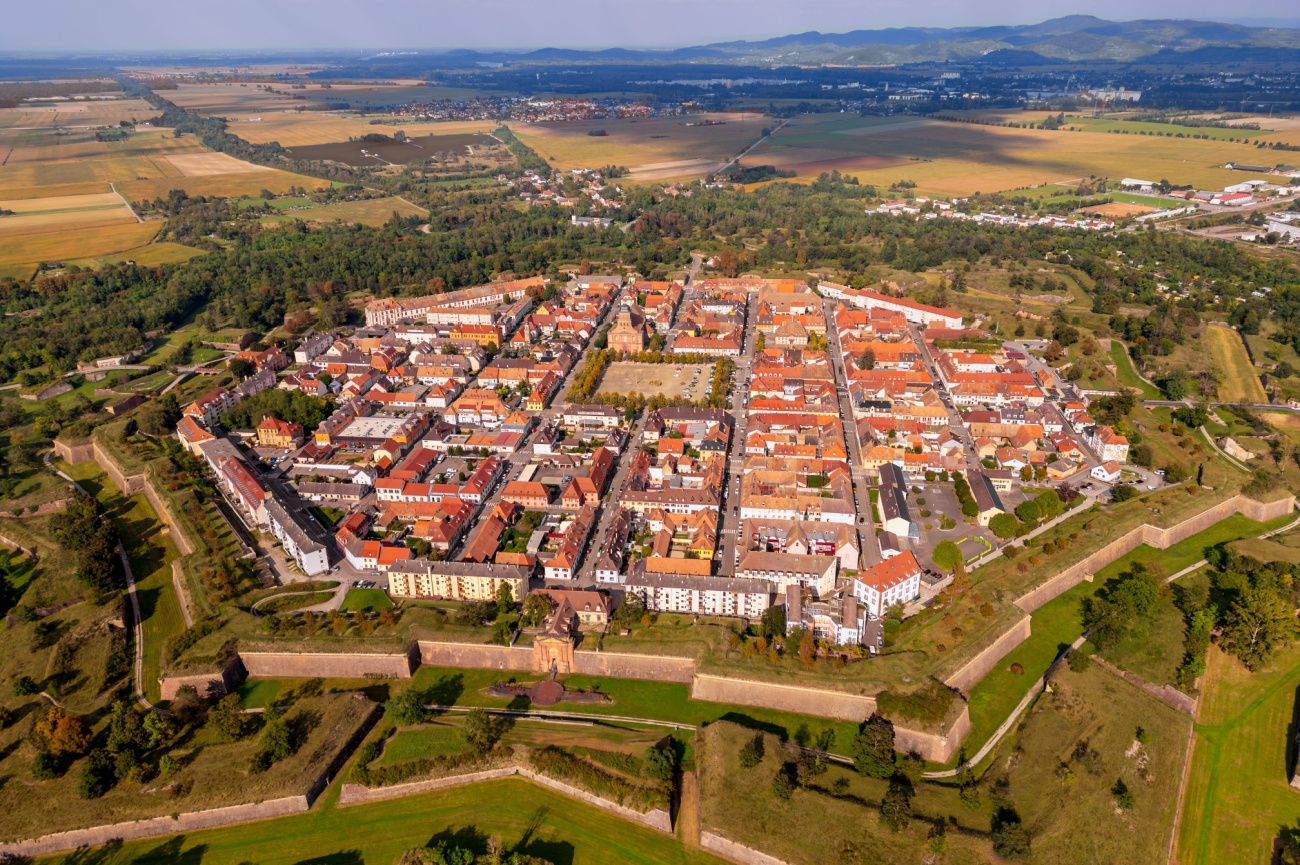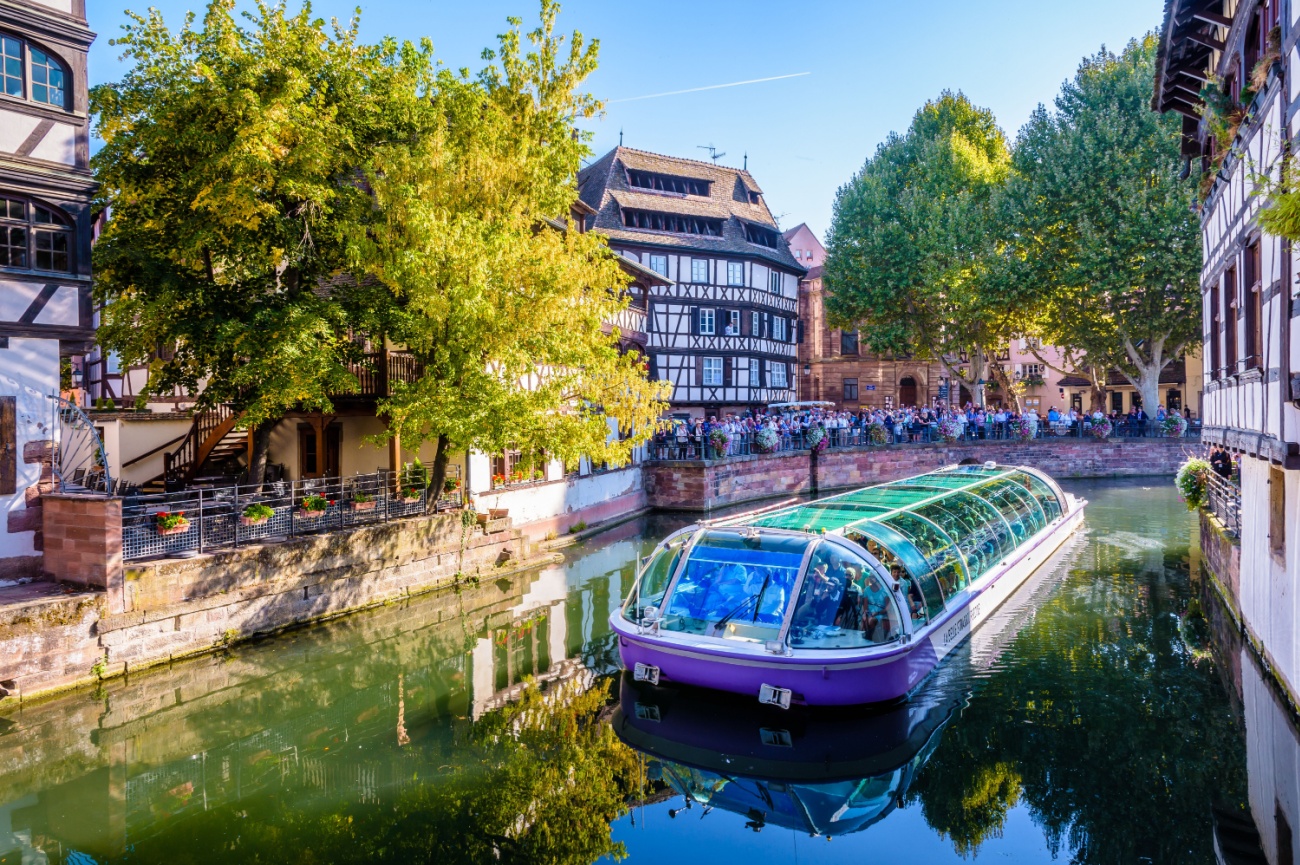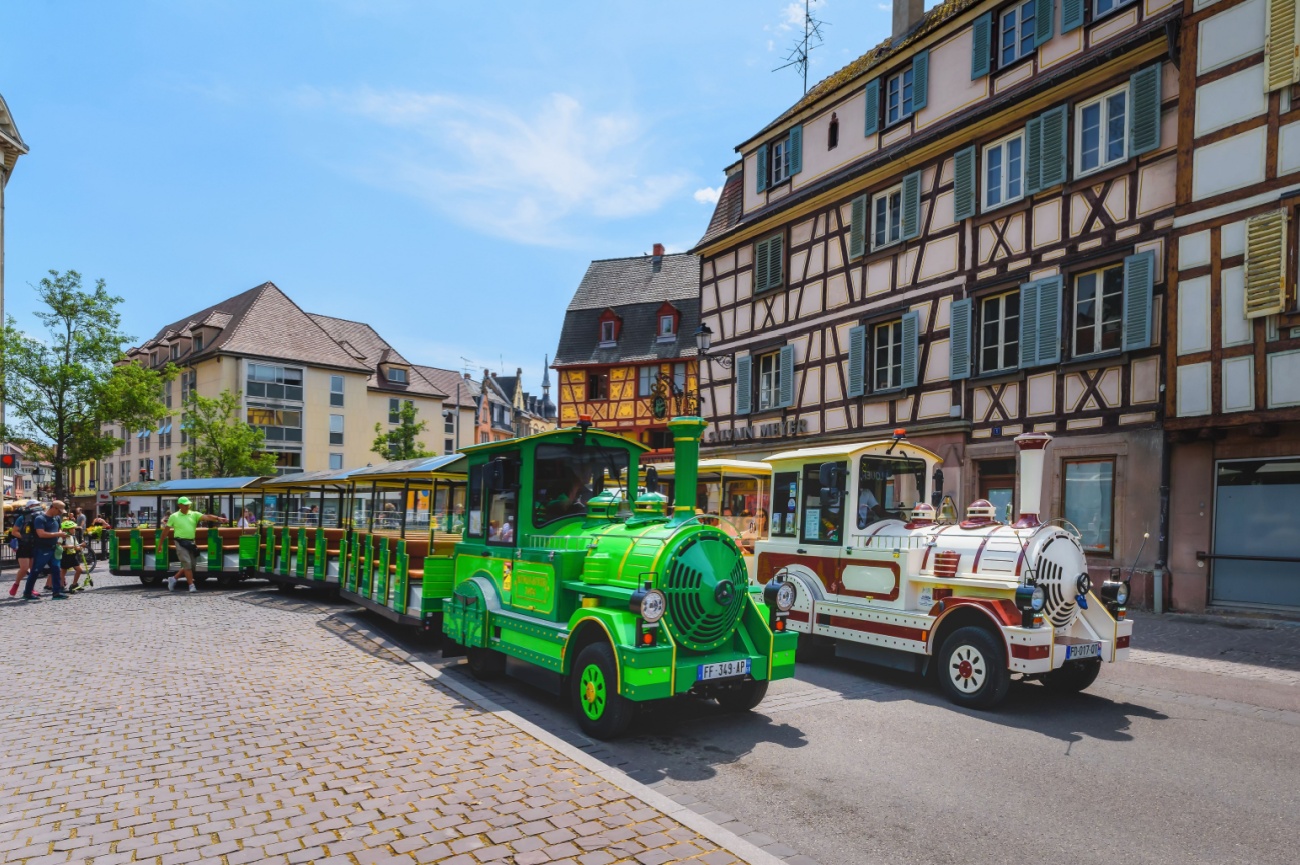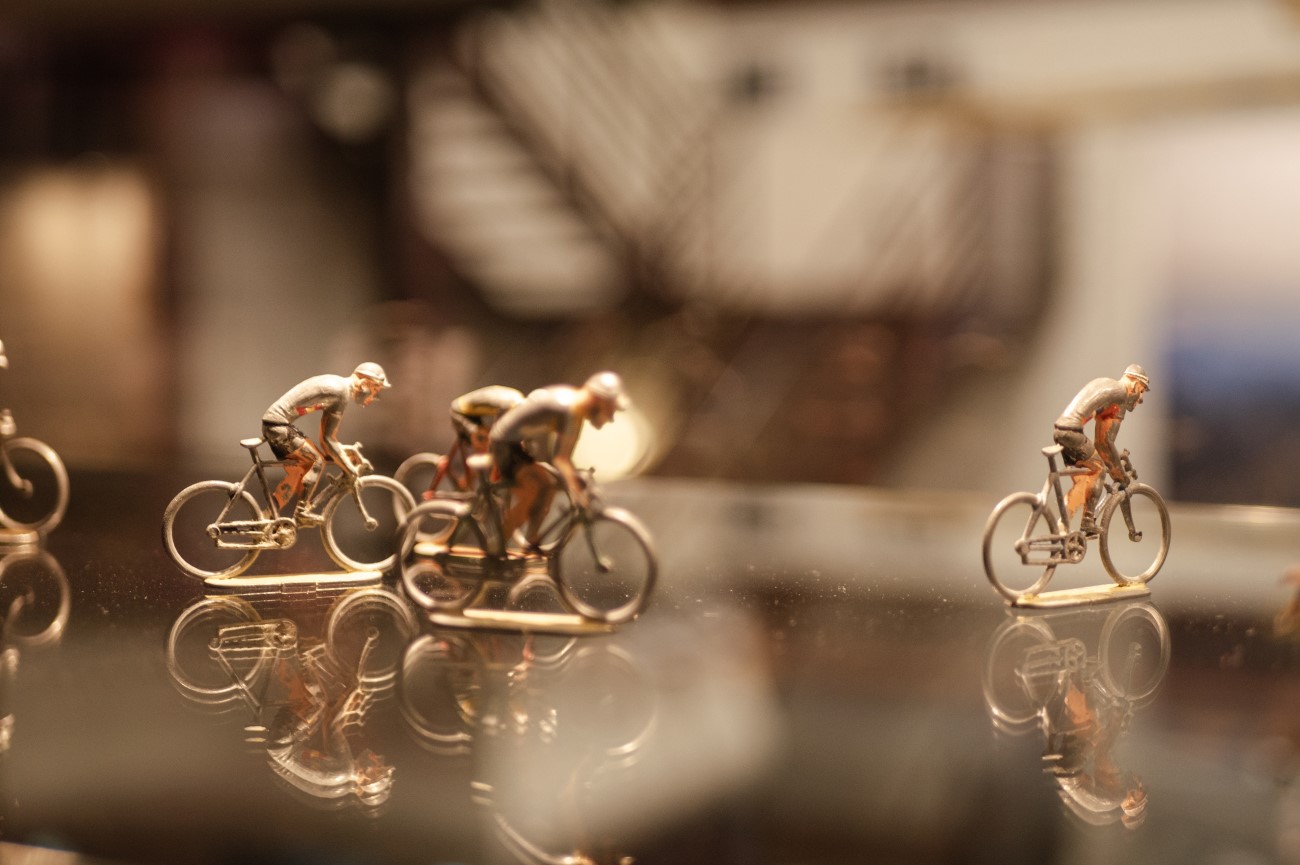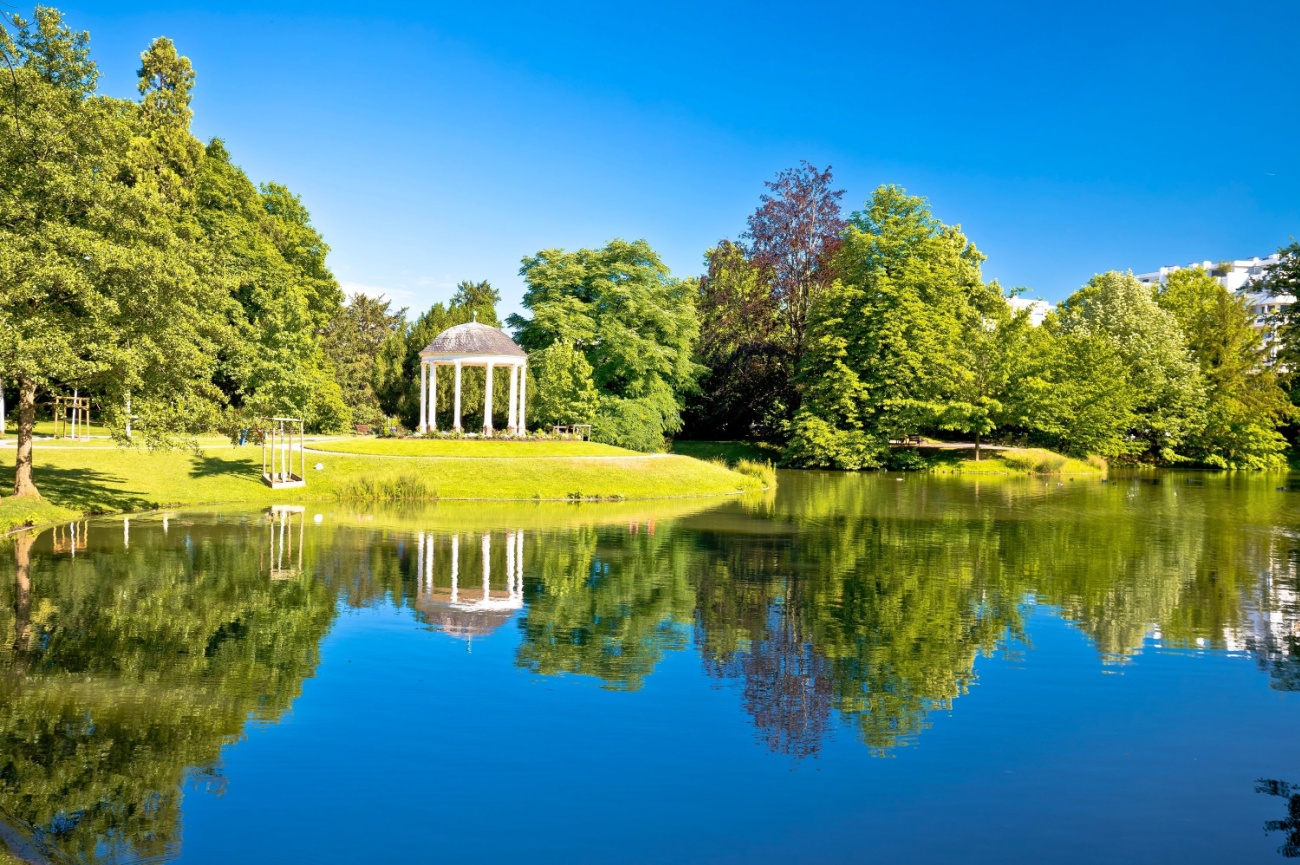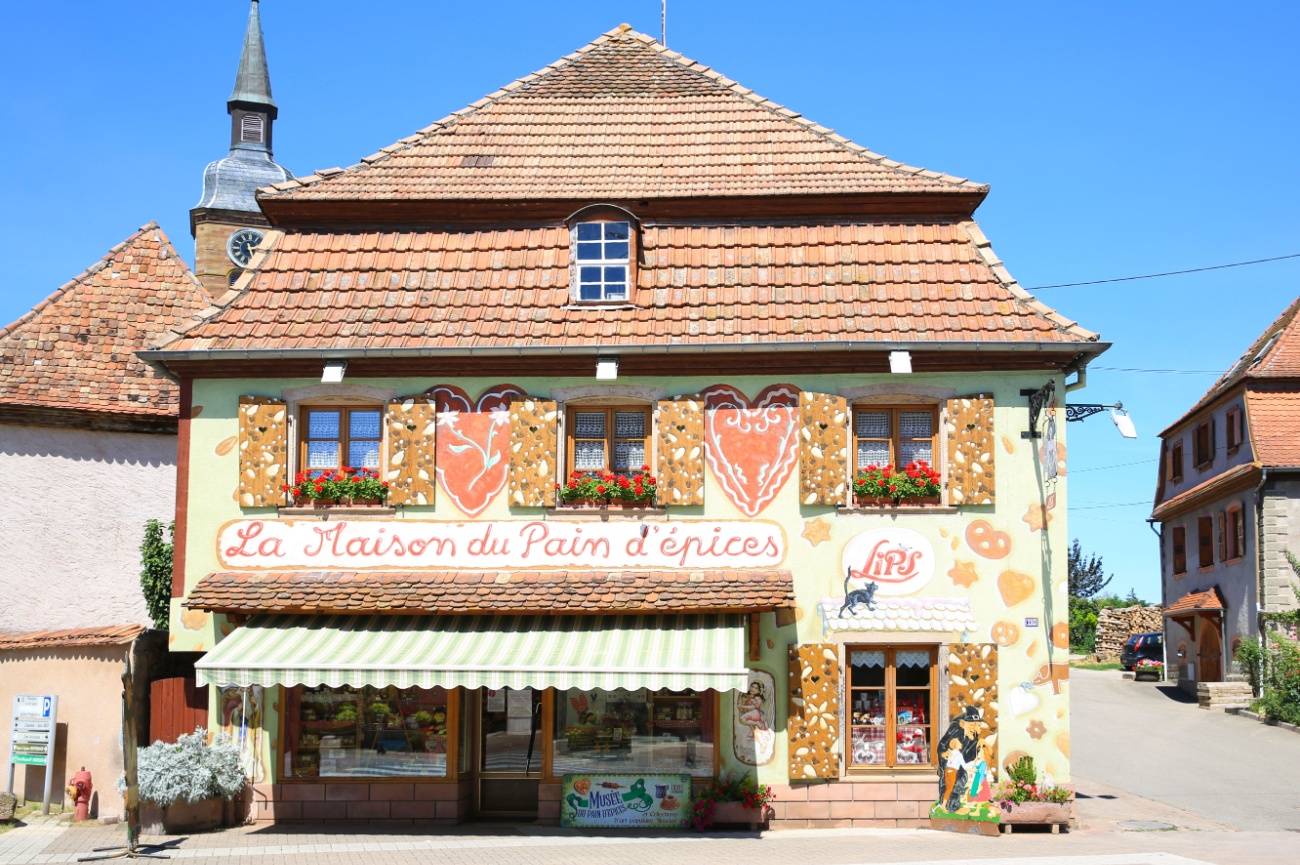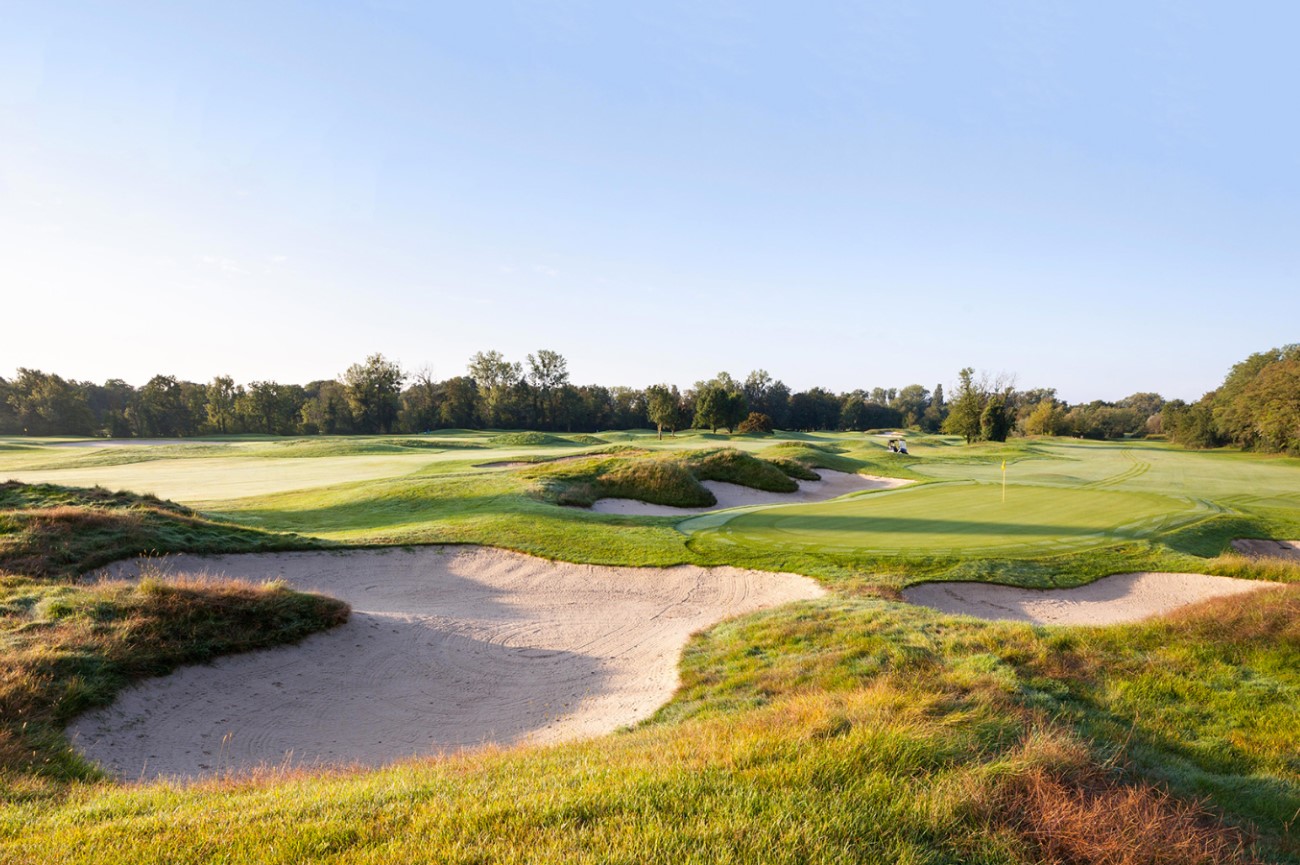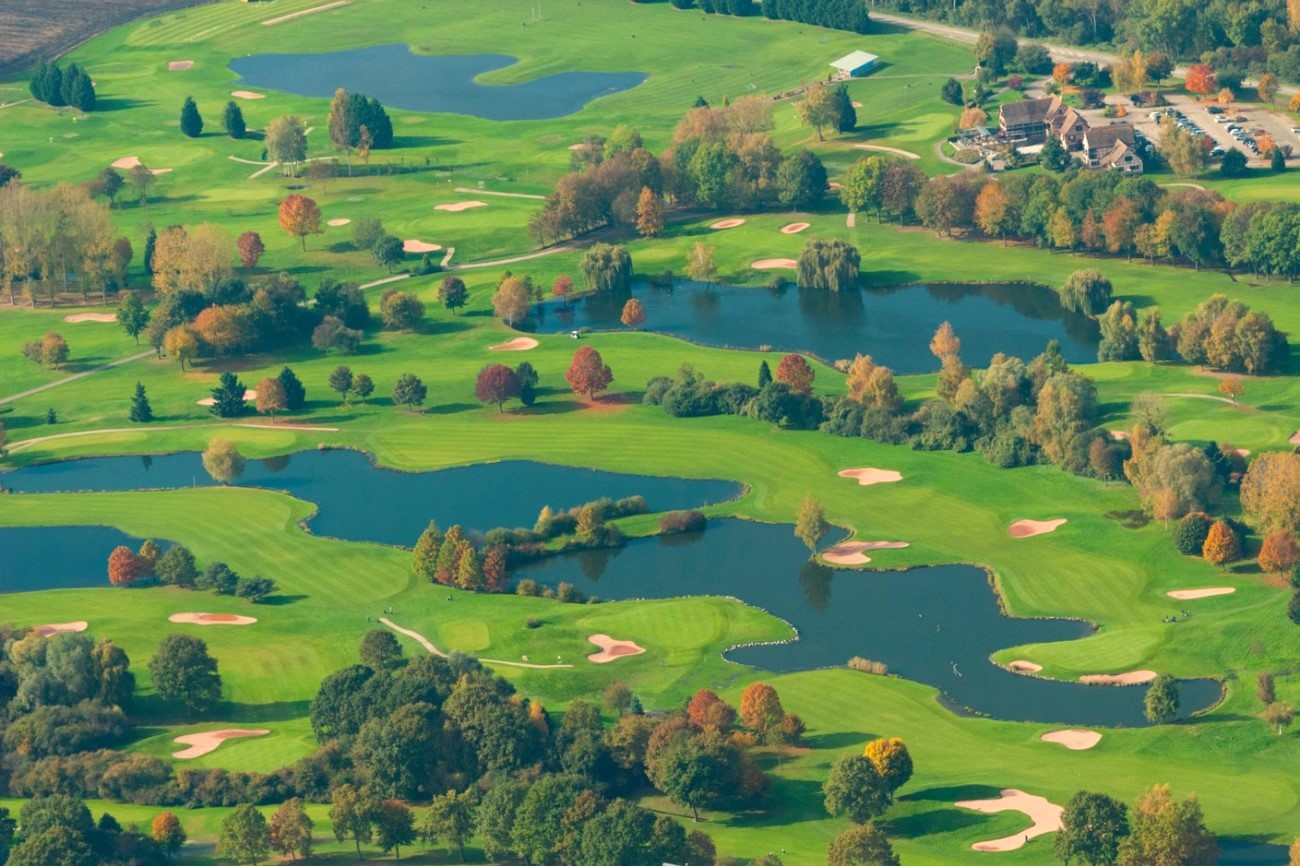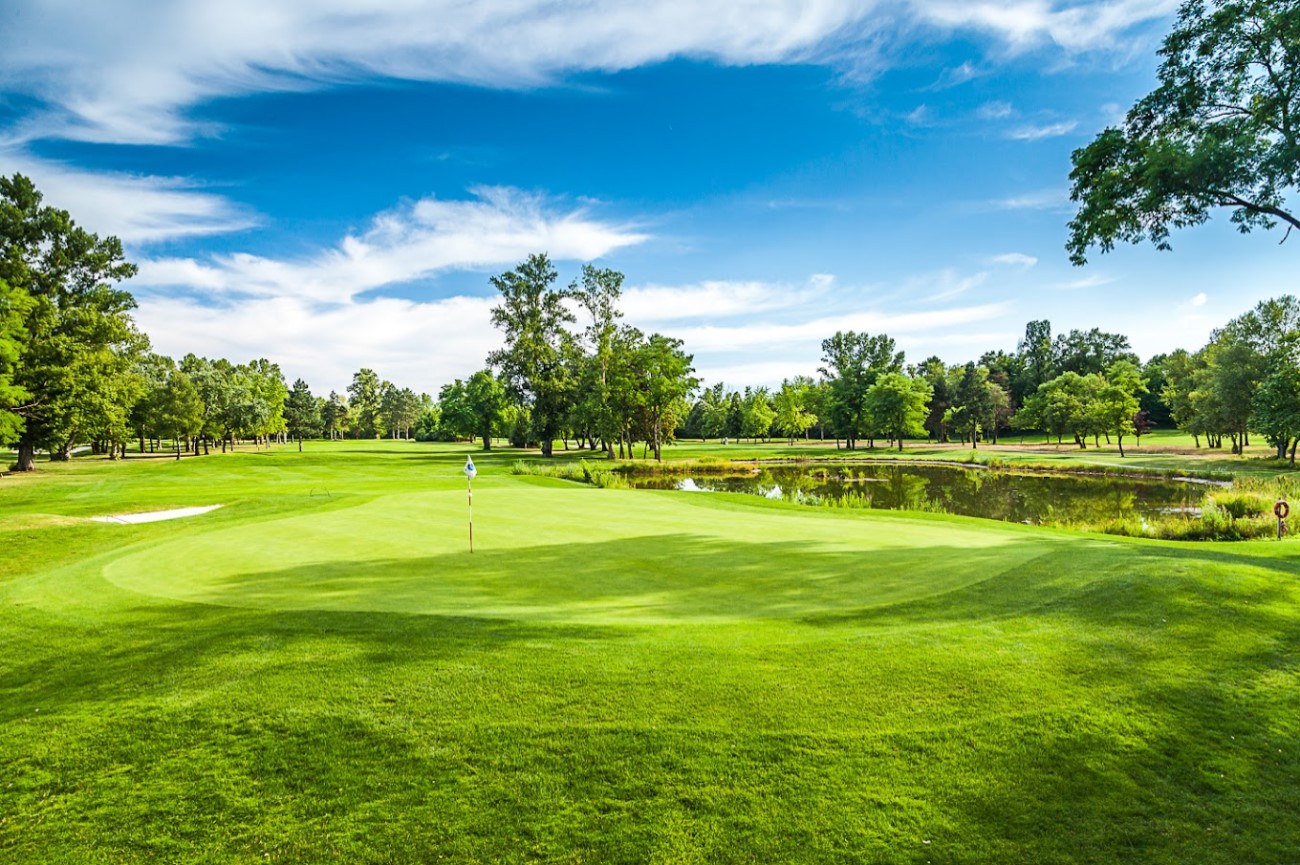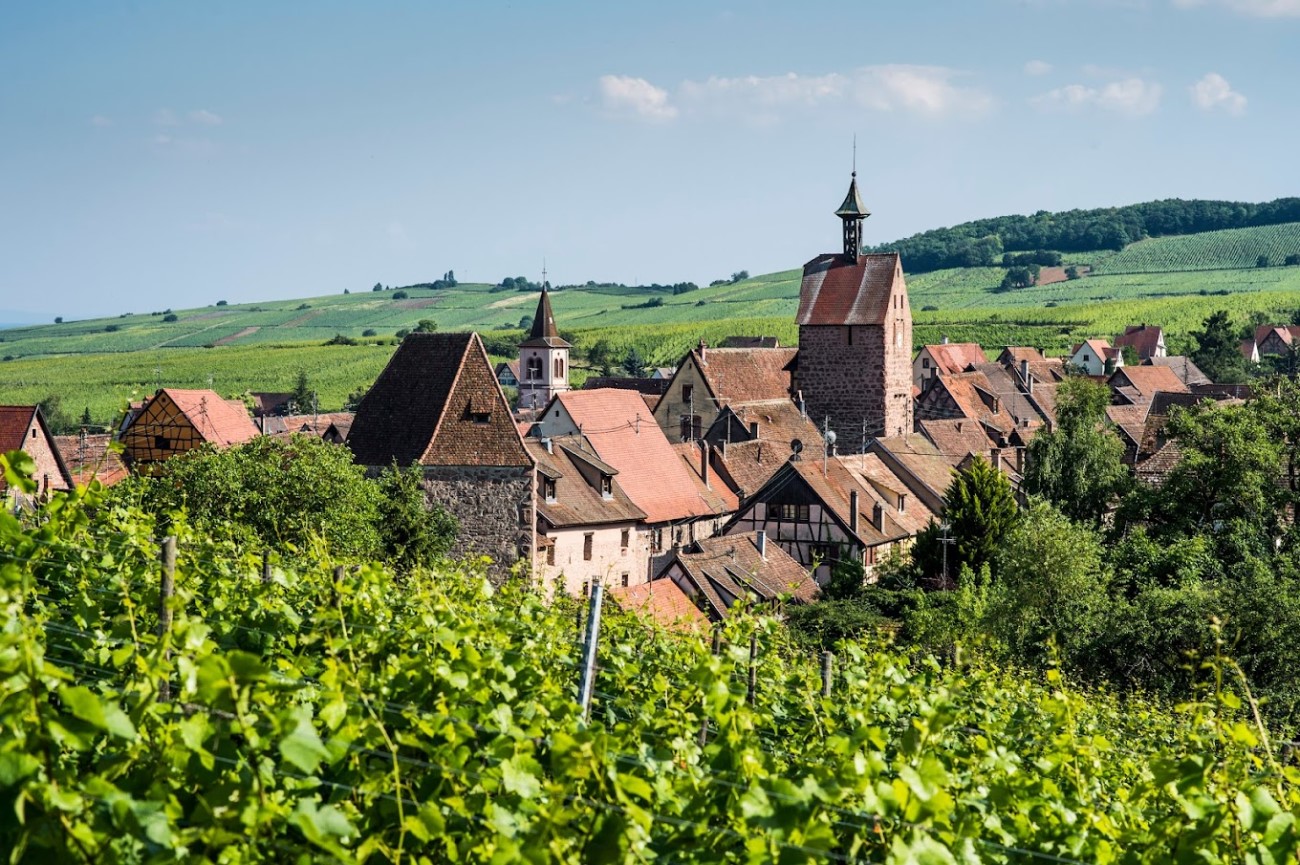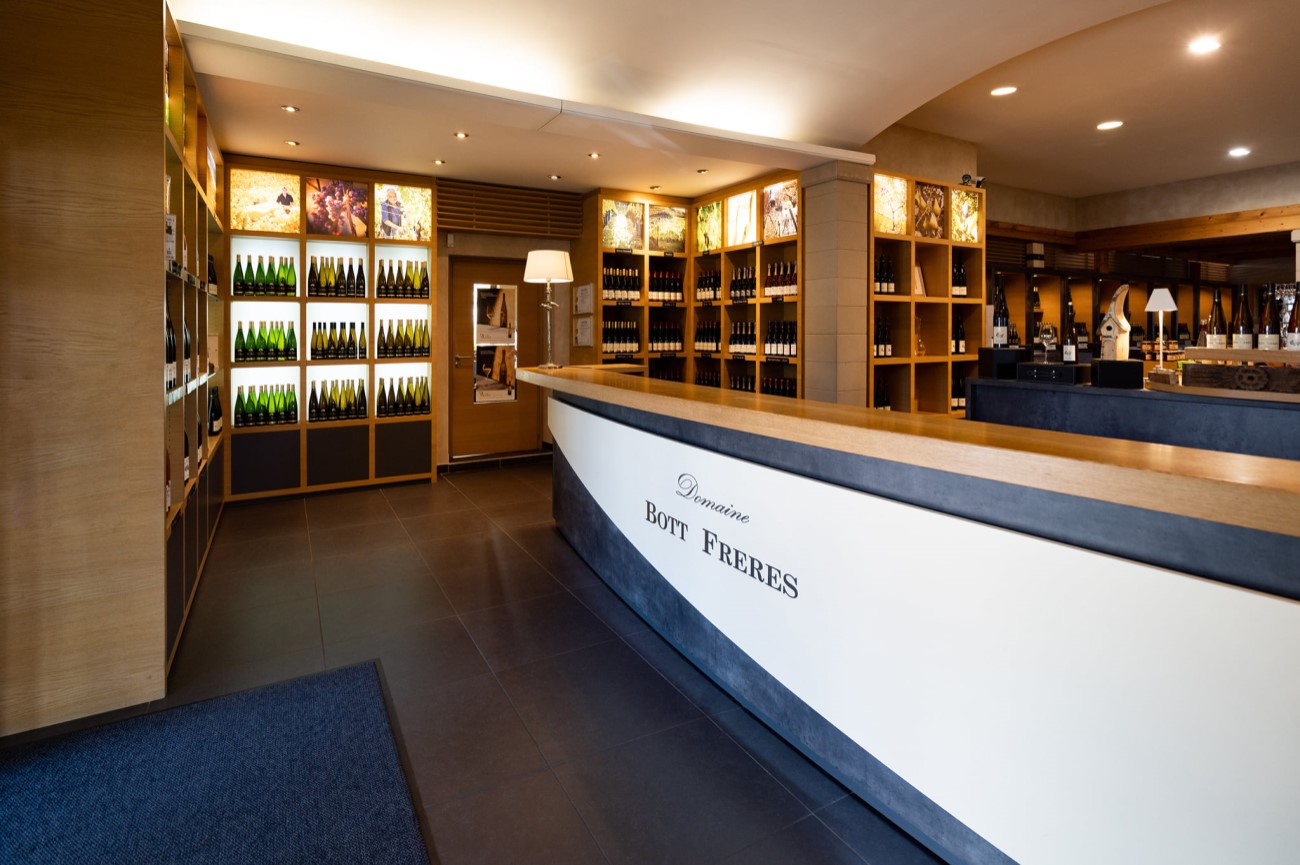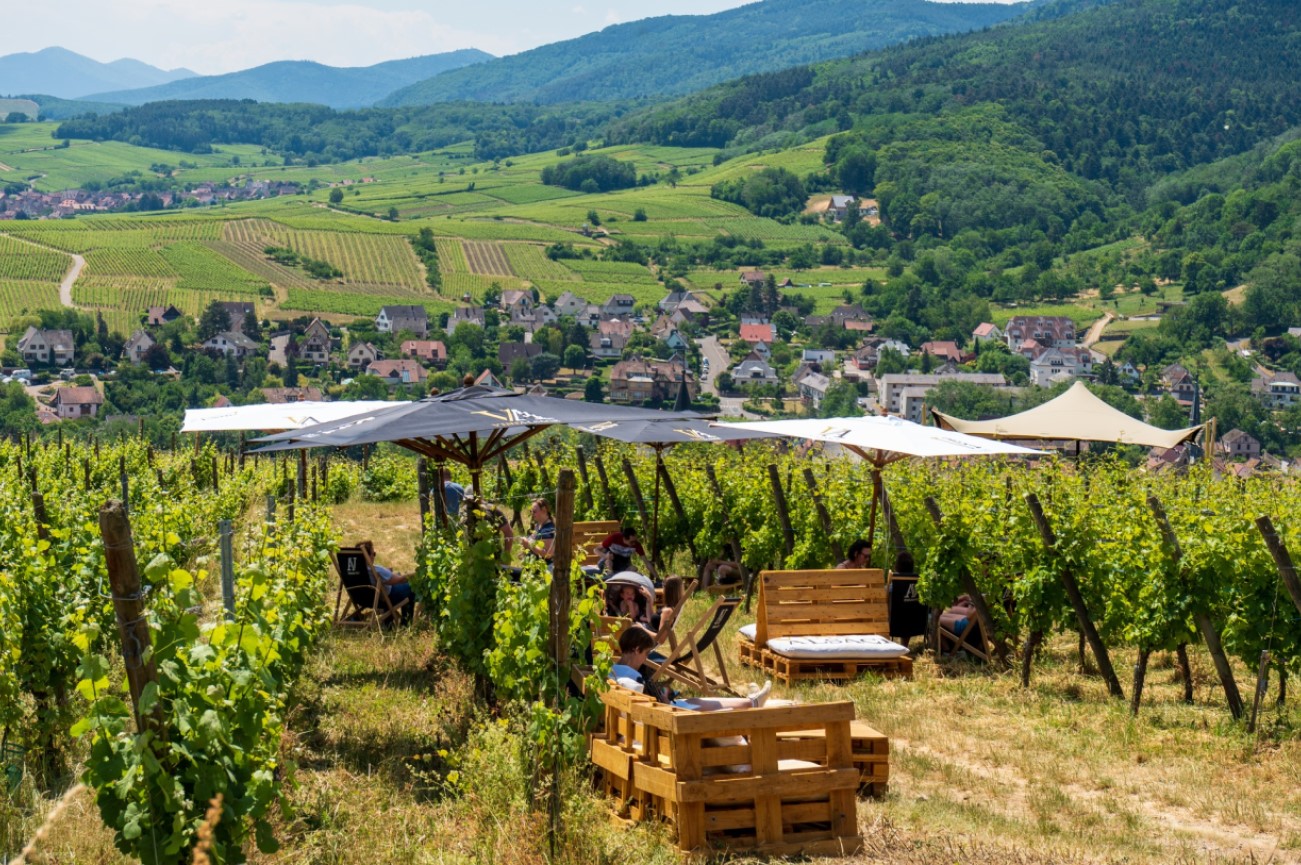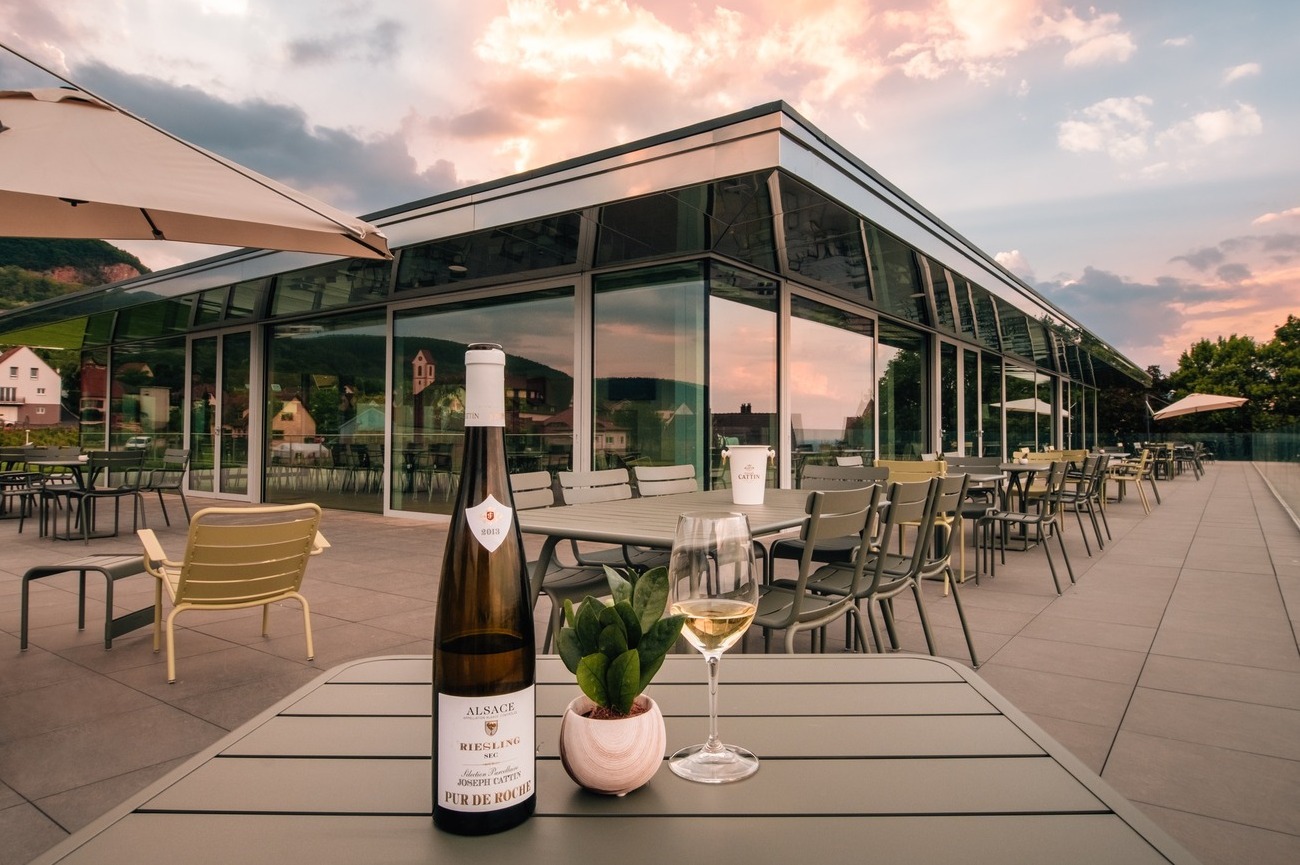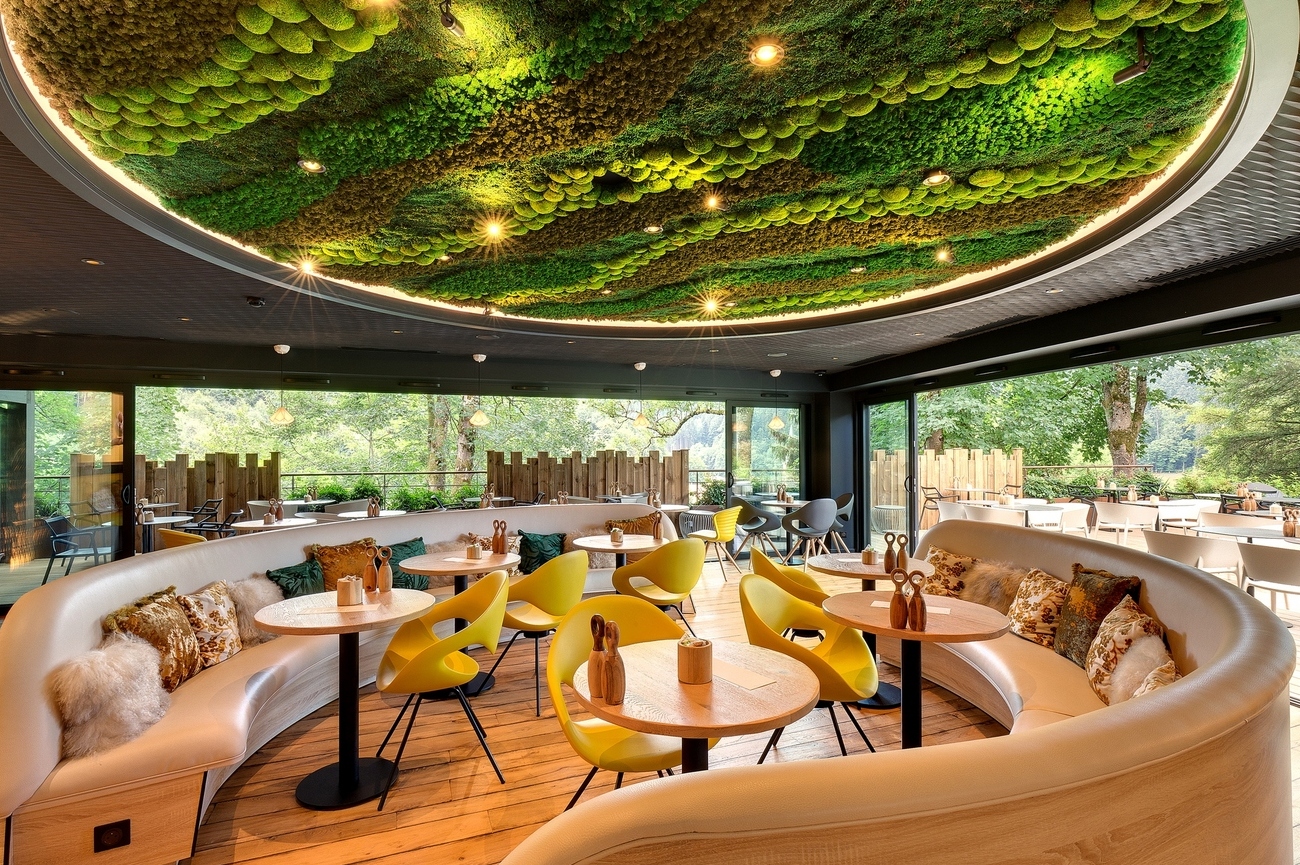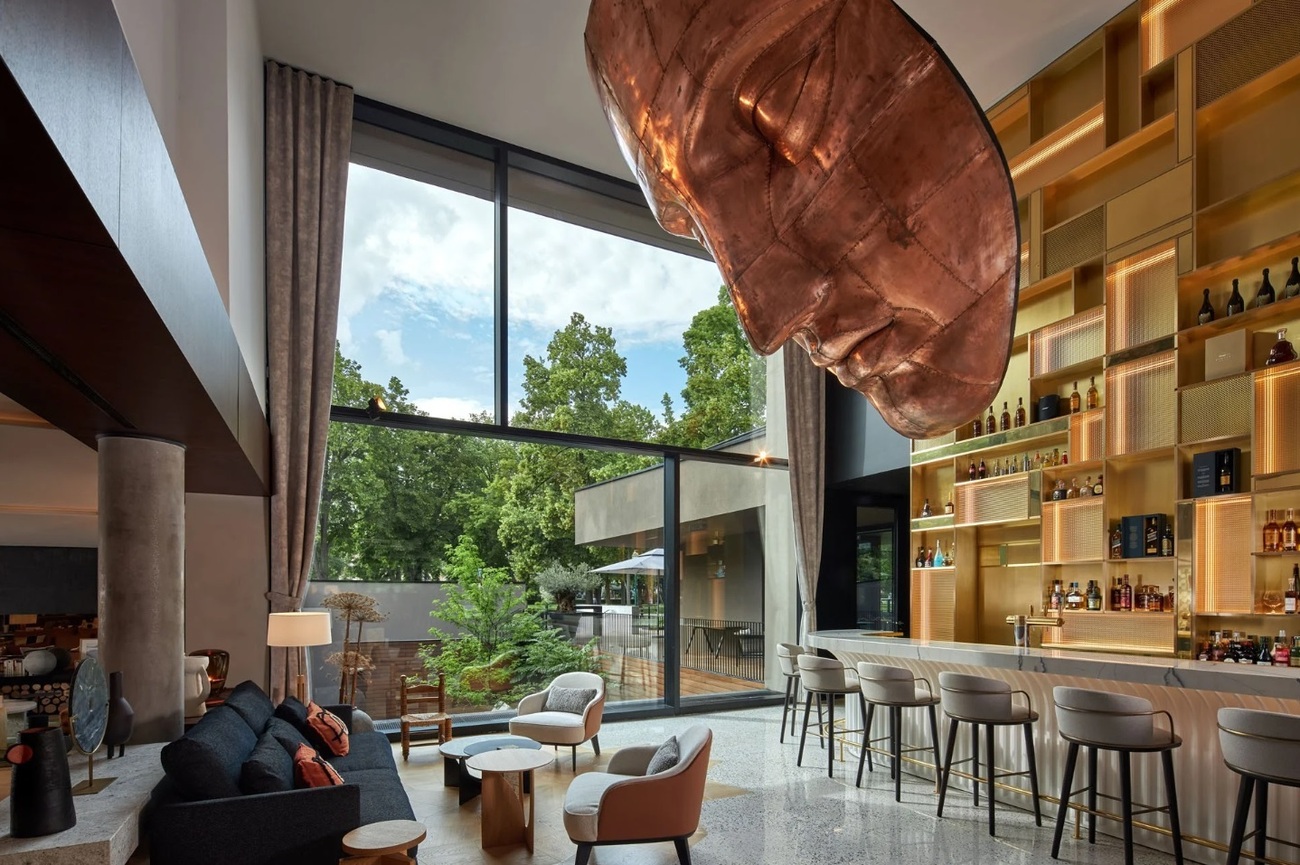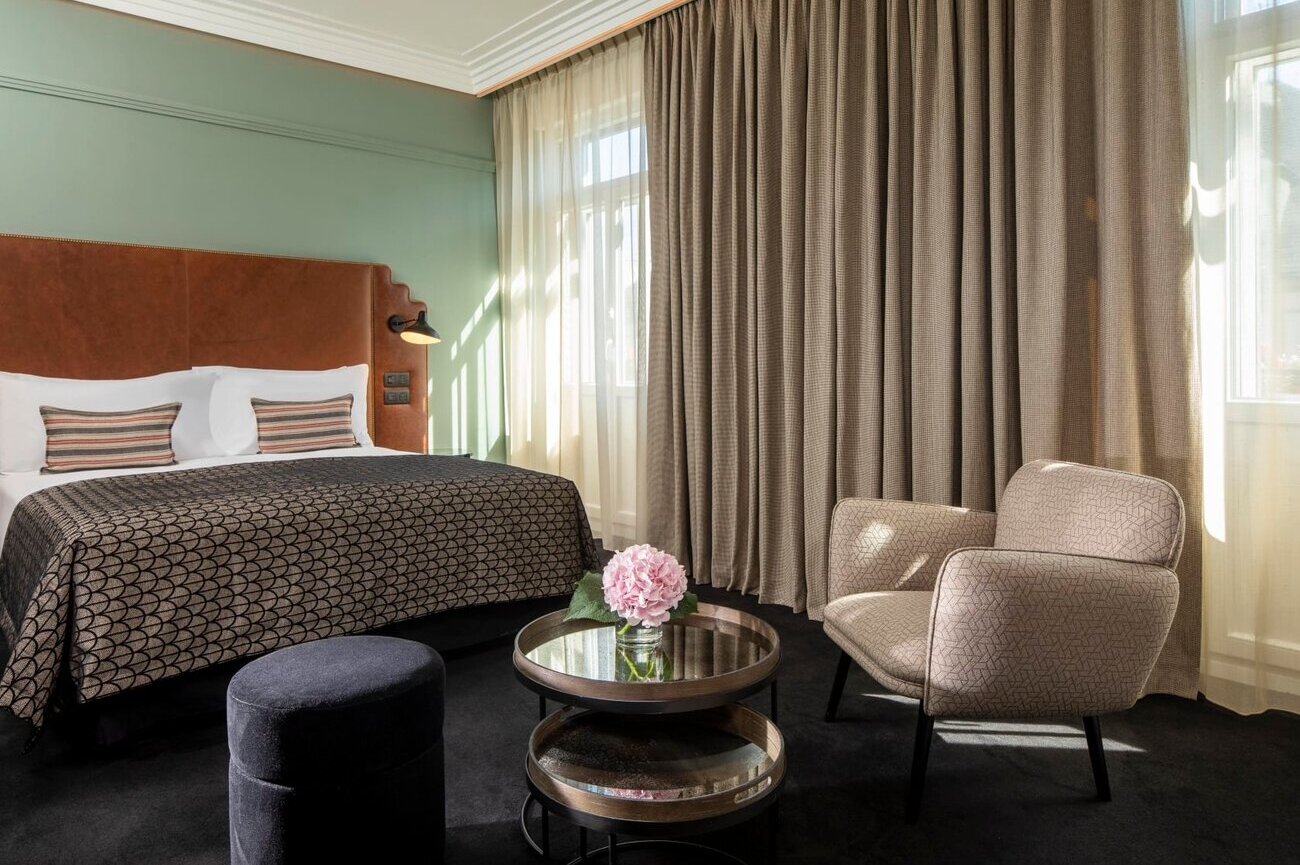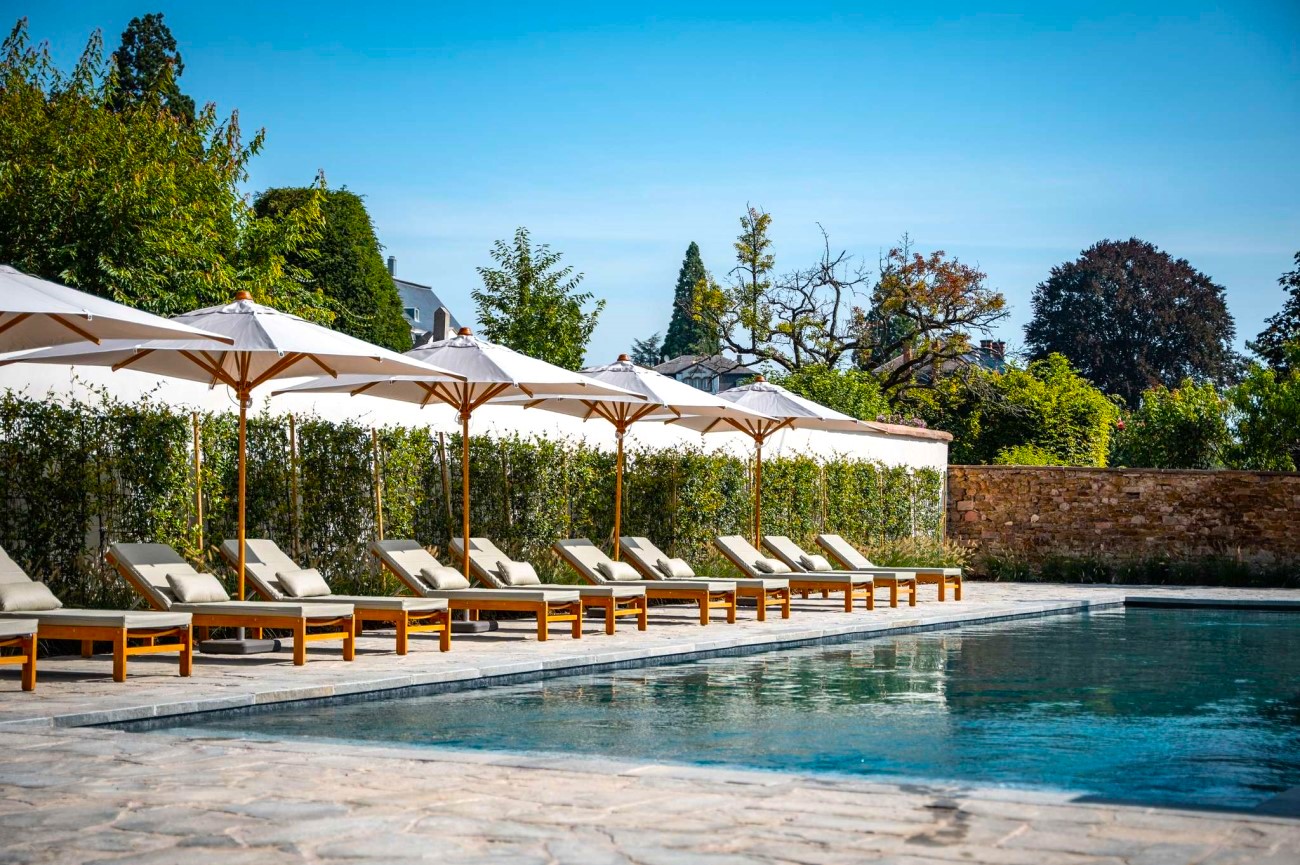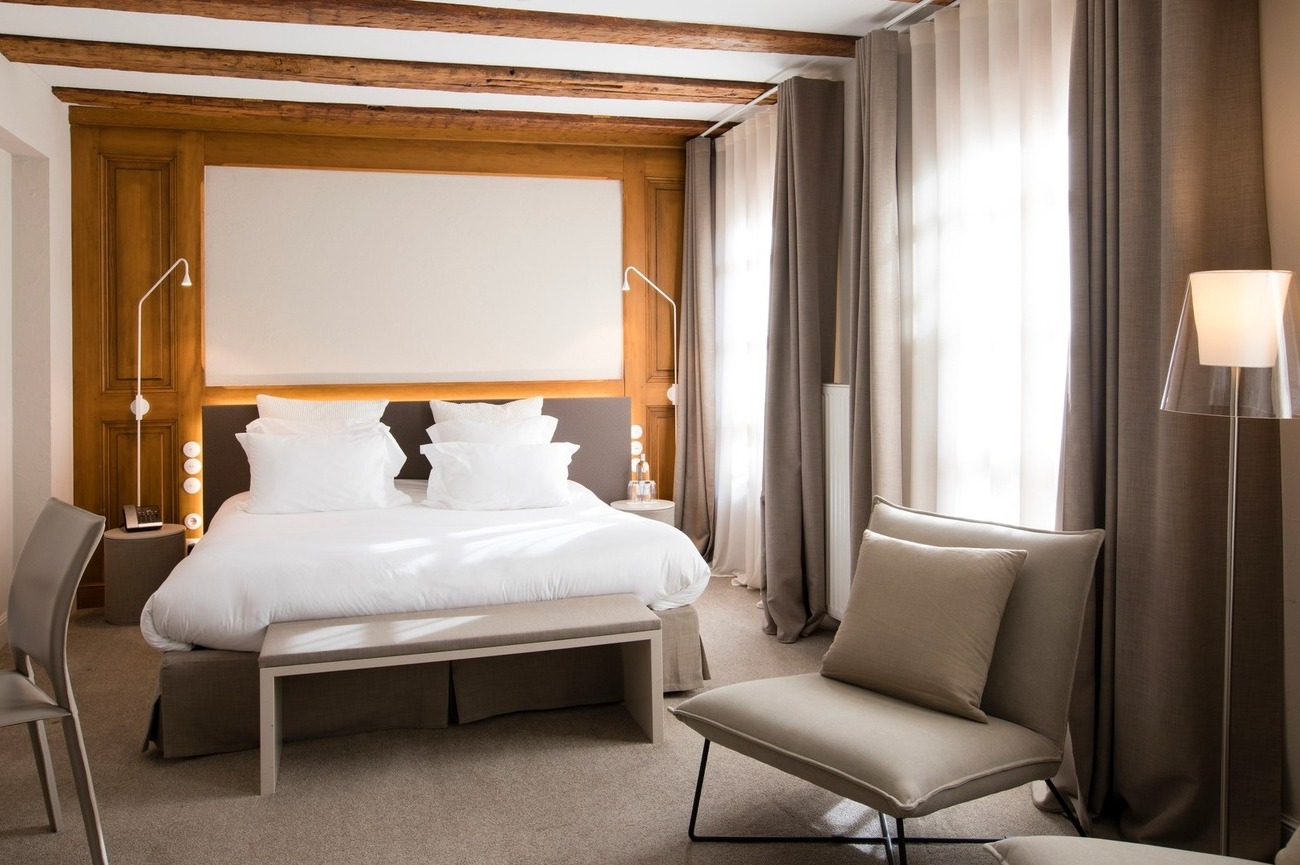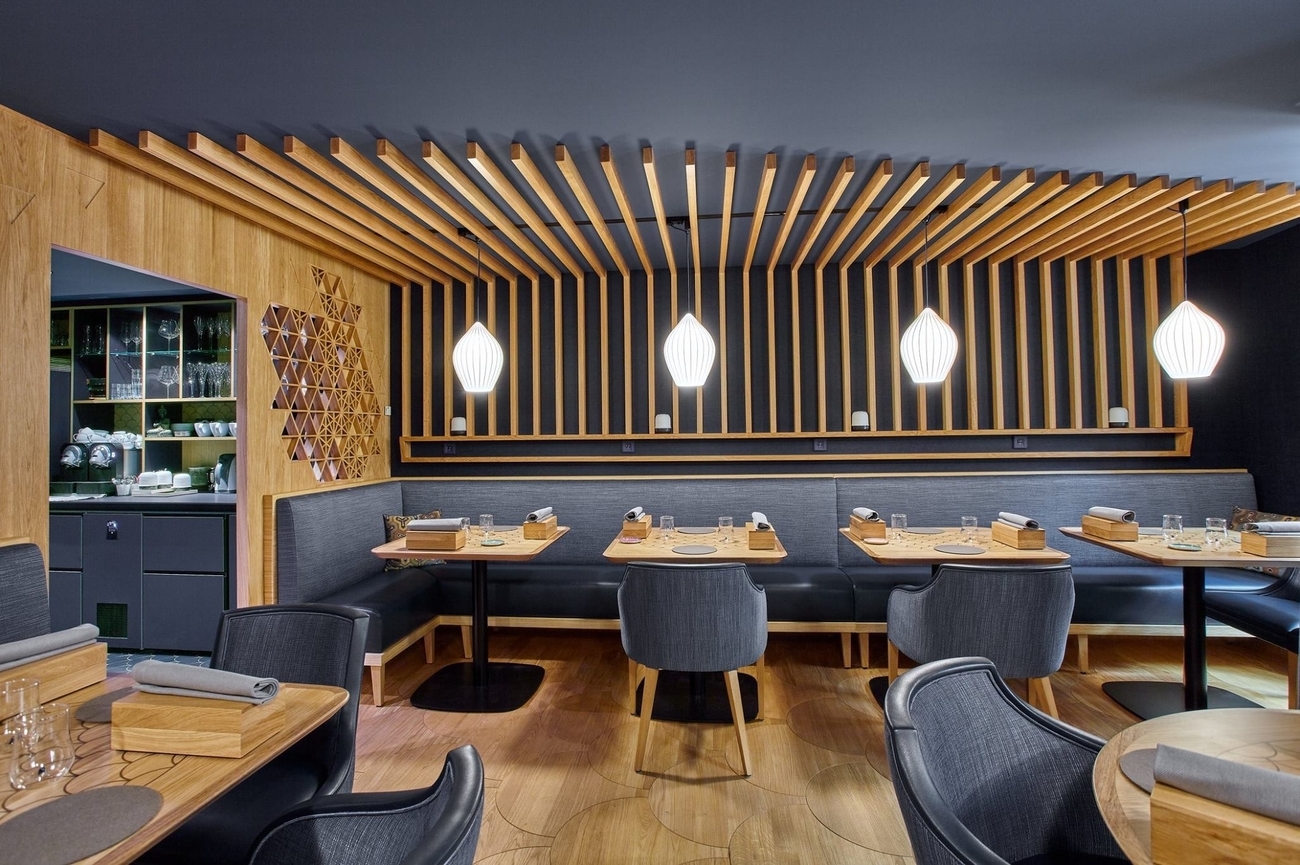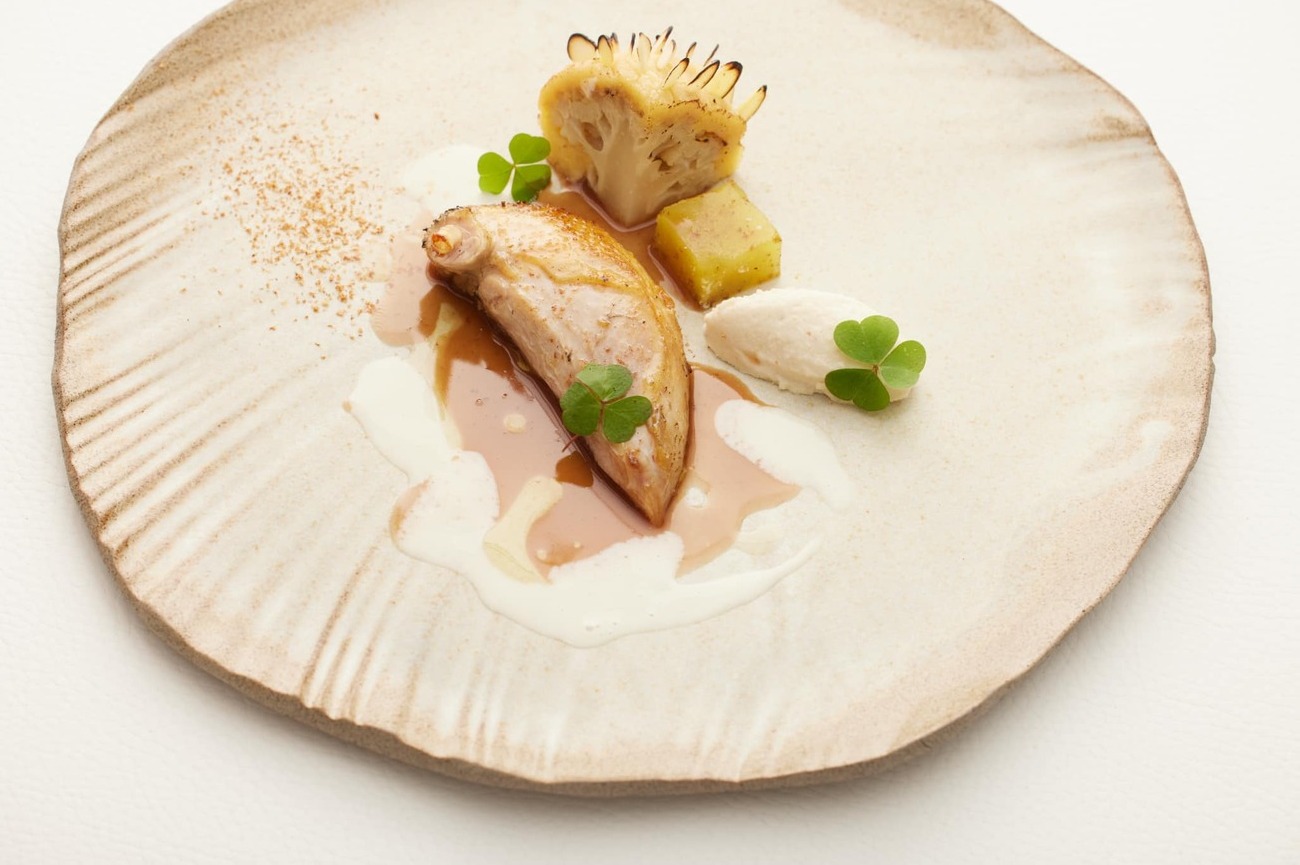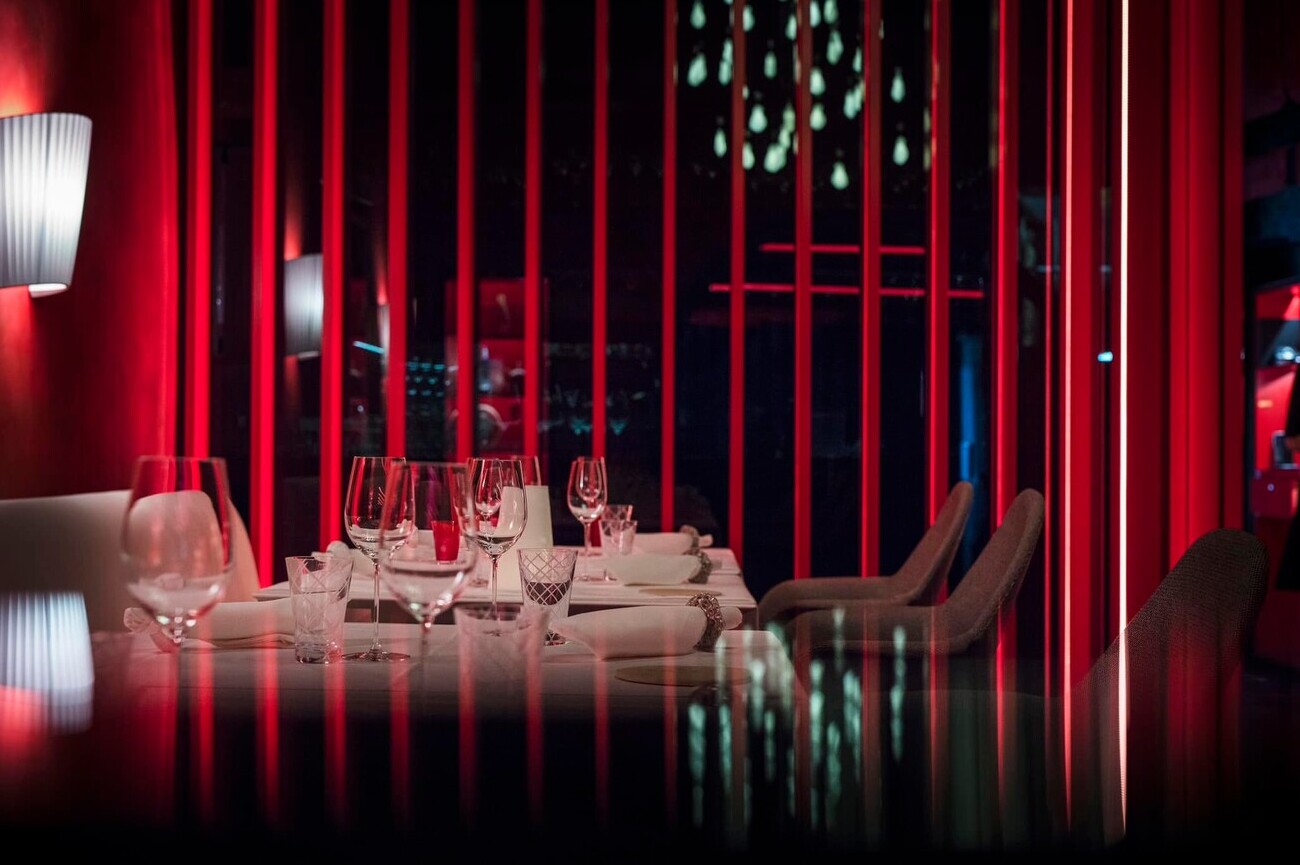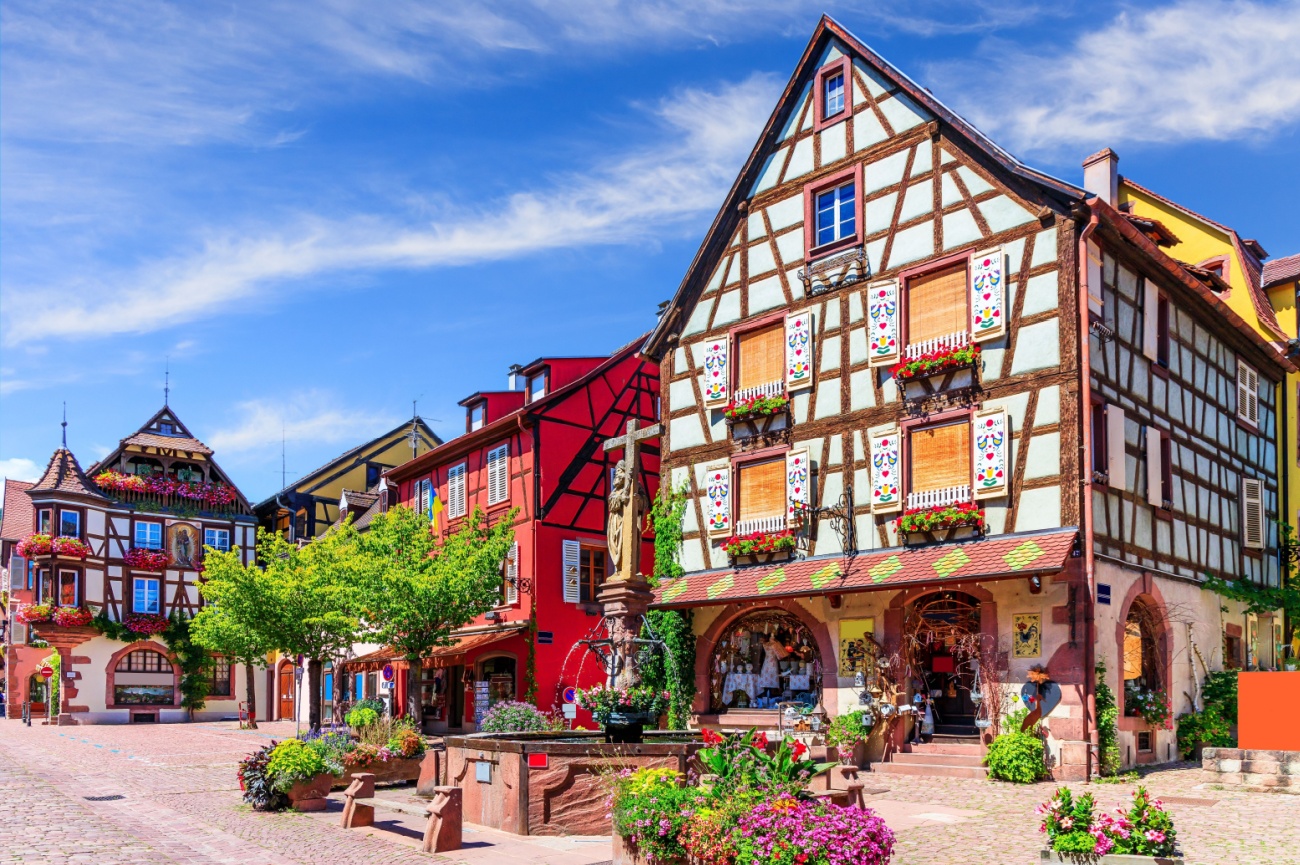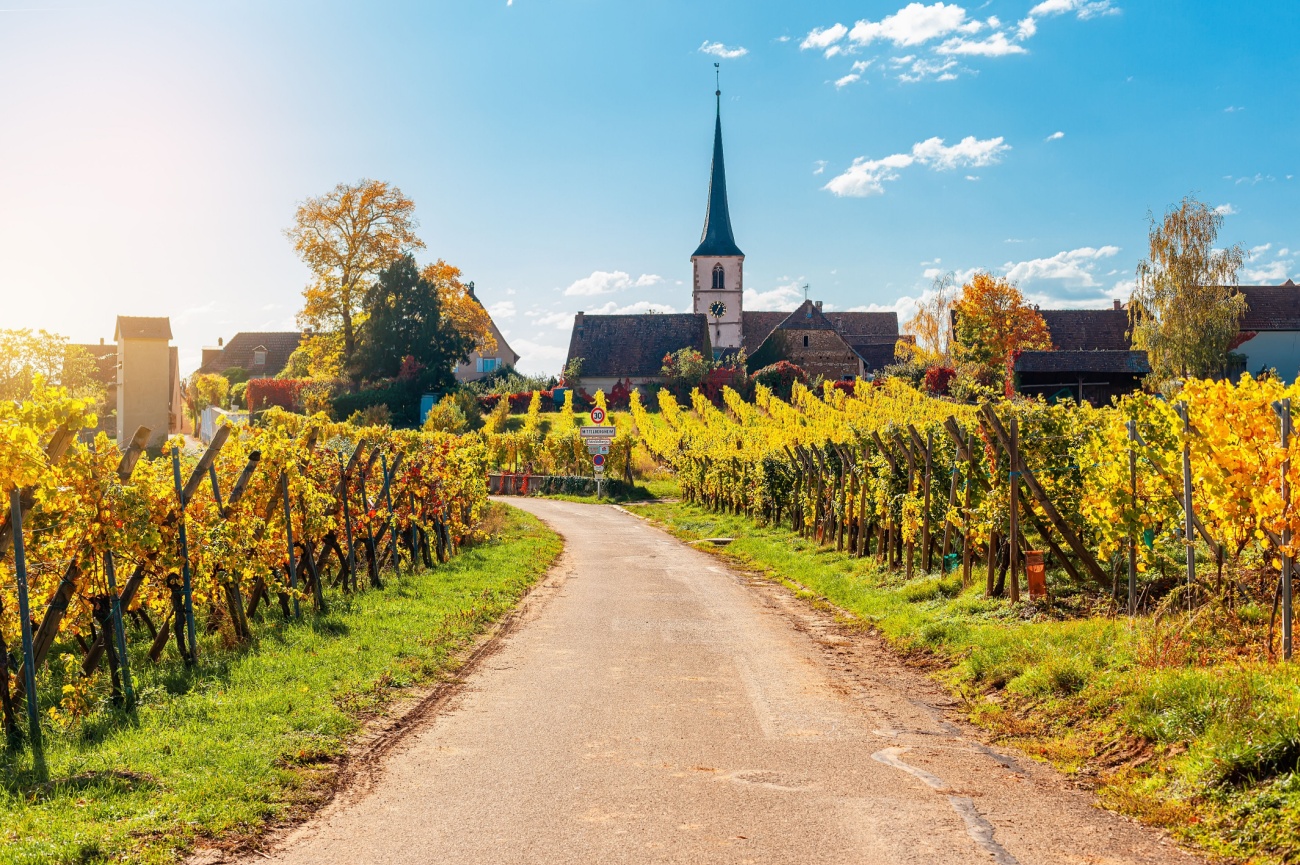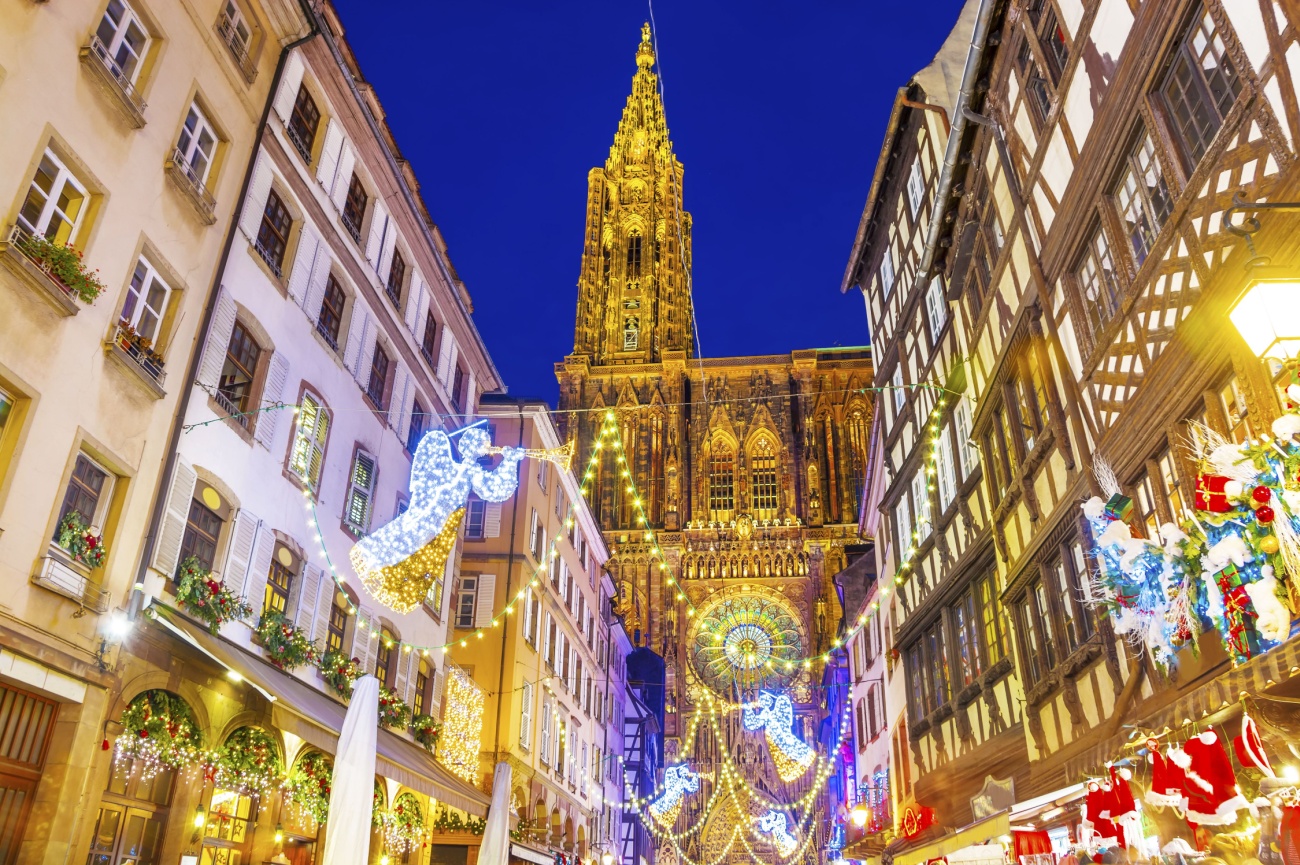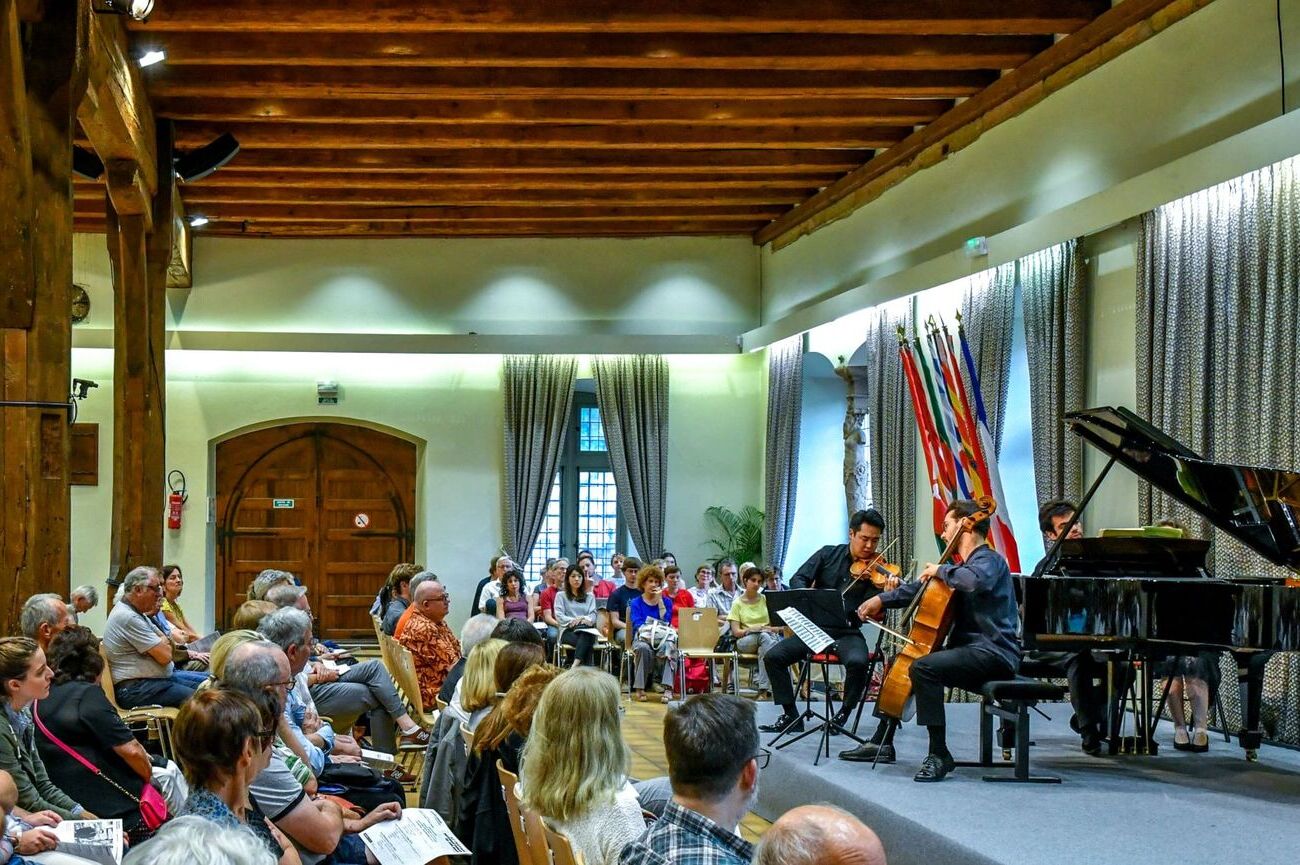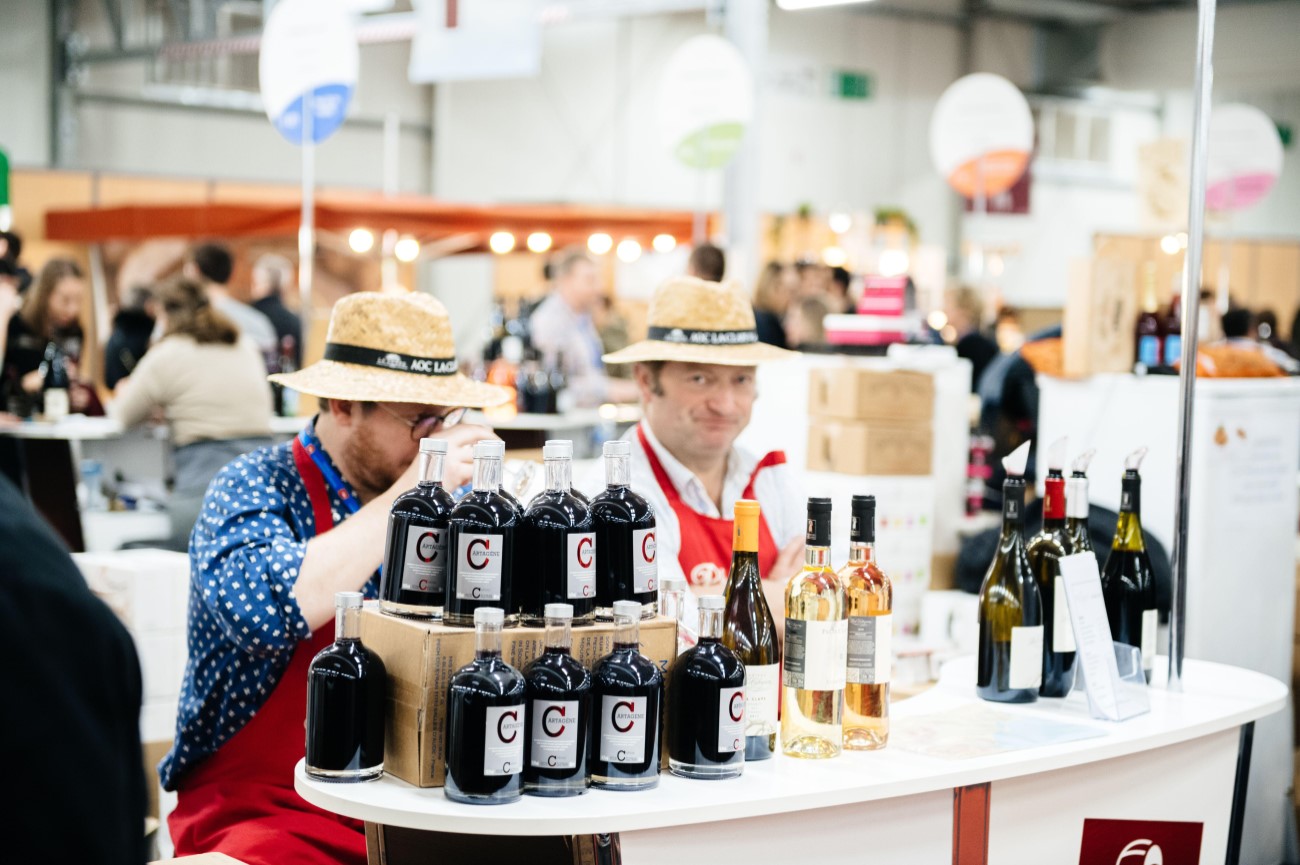THINGS TO DO IN Strasbourg & Alsace: 3-DAY ITINERARY
The Alsace region of France is straight out of a fairytale, with storybook villages that hug the border of Germany and leafy vineyards sweeping to the horizon. But there’s so much more to this region that meets the eye.
Once a war ravaged, much divided area of Europe, Alsace has always been in a border tug-of-war between France and Germany. Visitors will discover rich Medieval heritage, WWI and WWII sights, colorful half-timbered villages, and a distinctive cuisine that’s a mix of both German and French influences.
Visitors could spend weeks discovering every picturesque hamlet that dots the region's rolling countryside, but most will want to head straight for the larger cities of Strasbourg and Colmar. Strasbourg is the capital of Alsace and where this journey begins before visiting a few more Alsatian beauties along the way and ending it all in Colmar and Eguisheim.
Grab a glass of Gewurztraminer and start planning your holidays in Eastern France with this ultimate guide to three days in Alsace.
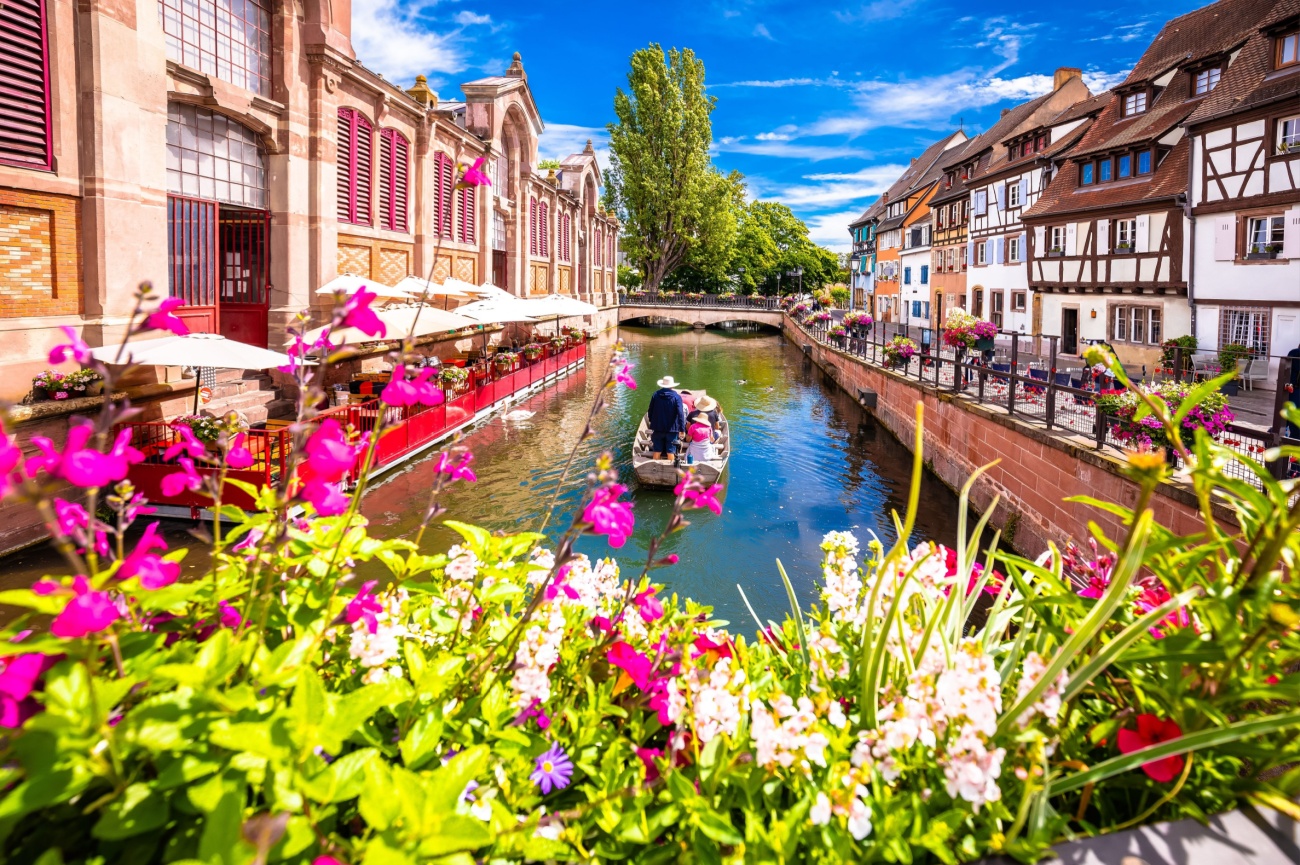 La Petite Venise, Colmar, France
La Petite Venise, Colmar, France
Strasbourg & Alsace Tour Map
Day 1: Strasbourg

Morning: Eglise Saint Thomas
Kick off your morning in Strasbourg at Eglise Saint Thomas. This Lutheran site of worship started being constructed in 1196 but wasn’t completed until 1521. The church's architecture is a mix of Romanesque and Gothic and features an 18th century organ (once played by Mozart), several tombs, a soaring nave, and biblical frescoes.
Place Gutenberg
Continue on to Place Gutenberg, one of the prettiest squares in Strasbourg, to see half-timbered buildings and a statue of Johannes Gutenberg, inventor of the printing press.
Cathédrale Notre-Dame-de-Strasbourg
The Cathédrale Notre-Dame de Strasbourg was completed in 1439, one of the best examples of Gothic architecture in France. Standing as the tallest building in Christendom until the 19th century, the cathedral is covered in elaborate sculptures, while the interior reveals a gorgeous rose window, intricate stained glass, and a massive organ.
One of its most fascinating features is the Horloge Astronomique, an extraordinary astronomical clock dating back to the 16th century. This intricate timepiece is a masterpiece of Renaissance engineering, with a complex system of gears, celestial calculations, and animated figures that come to life at solar noon each day. Visitors can witness a fascinating procession of mechanical apostles, while the clock’s detailed astronomical functions display lunar phases, planetary positions, and equinoxes with remarkable precision. A true marvel of craftsmanship, the Horloge Astronomique is one of the cathedral’s must-see attractions.
Musée de l’Oeuvre Notre Dame
Discover more about the incredible history of Strasbourg and the cathedral at the Musée de l'Oeuvre Notre Dame. Visitors can see the original building plans of the cathedral, stained glass, and other religious artifacts that span Medieval, Renaissance, and Early Baroque design periods.
Palais Rohan: Strasbourg’s Finest Museums
Step inside the grandeur of Palais Rohan, an exquisite 18th-century palace that once served as the residence of Strasbourg’s prince-bishops. Today, this architectural masterpiece is home to three remarkable museums, each offering a unique glimpse into art, history, and craftsmanship. The Museum of Fine Arts showcases an exceptional collection of European masterpieces, with works by celebrated artists such as Goya, Botticelli, and Raphael. The Museum of Decorative Arts invites visitors to admire opulent period rooms, intricate ceramics, and exquisite furnishings from the 17th to 19th centuries. Meanwhile, the Archaeological Museum delves deep into the region’s past, displaying fascinating artefacts from prehistoric times through to the Middle Ages. A visit to Palais Rohan is a journey through centuries of artistic and historical splendour, all set within one of Strasbourg’s most magnificent landmarks.
Historical Museum of the City of Strasbourg
Learn about Strasbourgs unique past at the Historical Museum of the City of Strasbourg which explores over nine centuries of the city’s history. From the Middle Ages to WWII, visitors can see portraits of Strasbourgs citizens, traditional clothing, weapons, and more.
Alsatian Museum
Learn more about the Alsace region and its unique history at the Alsatian Museum. Housed inside a 16th century mansion, you’ll sift through everyday items like furniture, wine jugs, a kitchen, pharmacy, and more, spread out through three different buildings.
Cave Historique des Hospices de Strasbourg
A wine cellar inside a hospital? That’s just what you’ll find at the Cave Historique des Hospices. Step inside the vaulted cellars to see Medieval wine barrels and the oldest white wine in the world, originally created in 1472 and served to General Leclerc after liberating Strasbourg in 1944. Patients often paid their dues in wine, which is why a wine cellar was required beneath the hospital. Some barrels date back to the 15th century.
Day 1, morning - Strasbourg Tour Map
Afternoon: Strasbourg
Museum of Modern & Contemporary Art
Pay a visit to the Strasbourg Museum of Modern & Contemporary Art, situated on the western side of the River Ill. Opened in 1998, visitors can see famous works from artists like Monet, Gaugin, Picasso, Rodin, and more.
Barrage Vauban
Cross the River Ill via the Barrage Vauban this afternoon. A dam, bridge, and city defense wrapped into one, the Barrage Vauban was built using pink sandstone between 1686 and 1690. Walk along the internal corridor, completely covered, and admire its architecture from either side of the dam.
Petite France
A UNESCO World Heritage Site, the Petite France neighborhood was once reserved for syphilitic patients but is now one of the most charming corners of the city. Stroll along the idyllic canals, half-timbered homes with overflowing flower boxes, and over covered bridges.
Place Kleber
Continue on to Place Kleber, possibly the most beautiful square in Strasbourg to admire the architecture and grab a glass of Gewurztraminer. This is also the largest square in the city and where the famous Christmas market is held every year.
Grand-Île de Strasbourg
The largest island in Strasbourg, the Grand-Île is home to some of the city's oldest mansions, cathedrals, and more. See the Rohan Palace, the famous Kammerzell House, and more.
Église Saint Pierre-le-Jeune
End your day in Strasbourg at the Protestant Eglise Saint-Pierre-le-Jeune. A site of worship since the 7th century, the church you see today was originally built in the 14th century, although added to over hundreds of years. Visitors will find cloisters, tombs, arcaded galleries, and frescoes, a medley of Gothic, Romanesque, and Neo-Gothic features.
Day 1, afternoon - Strasbourg Tour Map
Day 2: Ribeauville, Kaysersburg, & Riquewihr

Morning: Ribeauville
Your second day in Alsace is all about exploring the three fairytale villages of Ribeauville, Kaysersberg, and Riquewihr, each about a 20 minute drive apart.
- La Grand Rue: Ribeauville is a quintessential Alsacian village, centered on the Grand Rue. Take a stroll down this boulevard to admire the traditional architecture, flowers, and cobbled lanes with plenty of time to stop for lunch and a glass of Alsatian wine along the way. A stop in Ribeauville is all about enjoying simple pleasures rather than hard-hitting sites.
- Château de Saint-Ulrich: After spending a bit of time in Ribeauvilles center, head just outside the city to Chateau de Saint-Ulrich. Abandoned in the 16th century, this chateau was once the home of a local lord, visitors can still stroll through the keep, chapel, and along the salle des chevaliers. The castle doesn’t have a ticketed entrance but does have informational plaques and visitors will have to hike to reach it. Visitors can also admire the ruins of Chateau de Girsberg and Chateau de Haut-Ribeaupierre, which are tucked just beside Chateau de Saint-Ulrich.
Day 2, morning - Ribeauville Tour Map
Afternoon: Kaysersberg & Riquewihr
Riquewihr
Another beautiful, Medieval village, Riquewihr is famed as the model for Beauty and the Beast. Spend a few hours admiring its historic architecture and visiting the town's museums.
- Musee du Dolder: Situated inside Riquewihr’s most famous monument, the Dolder Belfry Tower, the Musee du Dolder is a window into Medieval Alsace’s past. Learn more about the town's defenses, who lived within its walls, and more. Climb to the very top floor for panoramic views of the countryside and village.
- Musee Tours des Voleurs: Another museum tucked inside a Medieval tower, the Museum of Thieves showcases more of Riquewihr ramifications. Visitors can tour a torture chamber, dungeon, and guard room.
Day 2, afternoon - Riquewihr Tour Map
Kaysersberg
The birthplace of Nobel Peace Prize Winner Albert Schweitzer, the storybook village of Kaysersberg is the perfect spot to end your second day in Alsace.
- Eglise Saint-Croix: Crowned with a copper dome, the Eglise Saint-Croix has a distinctly German look. A classified historical monument, several famous religious artworks are hidden inside, including the Passion of Jesus altarpiece and a pipe organ from 1720.
- Constantine Fountain: Continue on to the heart of Kaysersberg to see the Constatine Fountain, surrounded by half-timbered architecture. Made of pink and yellow sandstone, the sculpture of Emperor Constatine is a nod to his end of the persecution of Christians.
- Musee Historique de Kaysersberg: A museum dedicated to Kaysersberg history and how it shaped the town, visitors will find everything from artifacts like Neolithic axes to religious art, spread out on the second floor of a traditional, half-timbered home.
- Centre Schweitzer: Once the home of Albert Schweitzer, a visit to the Centre Schweitzer is a must in Kaysersberg. Learn more about the doctor and his work and experience both temporary and permanent collections.
- Chateau de Kaysersberg: Once an imperial castle, the Château de Kaysersberg is another of Alsace’s ruined chateaux. Built in the early 13th century, visitors can still explore this granite masterpiece including storerooms, residential buildings, and more.
Day 2, afternoon - Kaysersberg Tour Map
Day 3:
Colmar & Eguisheim

Morning: Colmar
Begin your last day in Alsace in the charming city of Colmar, just a 20 minute drive from Riquewihr. You’ll spend most of the day here before ending the trip in nearby Eguisheim.
- Musée d'histoire naturelle et ethnographie: Start your tour of Colmar by visiting Musée d'histoire naturelle et ethnographie. You’ll learn more about the region and world’s history through artifacts like fossils and mummies alongside geologic materials.
- La Petite Venise: Colmar is often referred to as La Petite Venise due to its idyllic canals. Take a stroll through this small section of town to admire the architecture, overflowing flower boxes, and small boats puttering by.
- March Couvert Colmar: Continue on to the March Couvert Colmar, a covered market where you’ll find delicious Alsatian bites and wine. Built in 1865, you’ll have the chance to sift through local produce, fresh baked bread, Alsatian cheese, pretzels, spices, and more.
- Schwendi Fountain: Stroll past the Schwendi Fountain, a sculpture of a man who was once a lord of Hohlandsbourg. This is one of the most beautiful cobblestone squares in Colmar and surrounded by a rainbow of traditional half-timbered buildings.
- Collegiale Saint-Martin de Colmar: Colmar’s Gothic gem, the Collegiale Saint-Martin de Colmar was built from the 13th to 14th centuries. Visitors will find architectural features like the towering steeple, stone portals, stained glass, an antique clock, and the famous stork nest at the top of the rear spire.
- Musee Bartholdi: Housed inside the former home of Auguste Bartholdi, a famous sculptor and artist who was born in Colmar, the Musee Bartholdi holds several of his masterpieces, furniture, drawings, and more.
- Maison Pfister: Designed for famous hat maker Ludwig Scherer, in the 16th century, the Maison Pfister is one of the most beautiful examples of Renaissance architecture in Colmar. While you can’t go inside, it's worth a look at the building's facade.
- Choco Story Colmar: Learn more about the history and production of chocolate at Choco Story Colmar. Visitors have the chance to taste each chocolates' subtle differences, meet chocolatiers, seek out chocolate sculptures, and even create their very own chocolates. Children will love this experience and its interactive exhibits!
- Eglise des Dominicains: Built from the 13th to the 15th centuries, Eglise des Dominicains hides gorgeous cloisters, a soaring nave, and stained glass windows that are worth popping in to see.
- Le Village Hansi & son Musee: Step inside Le Village Hansi, a museum entirely dedicated to the famous artist Hansi and his watercolors. Also known as Jean-Jacques Waltz and Oncle Hansi, Hansi created satirical artwork during WWI and is a beloved Alsatian son to this day.
Day 3, morning - colmar Tour Map
Afternoon:
Eguisheim
End your Alsace road trip in the pipsqueak town of Eguisheim. Although this village is tiny, visitors will find delicious local wine, quintessential architecture, and the famous three castles on the outskirts of town.
- Chapelle Saint Leon IX: There isn’t much to see in the center of Eguisheim (aside from wineries) than the Chapelle Saint Leon IX. Dedicated to the pop of the same name, the chapel was consecrated in 1894 and has stained glass that represents the saints of Alsace.
- Les Trois Châteaux d’Eguisheim: Now in ruins, Les Trois Chateaux d’Eguisheim overlooks the village and countryside from their precipice on a hill. Built between the 11th and 12th centuries, the castles once included the Wahlenbourg, Dagsbourg, and Weckman, although the remains of only one chateaux are still partially intact.
Day 3, afternoon - Eguisheim Tour Map
Other Things To See And Do In Alsace
- Musee des Eaux de Vie Rene de Miscault: A museum dedicated to the process of making eaux de vie, a fruit brandy, the Musee des Eaux de Vie Rene de Miscault explores the distillation process of this almost forgotten liquor. See antique stills, bottles, paper paraphernalia and a collection of over 10,000 mini bottles of brandy.
- Ecomusee d’Alsace: The largest open-air museum in France, Ecomusee d’Alsace is a recreated, early 20th century Alsatian Village situated on almost 100 hectares. Discover 80 different buildings, from colorful half-timbered homes to fortified towers. Visitors will also find resident animals, tractor and boat rides, and live actors. This also happens to be one of the best things to do with kids in Alsace.
- Thur-Doller Tourist Train: Take a ride down a 12km section of track on the Thur-Doller Tourist Train. This antique locomotive chugs between the tiny villages of Cernay and Sentheim, with plenty of gorgeous countryside to see along the way. Themed trains are also on offer, including a kids train and Christmas train.
- North Vosges Regional Natural Reserve: Tucked just north of Strasbourg, the North Vosges Regional Natural Reserve is a UNESCO Biosphere Reserve that’s great for hiking and getting out in nature. The region is also home to several chateaux for those who want to make a day trip of it.
- Hartmannswillerkopf: Once a rocky outcrop used as an outlook and later a battlefield in WWI, the Hartmannswillerkopf (also known as the Vieil Armand) is now a war memorial and museum dedicated to French-German relations and history. This is a good museum to visit if you’re interested in understanding more about Alsatian history and its ever-changing border.
- Fort Schoenenbourg: One of foremost fortifications along the infamous Maginot Line, Fort Schoenenbourg is an important landmark for history buffs. Visitors can take a tour of the kitchen and barracks and see ammunition magazines, gun turrets, and more.
- Unterlinden Museum: Housed inside a 13th-century convent in Colmar, the Unterlinden Museum displays art that spans over 7,000 years from Renaissance tapestries to French Impressionism.
- European Parliament: Strasbourg is not only the capital of Alsace but also one of Europe’s political powerhouses. The European Parliament stands as a striking symbol of unity, where major decisions shaping the continent are debated and passed. Visitors can take guided tours of this impressive glass-fronted building, watch parliamentary sessions in action, and learn more about how the European Union operates.
- Ponts Couverts: The Ponts Couverts in Strasbourg are a set of fortified bridges and towers from the 13th century that once formed a crucial part of the city's medieval defences. While their original wooden roofs are long gone, their name endures, and the bridges remain one of the most picturesque spots in Strasbourg. Offering stunning views of the canals and the timber-framed houses of Petite France, this historic site perfectly blends the city's rich past with its timeless beauty.
- Barrage Vauban: Built in the 17th century to fortify Strasbourg against invasion, the Barrage Vauban is a feat of engineering that still stands proudly across the River Ill. Designed by the military architect Vauban, this combination of dam and bridge once served as a flood defence and could even be flooded to protect the city from attack. Today, visitors can stroll through its covered walkway and enjoy panoramic views of Strasbourg from the rooftop terrace.
- Mont Sainte-Odile: Perched high in the Vosges Mountains, Mont Sainte-Odile is a place of breathtaking beauty and deep spiritual significance. Once a convent founded by Sainte Odile, the patron saint of Alsace, this historic monastery now welcomes pilgrims, hikers, and travellers seeking tranquillity. From its hilltop vantage point, the sweeping views over the Alsace plains stretch for miles, making the journey up here well worth it.
- Mulhouse Automobile Museum: Car enthusiasts will find themselves in paradise at the Mulhouse Automobile Museum, the world’s largest automobile museum, housing over 400 vintage and luxury vehicles. From classic Bugattis to gleaming Rolls-Royces, this collection is a celebration of engineering and design. Interactive displays and restored models bring the history of motoring to life, making this a must-see for anyone fascinated by speed, craftsmanship, and the evolution of the automobile industry.
- Le Struthof: A stark reminder of Alsace’s wartime past, Le Struthof is France’s only former Nazi concentration camp. Perched in the mountains, this chilling yet important memorial offers a sobering insight into the horrors of World War II. Visitors can explore the remains of the camp, its memorial site, and the museum detailing the experiences of those who suffered here.
- Neustadt: A testament to Strasbourg’s complex history, Neustadt reflects its Germanic past with grand boulevards and imposing 19th-century buildings. Built during German rule, this UNESCO-listed quarter showcases impressive architecture blending French and Prussian styles. Landmarks such as Place de la République and the Palais du Rhin highlight the grandeur of the era, offering a striking contrast to the half-timbered houses of the old town.
- Obernai: Nestled at the foot of the Vosges Mountains, Obernai is a quintessential Alsatian town, brimming with charm. Half-timbered houses, lively squares, and winding cobbled streets set the scene for one of the region’s most picturesque destinations. The town is famous for its Christmas market, where festive stalls and twinkling lights transform it into a winter wonderland.
- House of Heads: A masterpiece of Renaissance architecture, the House of Heads is one of Colmar’s most distinctive buildings. Its name comes from the 100+ sculpted heads adorning its façade, each with a unique expression and character. Once a merchant’s house and now a luxury hotel and restaurant, this historic landmark is a true work of art. It’s a perfect example of Colmar’s rich architectural heritage, offering a glimpse into the city's affluent past.
- Koïfhus: Standing at the heart of Colmar’s historic centre, the Koïfhus, or Old Custom House, once played a vital role in the region’s bustling trade. Dating back to the 15th century, this imposing building was the customs house where goods were taxed before being sold across Europe. Today, it remains a focal point of the town, hosting exhibitions and cultural events throughout the year. Its well-preserved façade and historic significance make it an essential stop for those exploring Colmar.
- Château du Hohlandsbourg: History meets breathtaking views at Château du Hohlandsbourg, a medieval fortress perched high above the Alsace plains. Built in the 13th century, this stronghold once defended the region against invaders. Today, its ramparts offer sweeping panoramas over vineyards and villages, while interactive exhibits bring the castle’s past to life.
- Château de Fleckenstein: A fairytale ruin surrounded by forest, Château de Fleckenstein is a hidden treasure near the German border. This dramatic medieval fortress, built into the rockface, has an air of mystery that captivates visitors. Families will love the interactive "Castle of Challenges" experience, which brings medieval history to life through games and storytelling. A scenic hike to the castle makes the adventure even more rewarding.
- Église Saint-Paul: Dominating the skyline with its twin spires, Église Saint-Paul is one of Strasbourg’s most striking churches. Built in the neo-Gothic style, it sits gracefully along the River Ill, reflecting beautifully in the water. Originally constructed for the German garrison in the late 19th century, it now welcomes all visitors drawn to its intricate stained glass, soaring arches, and peaceful atmosphere.
- Château de Lichtenberg: For those who love history with a modern twist, Château de Lichtenberg offers a unique blend of medieval ruins and contemporary exhibitions. This fortress, dating back to the 13th century, has been cleverly restored to provide an immersive experience, featuring digital displays and hands-on exhibits. Set against the backdrop of rolling countryside, it’s a fascinating stop for history buffs and families alike.
- Jardin Botanique de l'Université de Strasbourg: Escape the city’s bustling streets and wander through the lush greenery of the Jardin Botanique. This university-run botanical garden is home to over 6,000 plant species, from towering trees to exotic flowers.
Day Trips From Strasbourg
- Reims: Famed for its staggering cathedral, Reims is just an hour's train ride away from Strasbourg and the perfect day trip for WWII history buffs. Tour the gorgeous, Gothic cathedral and its jaw dropping stained glass and visit the Musee de la Reddition, where it was officially announced that WWII had ended. Reims also happens to be in the heart of France’s Champagne region, so don’t forget to taste some bubbly from famed champagne houses like Veuve Clicquot.
- Basel: A 1.5 hour drive or train from Strasbourg, Basel is a beautiful Swiss town tucked along the Rhine River. Known for its high concentration of museums and mix of unique architecture, visitors will love taking a day trip to this university town.
- Stuttgart: Known for its automobile manufacturing, Stuttgart is a popular day trip for gearheads and car enthusiasts. Take tours of both the Porsche Museum and Mercedes Benz Museum, stroll the sprawling Schlossplatz, and dine on traditional Swabian cuisine like maultaschen and spaetzle.
- Freiburg im Breisgau: Another fairytale village, just over the German border, Freiburg im Breisgau makes for a wonderful day trip from Alsace. Ride rollercoasters at the nearby Europa Park, visit the Freiburg Cathedral, sip Riesling, dig into German cuisine, or just stop by on your way deeper into the Black Forest.
- Heidelberg: Just 120 km from Strasbourg, Heidelberg is one of Germany’s most enchanting cities and an ideal day trip. Overlooking the River Neckar, its romantic castle ruins set the perfect backdrop for the charming Old Town, home to cobbled streets, Baroque architecture, and lively cafés. Walk the Philosophenweg (Philosopher’s Walk) for sweeping views or visit the prestigious Heidelberg University, Germany’s oldest.
- Rheinfall: A stunning natural wonder just 180 km from Strasbourg, Rheinfall (Rhine Falls) in Switzerland is the largest waterfall in Europe, tumbling dramatically over a 150-metre-wide drop. The best way to experience its sheer power is by taking a boat trip to the rock in the centre of the falls, where the spray surrounds you. Perched above, Laufen Castle offers panoramic views.
- Neuf-Brisach: Just 24 km from Strasbourg, Neuf-Brisach is a UNESCO-listed marvel of military architecture, designed by Vauban, the famed engineer of Louis XIV. Its perfectly symmetrical, octagonal layout was a revolutionary defence system in the 17th century, built to guard France’s eastern border. Walking through its imposing gates and geometric ramparts, visitors can step back in time and admire the fortified town’s unique urban plan.
- Baccarat: Located 80 km from Strasbourg, the small town of Baccarat in Alsace is world-famous for its luxurious crystal craftsmanship. Since the 18th century, Baccarat has been synonymous with stunning chandeliers, delicate glassware, and intricate jewellery, adorning palaces and luxury boutiques worldwide. A visit to the Baccarat Museum offers a fascinating insight into the artistry behind these dazzling creations, displaying masterpieces from across the centuries.
Things To Do With Kids In Alsace
- Take a boat tour in Strasbourg: Tucked along the Rhine River, taking a boat tour in Strasbourg is one of the best things to do with kids in Alsace. Cruise through the heart of the city, spotting famous landmarks along the way.
- Colmar Toy Train: Children will love exploring the colorful village of Colmar by toy train. Adults and older children can listen to the history of the city by headphones along the way. Trains leave from the Unterlinden Museum every 30 minutes.
- Musee du Jouet: An entire museum dedicated to toys, the Colmar Toy Museum (known as the Musee du Jouet in French) is a fun stop for kids. The collection spans from the 19th century to present day, displaying everything from teddy bears to video games.
- Le Vaisseau: A science museum dedicated to children in Strasbourg, Le Vaisseau is full of puzzles, brain teasers, interactive exhibits, building sites, light installations, and more that encourage an entrance in STEM subjects. This is a great way to spend a rainy day with kids in Alsace.
- Europa Park: The largest theme park in Europe, Europa Park is just a 50 minute drive south of Strasbourg. With over 100 attractions to choose from, including 14 roller coasters, themed restaurants and bars, and both European and fantasy themed areas, children of all ages (and adults) will love spending a day at Europa Park.
- NaturOparC: Five hectares of preserved wilderness that’s tucked between Ribeauville and Riquewihr, Naturopathic is a great place to get outdoors with little ones in Alsace. Several endangered animals call the park home including white storks and European otters.
- Parc de l’Orangerie: A peaceful retreat in the heart of Strasbourg, Parc de l’Orangerie is the city’s oldest and most beloved park. Originally designed for aristocrats, today it’s a favourite among families and nature lovers. With its swan-filled lake, charming pavilions, and even a small zoo, this green oasis offers a relaxing break from sightseeing. Keep an eye out for the iconic white storks—Alsace’s emblem—who make their nests here.
- Gertwiller Gingerbread Museum: Step inside a world of spice and sweetness at the Gertwiller Gingerbread Museum. Celebrating the region’s long tradition of gingerbread-making, this quirky museum showcases antique baking tools, historical recipes, and beautifully decorated gingerbread creations. The best part? You can sample and buy some to take home!
Golf Courses In Alsace
- Le Kempferhof Golf Club: Set in a picturesque 400-year-old forest, Le Kempferhof Golf Club is an 18-hole, par 72 course designed by Robert von Hagge. Known for its strategic water hazards, rolling fairways, and well-placed bunkers, it offers a challenging yet scenic round. The club features a stylish clubhouse, a fine-dining restaurant, a boutique hotel, and excellent practice facilities.
- Golf de la Wantzenau: Located in northern Strasbourg, Golf de la Wantzenau is an 18-hole, par 72 golf course designed by English architect, Jeremy Pern. The course is beautiful, surrounded by lush forest and sprinkled with water features and bunkers throughout. Golfers will find a beautiful clubhouse, restaurant, driving range, putting greens, and pro shop.
- Golf du Rhin: Situated on a gorgeous stretch of the Rhine River right on the German border, Golf du Rhin is an 18-hole, par 72 course. Several training areas are available for golfers, including a driving range and putting, pitching, and chipping green.
Racecourses In Alsace
- Hippodrome de Strasbourg: Tucked north of the city, the Hippodrome de Strasbourg hosts seven to eight races over the course of the year. With seating for 10,000, this 1700 meter sand track is the largest in the region.
Wineries In Alsace
- Domaine Agape: Situated walking distance from Riquewihr, Domaine Agape is surrounded by its own vineyards. A fairly new winery, they produce everything from Pinot Blanc to Pinot Noir and sparkling Rose.
- Bott Freres: Tucked in the heart of Ribeauville, Bott Freres, is a family owned estate founded in 1835. Priding themselves on sustainability, Bott Freres has been making wine for seven generations and specializes in Alsatian classics like Gewurztraminer, Muscat, Pinot Gris, and Riesling.
- Domaine Dopff: Located in the heart of Riquewihr, Domaine Dopff is a family winery that dates back to 1574! You’ll see some of their vineyards, surrounding the village of Riquewihr. Pop by to take a tour of the vineyards and caves and sip quintessential Alsatian wines.
- Cattin: Located just outside Eguisheim, Cattin Winery got its start in the 1700s. Take a tour of the cellars and vineyards to learn more about their wines, including sparkling and typical Alsatian varietals like Muscat, Riesling, and Gewurztraminer. They have a gorgeous tasting room with a sprawling view of the Alsatian countryside from their rooftop deck.
Where To Stay In Alsace
- Cheneaudiere: A five star hotel and Relais & Chateaux property, Cheneaudiere is a boutique hotel nestled between a pristine nature preserve and the tiny village of Colroy-la-Roche. Each of the property’s 45 rooms are decorated to reflect the hotel's surroundings with mountain views, sensational showers, plush bathrobes, and more. Amenities include a fine dining restaurant, chic bar, two indoor swimming pools, and a sprawling nature spa.
- L’Esquisse Hotel & Spa: Tucked right off the Parc du Champ-de-Mars in Colmar, L'Esquisse Hotel & Spa is a five-star hotel in the heart of the city. A boutique property with just 52 rooms and suites, guests will find warm and cozy rooms, decorated with natural materials, sunny terraces, and plush beds. Amenities include a state of the art spa, bar, and a delicious breakfast.
- Maison Rouge Strasbourg: Situated in the heart of Strasbourgs historic center, the Maison Rouge is a five-star hotel and spa just walking distance from the best sights in the city. Amenities include Le 1387 restaurants and bars and a spa with massage, saunas, and more. Rooms are decorated in an Art Deco style with A/C, mini bars, electric shutters, bath robes, and Nespresso machines.
- 5 Terres Hotel & Spa: Tucked between Strasbourg and Ribeauville in the village of Barr, the 5 Terres Hotel & Spa is a great stopping point for a road trip through Alsace. This five-star hotel exudes Alsatian charm and was once a 16th century town hall. Rooms are gorgeous with exposed beams, cozy lighting, and modern furnishings. Visitors can also look forward to the spa, wine bar, and La Table du 5 restaurant.
- La Maison des Têtes: Located in the center of Colmar, La Maison des Tetes is a historic hotel, brasserie, and Michelin Star restaurant all wrapped into one. With just 21 rooms to choose from, guests will feel like they’ve stumbled upon a hidden gem. Rooms are a mix of original features like exposed wooden beams and modern elegance.
Where To Eat In Alsace
- Umami (Strasbourg): A Michelin Star restaurant in Strasbourg’s Petite France neighborhood, Umami dishes up elegant Japanese fusion dishes in their pretty dining room. With just one chef, each dish received the utmost attention to detail. Two set menus are on offer, the vegetarian and umami menu featuring dishes like wild turbot, local roasted chicken, and fish of the day with beurre blanc.
- Au Crocodile (Strasbourg): A Michelin Star restaurant located just off Strasbourg’s Place Kleber, Au Crocodile provides a gorgeous dining room to enjoy seasonal set menus.
- Les Funambules (Strasbourg): Also situated in the heart of Strasbourg, Les Funambules was founded by three tightrope walkers, which explains their delicious balance of flavors. Listed in the Michelin Guide, guests can dine for lunch or dinner on seasonal dishes like roasted veal in herb butter, grilled sweetbreads with hazelnut butter, and stuffed cabbage, all paired with Alsatian wine of course!
- JY’S (Colmar): With two Michelin Stars under their belt, JY’S is a special place to eat in Alsace. Located in Colmar, JY’S offers a blend of Brittany, Japanese, and American cuisines. Dishes are unique and include options like Basque Country trout tournedos with celeriac and pineapple risotto and Simmental beef tenderloin with butternut squash cooked in mulled wine and pickles.
- L’Atelier du Peintre (Colmar): Another Michelin Star restaurant in Colmar, L’Atelier du Peintre is hidden inside a 15th century home. Guests will find dishes like marinated arctic char with Sicilian mandarin, roasted Brittany lobster, and matured Alsace beef filet and chanterelle mushrooms.
- La Table du Gourmet (Riquewihr): Situated in Riquewihr, La Table du Gourmet has both a Michelin Star and a Green Michelin Star. Guests will find a set menu, made with ingredients from the chef’s nearby permaculture garden, bee hives, and chicken coop, and fine Alsatian wines to pair.
Best Time To Travel To Alsace
There’s really no bad time to visit Alsace. Spring and summer are both beautiful seasons, with blooming flowers, overflowing farmers markets, and fairly mild weather. This is a wonderful time of year to explore the countryside or take a wander down the Alsace Wine Route.
Fall is also beautiful in Alsace as the vineyards begin turning shades of gold and orange and harvest is in full effect. The winter months might be the most popular season to visit, though, as the Christmas markets descend on the Alsatian Villages.
Festivals in Alsace
- Colmar International Festival: A classical music concert held over 10 days every July, the Colmar International Festival is a celebration of symphony. Attend concerts at gorgeous venues throughout the city, including Koïfhus and the Theatre Municipal de Colmar.
- Alsace Wine Fair: While it might not be as well known as Burgundy or Bordeaux, Alsace is a renowned wine growing region in its own right. Take part in the festivities every July in Colmar at the Alsace Wine Fair. You’ll get to sip the region's finest and learn more about this lesser-known viticulture gem.
- Christmas Markets: Almost every village in Alsace has a Christmas Market. From the tiny village of Riquewihr to the sprawling markets of Strasbourg, visitors will find town squares dripping with holiday cheer, gingembre (gingerbread), and the classic vin chaud (mulled wine). Each Christmas Market has its own specialties from food to events and many travellers plan an entire trip around these festivities each year.
